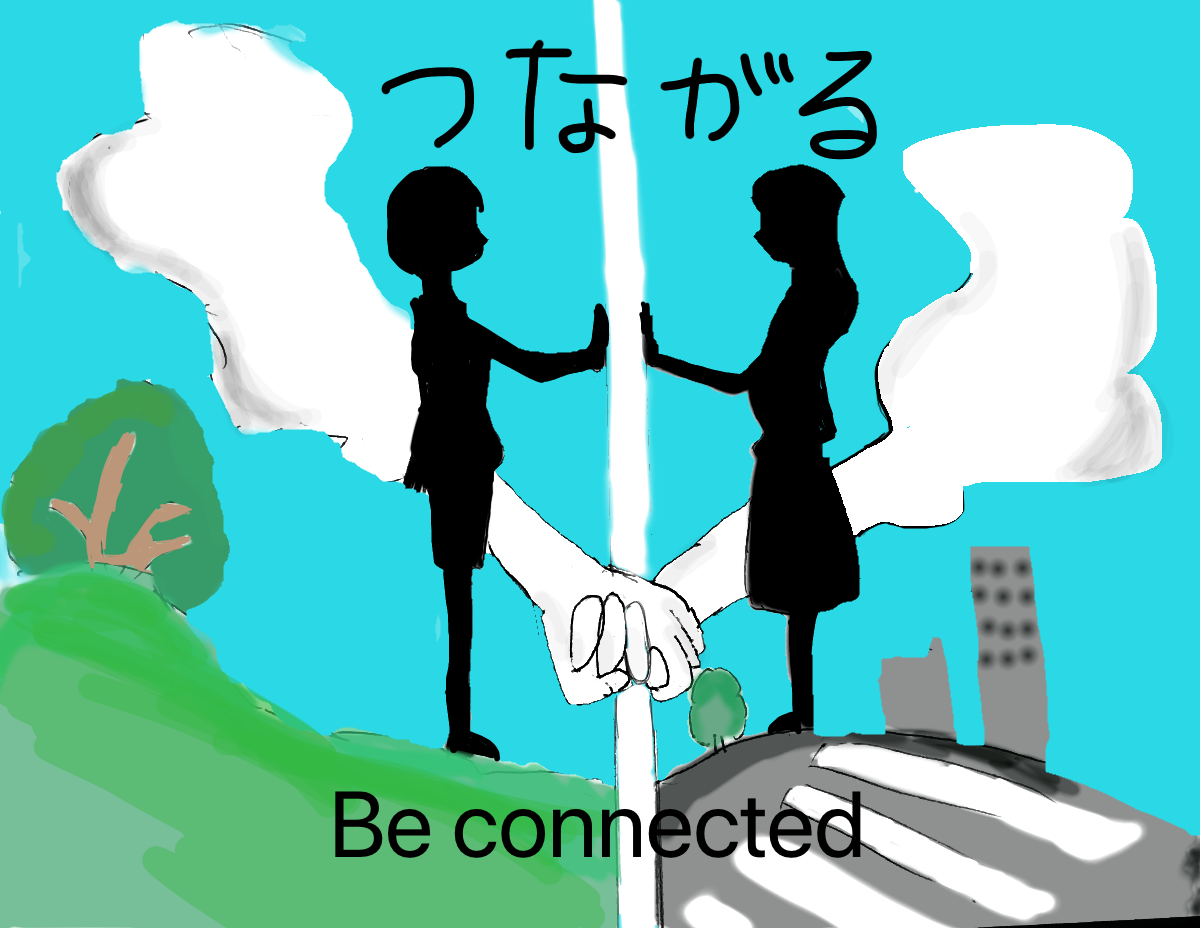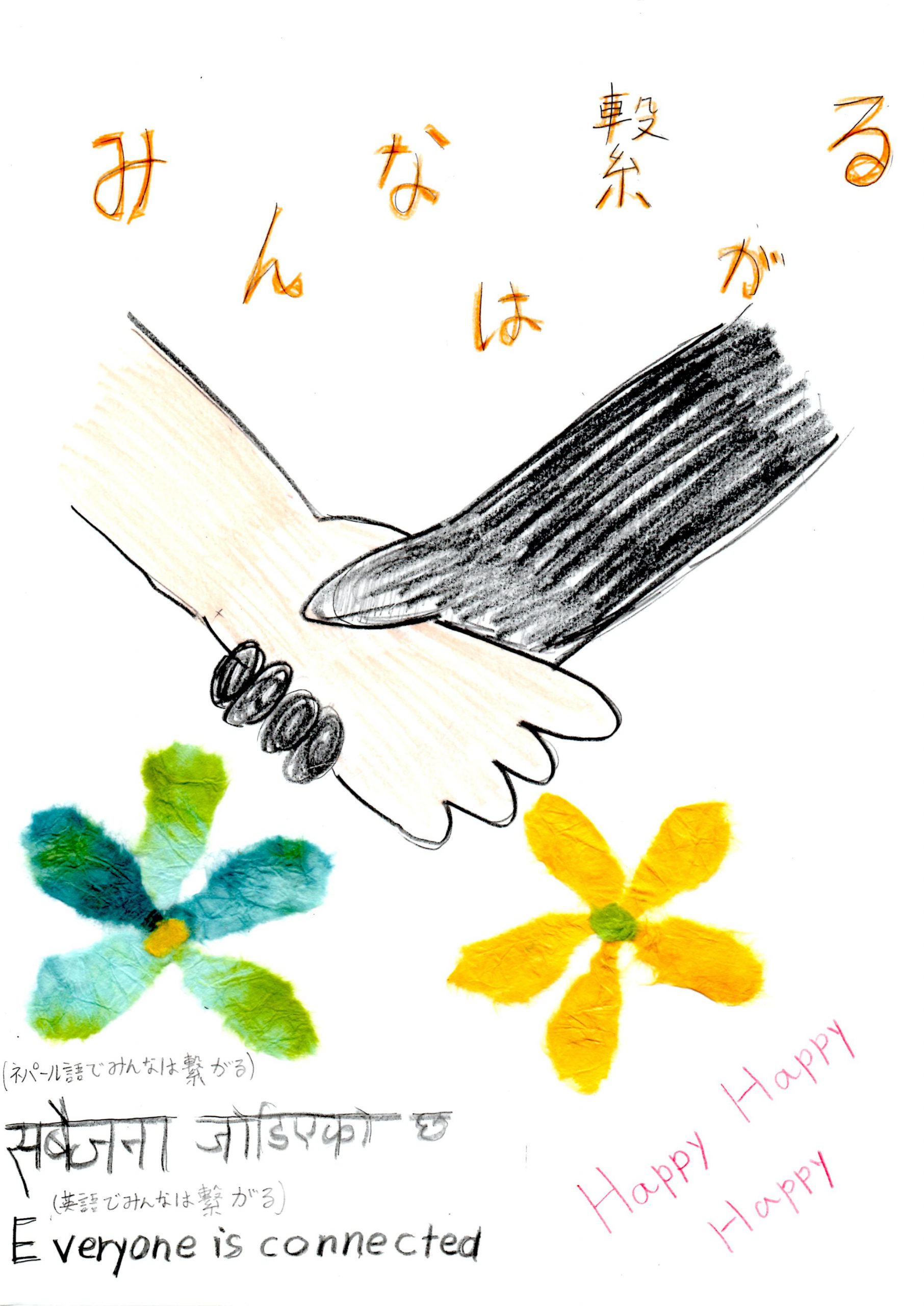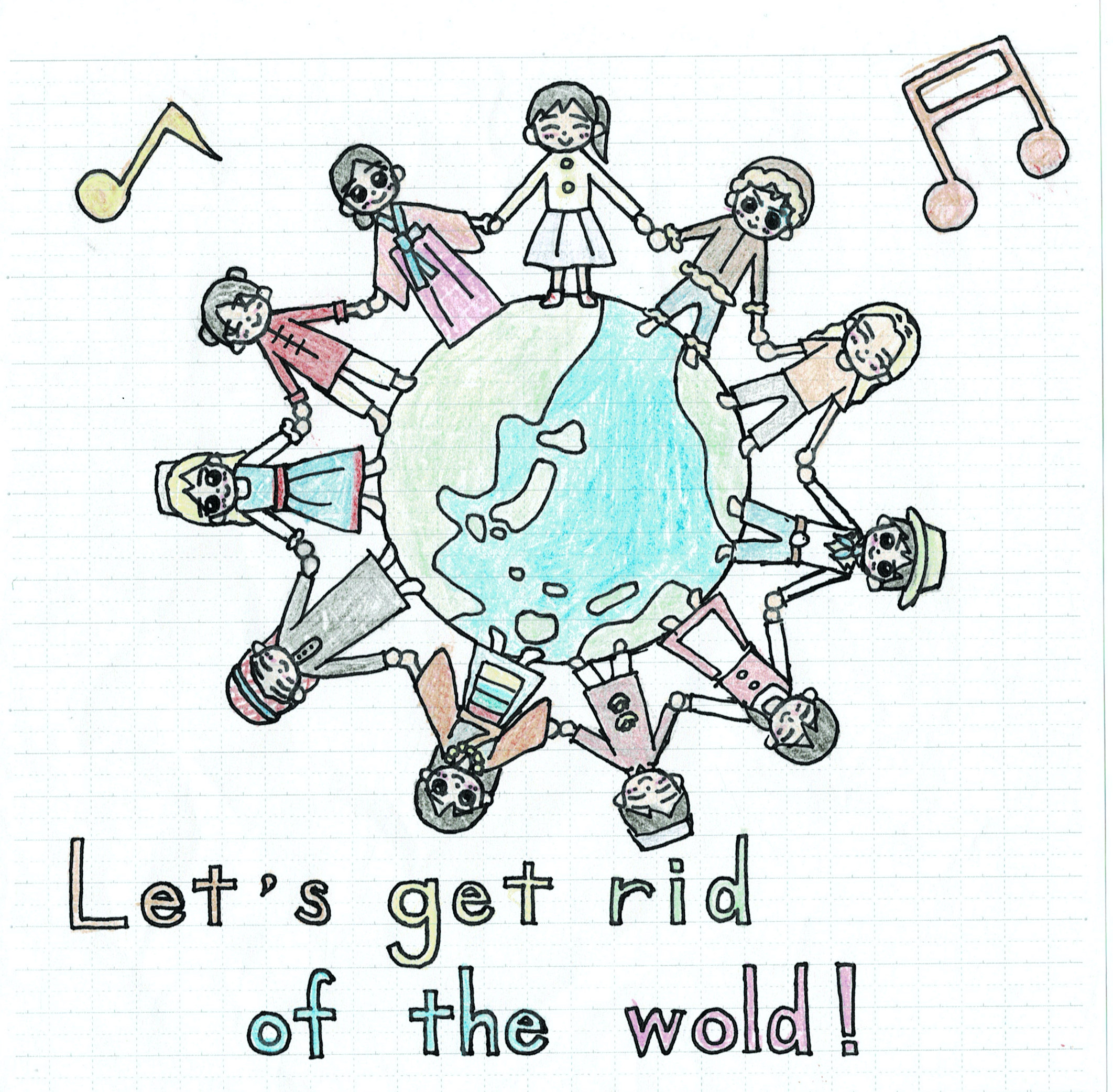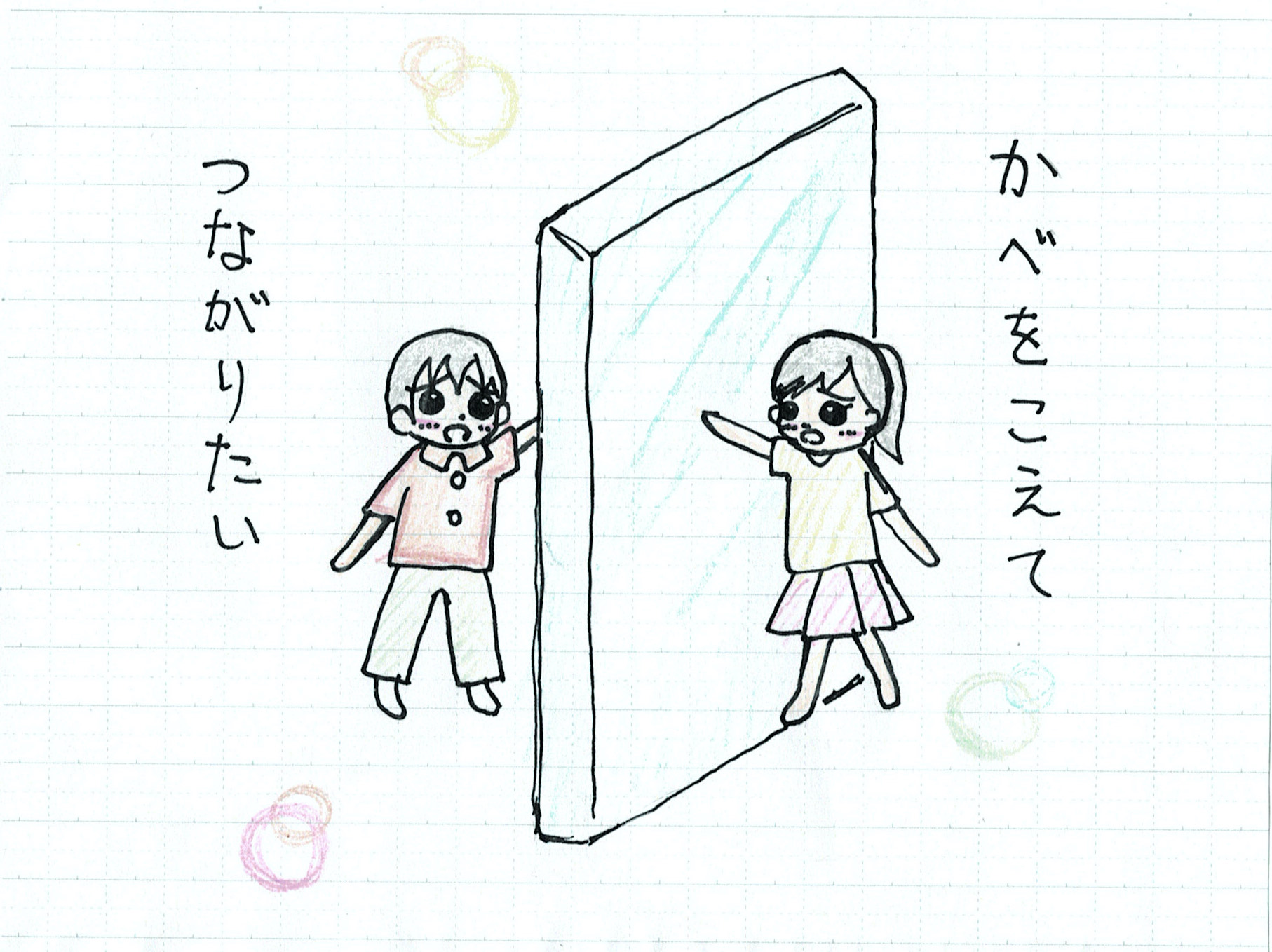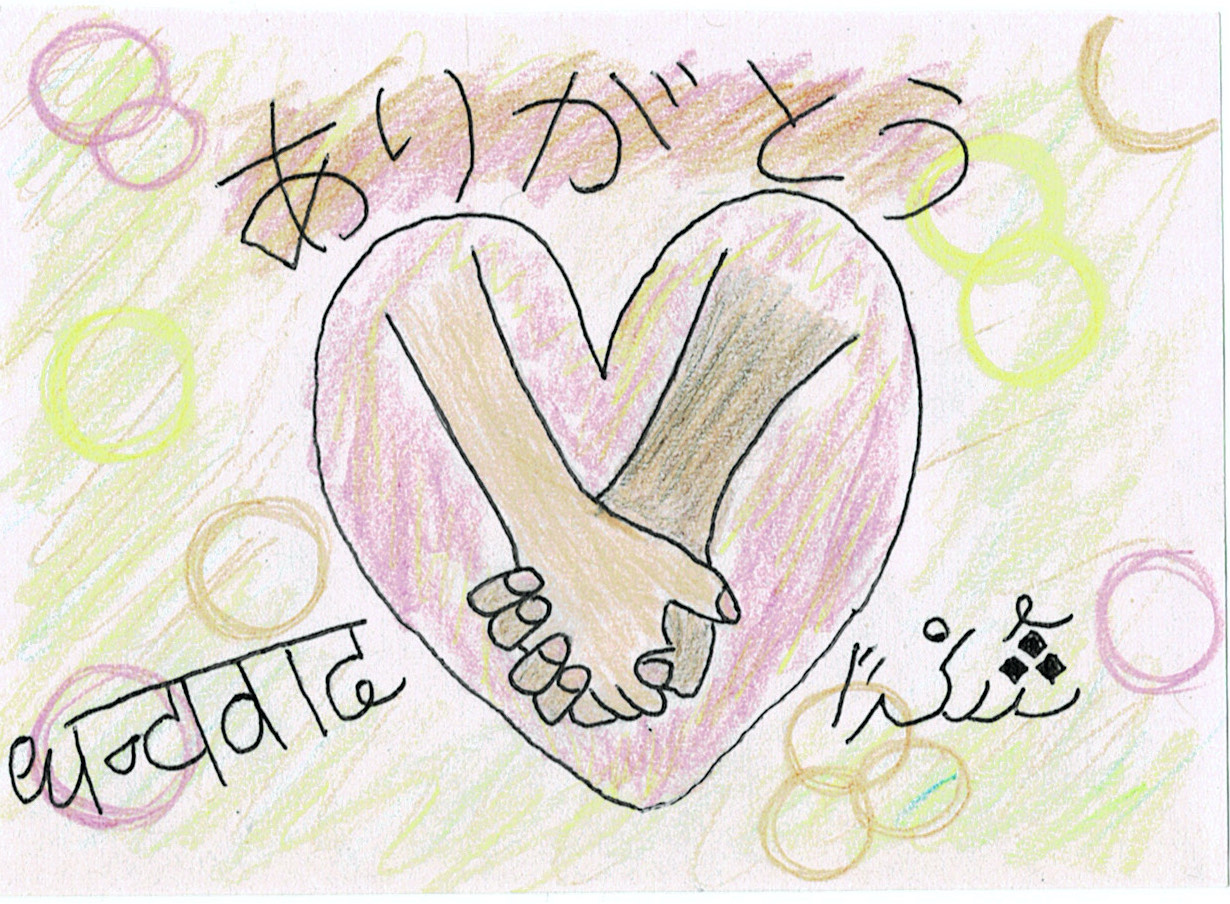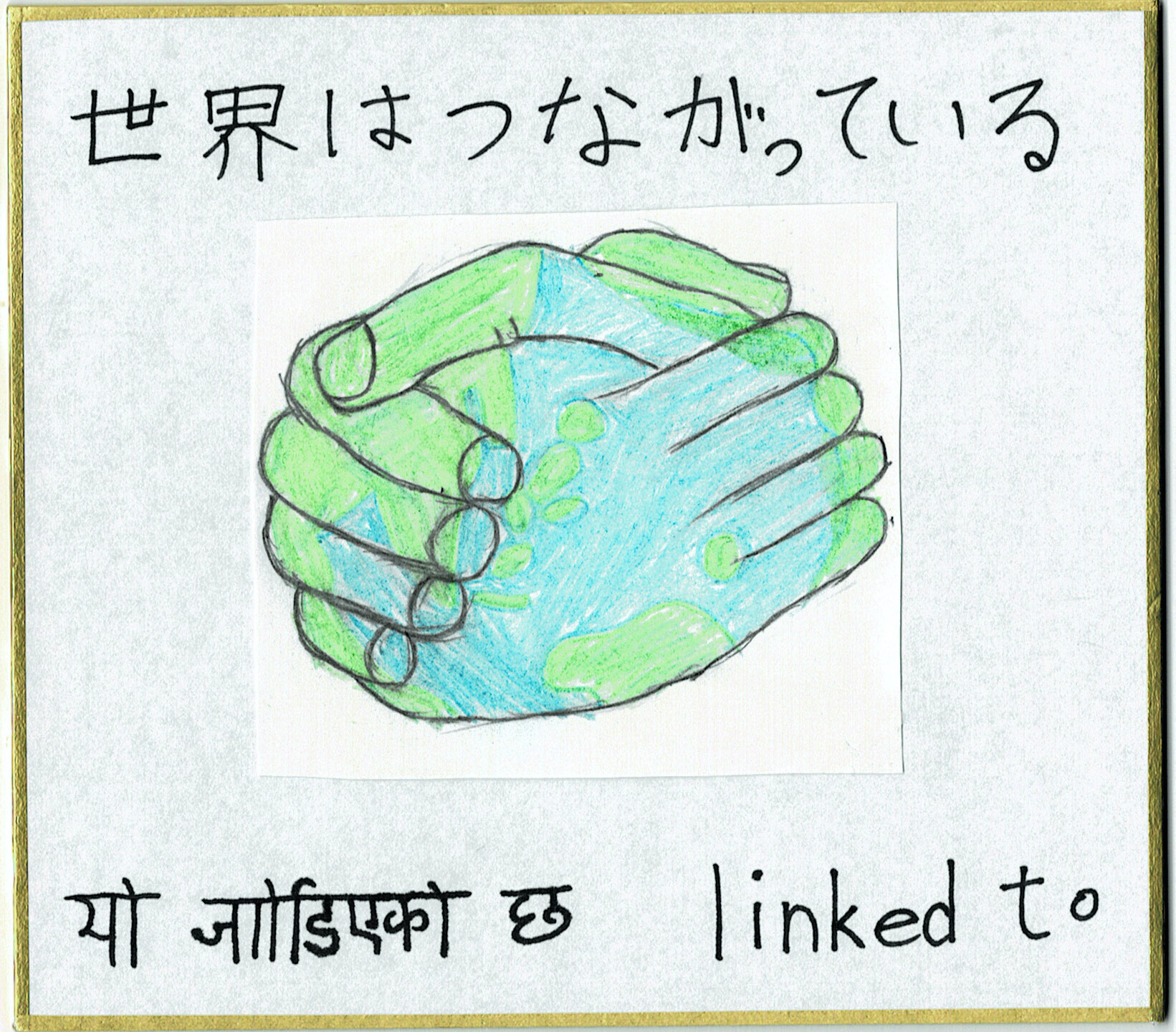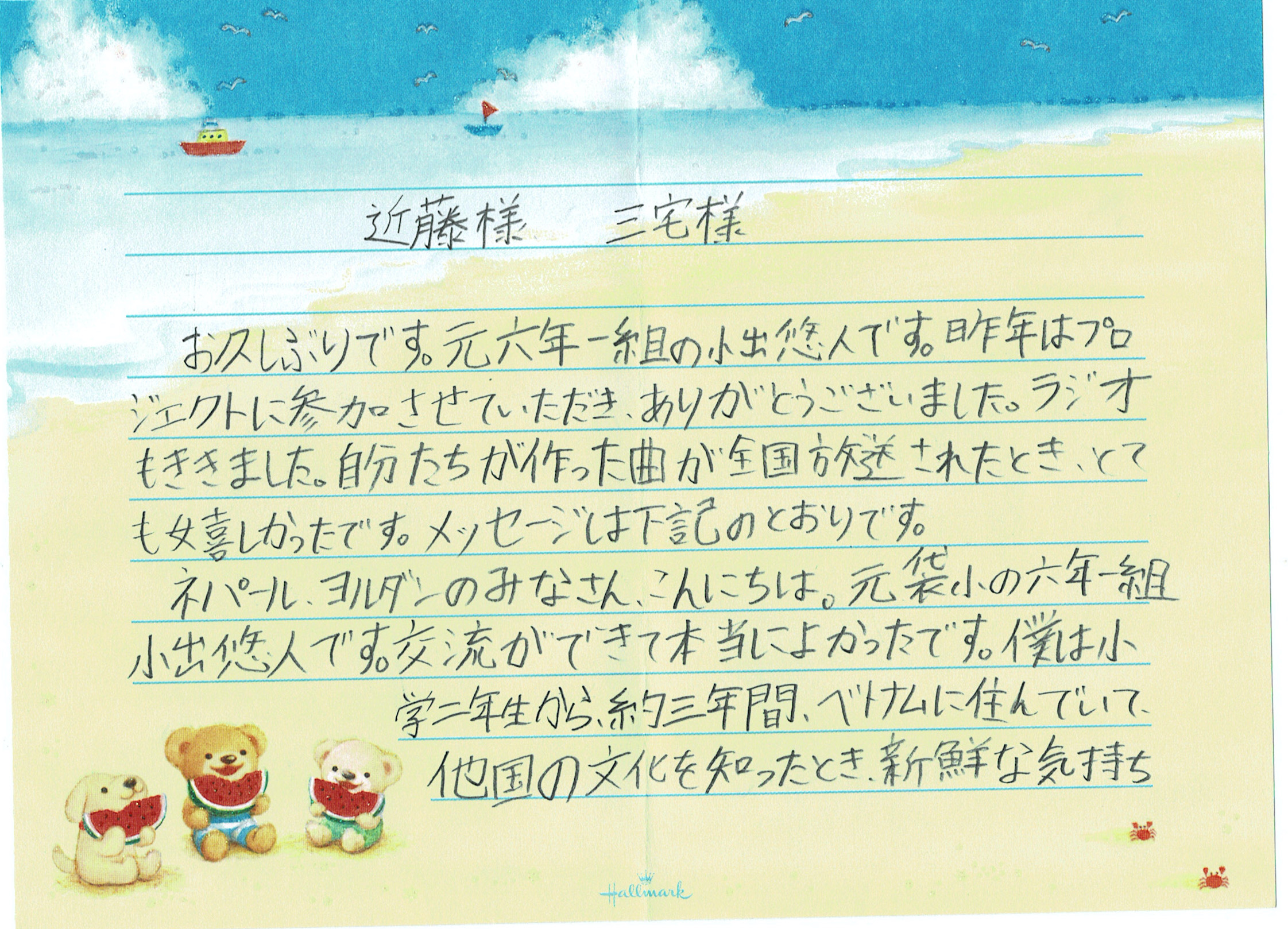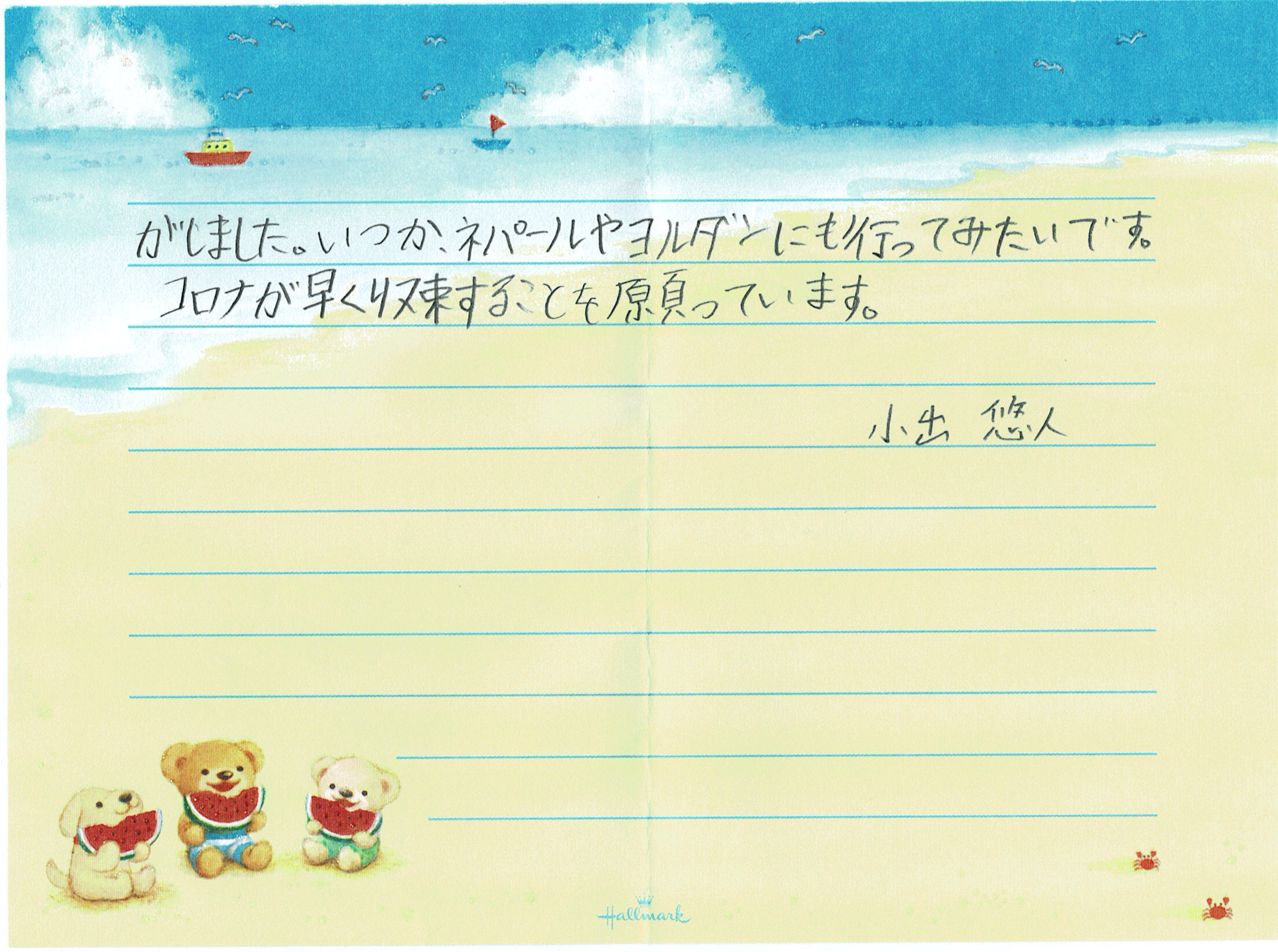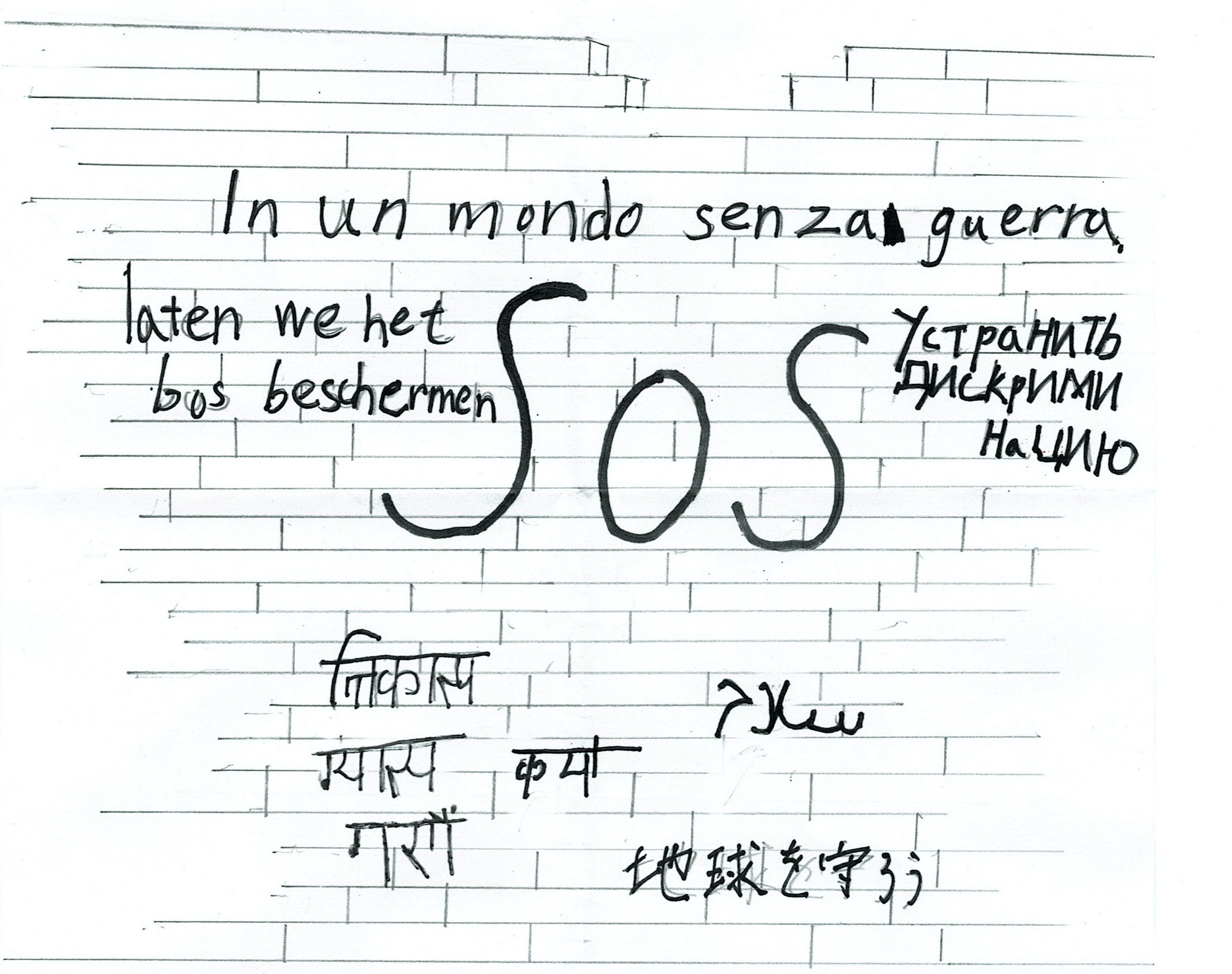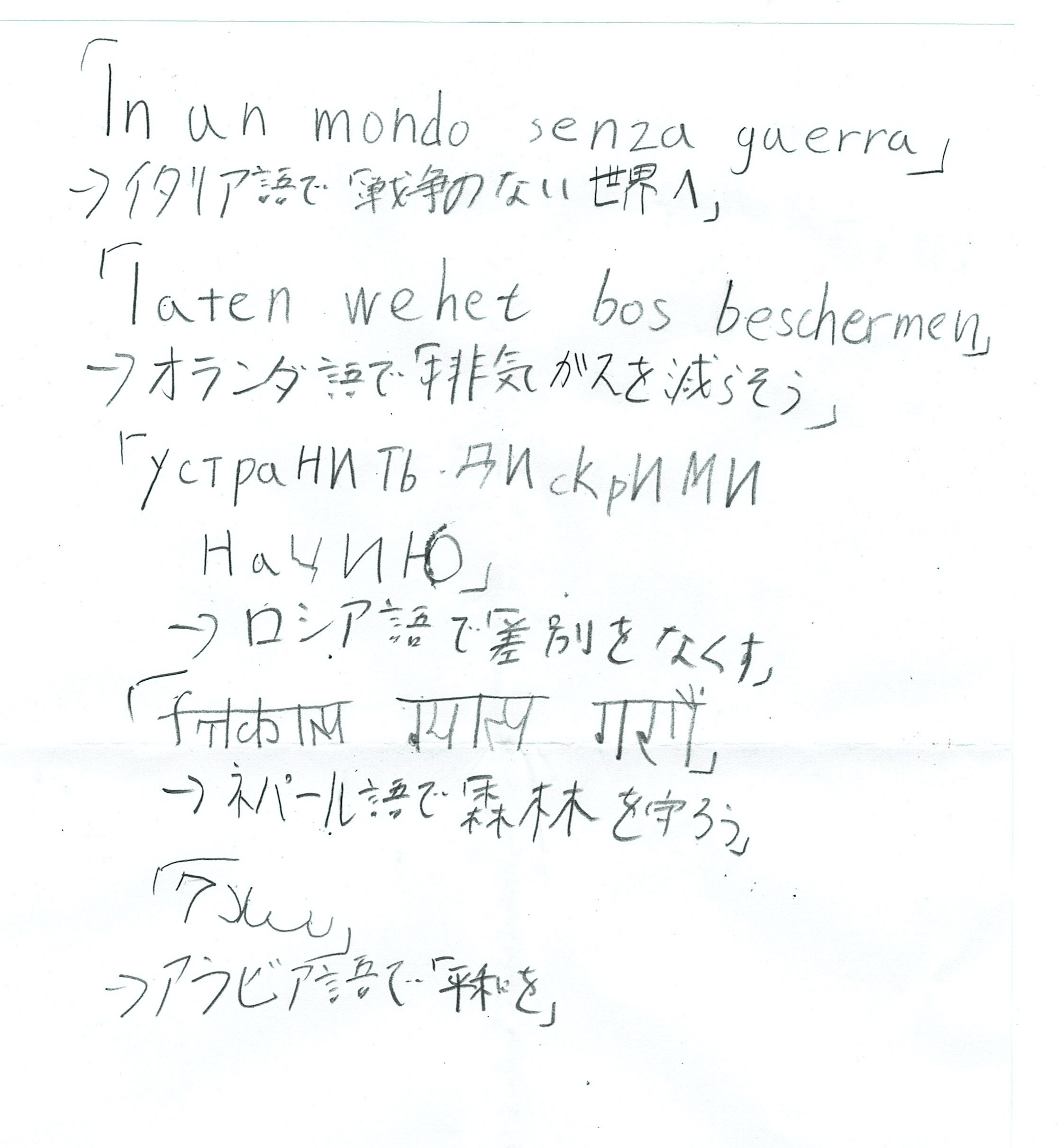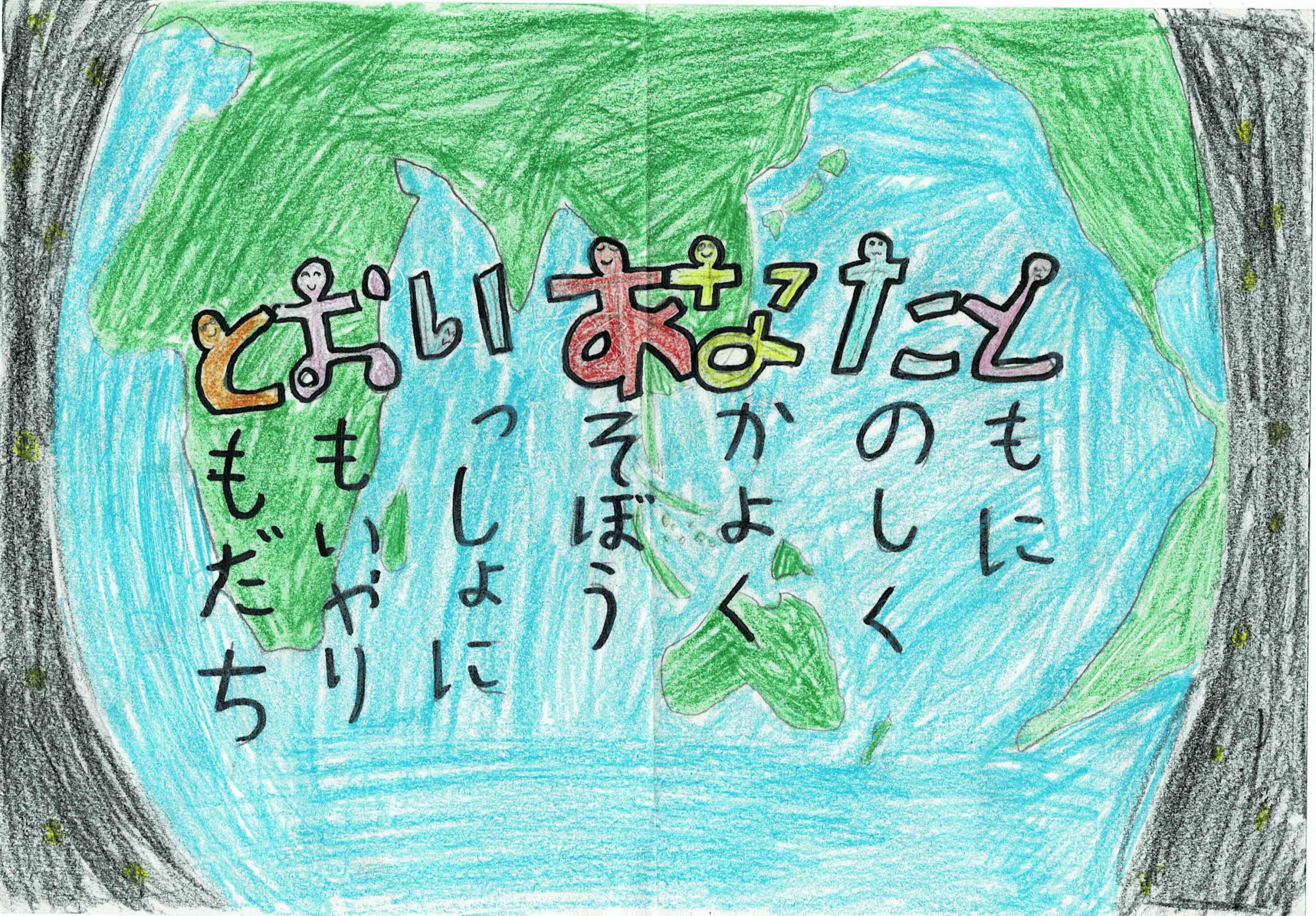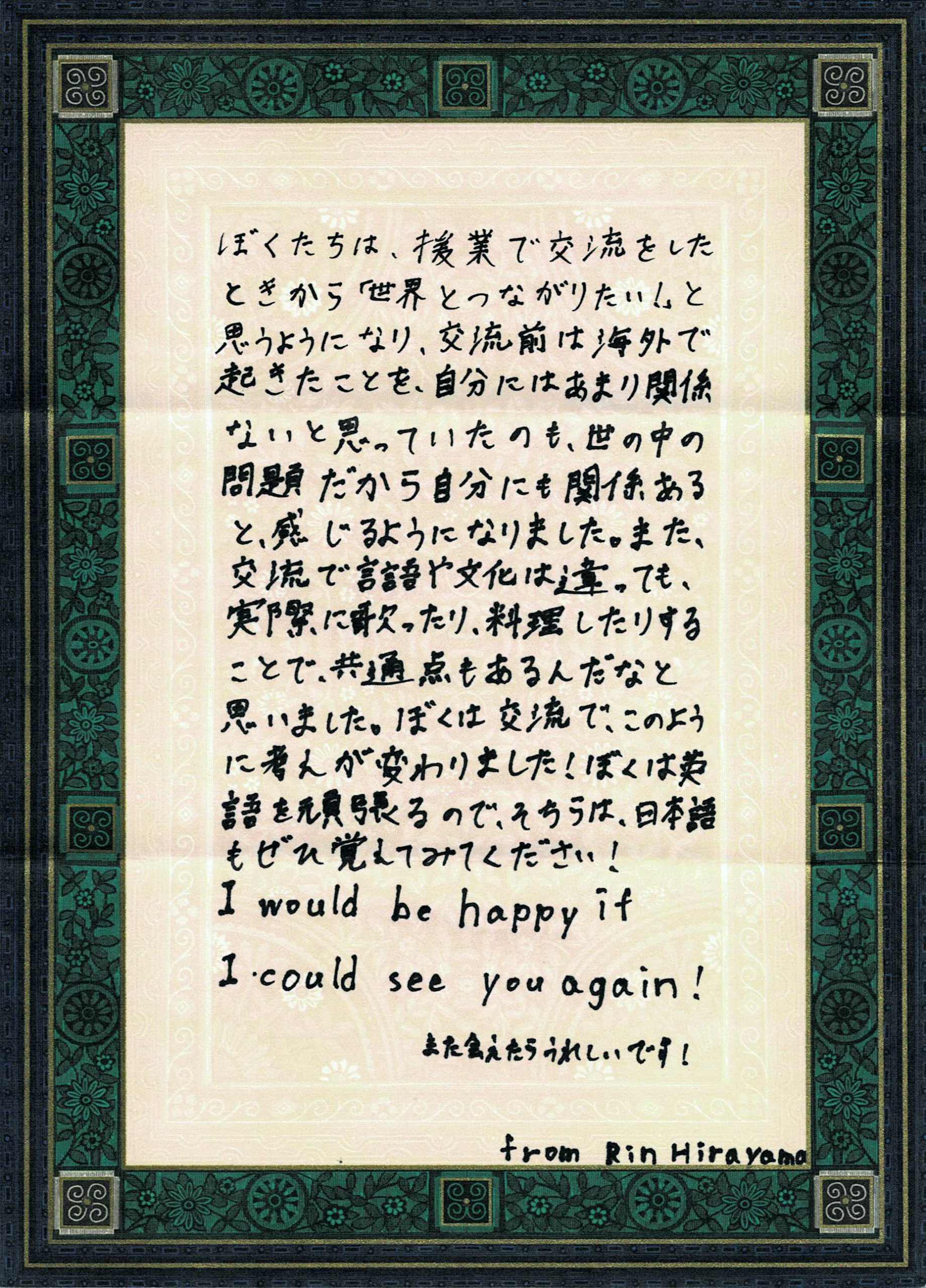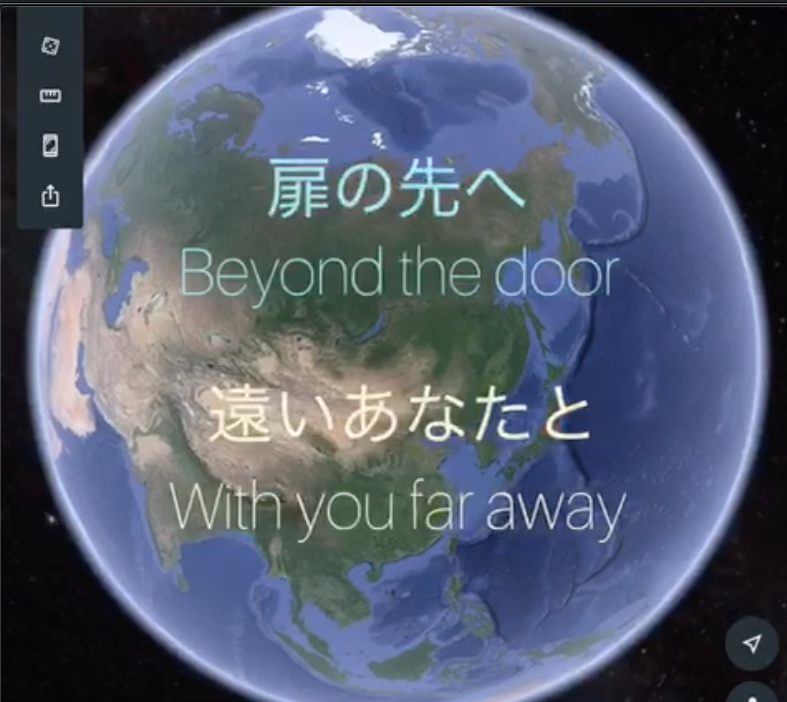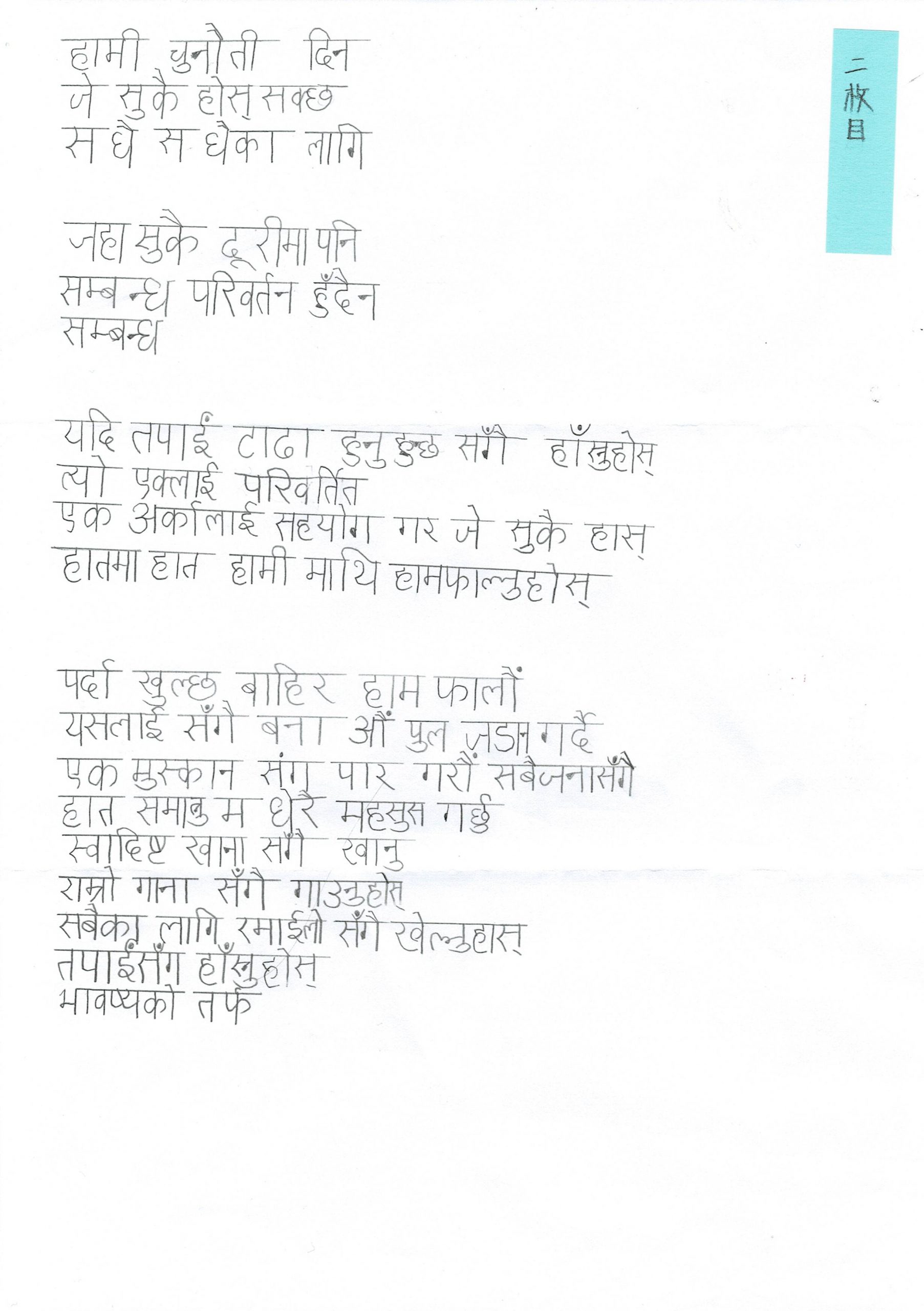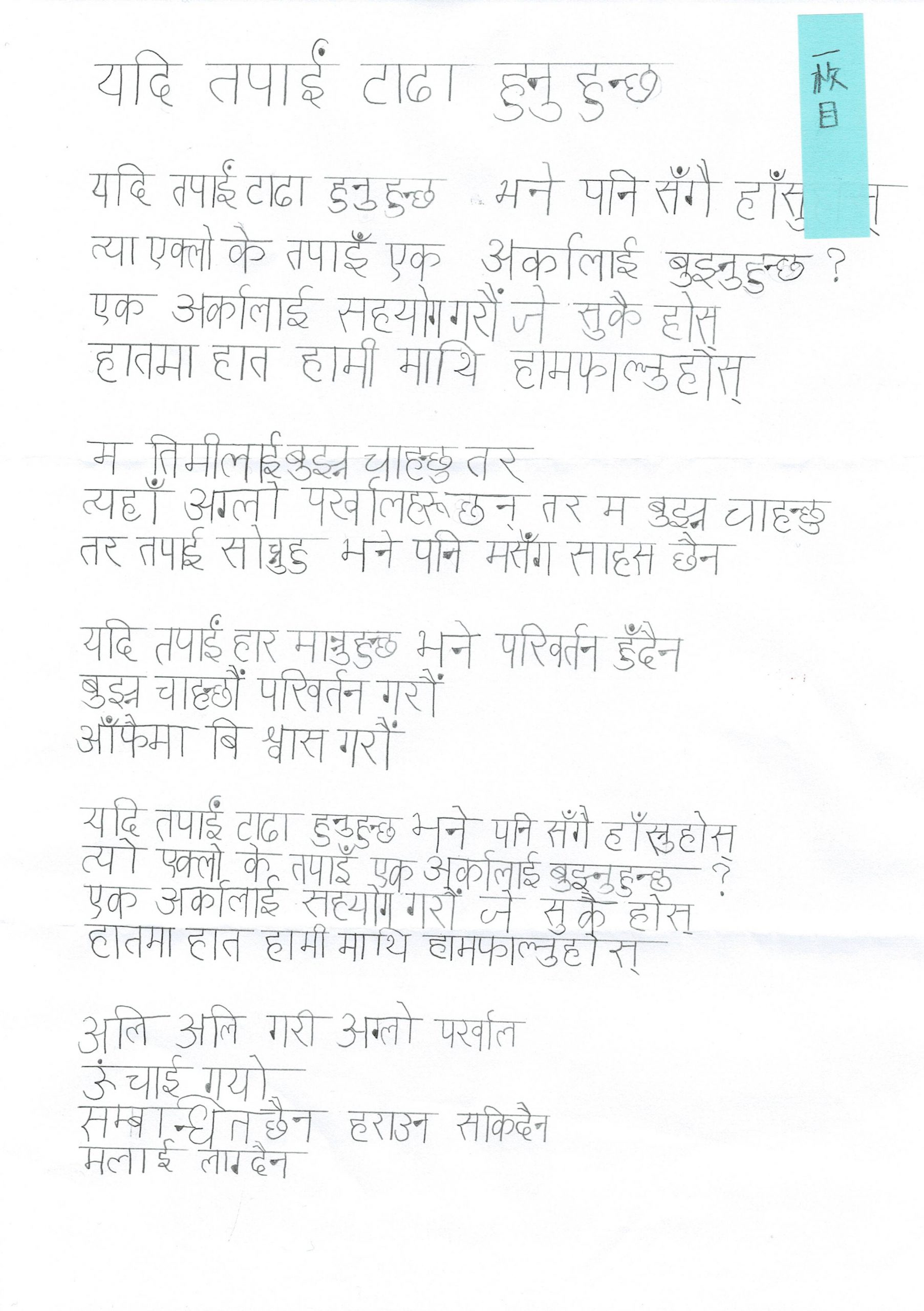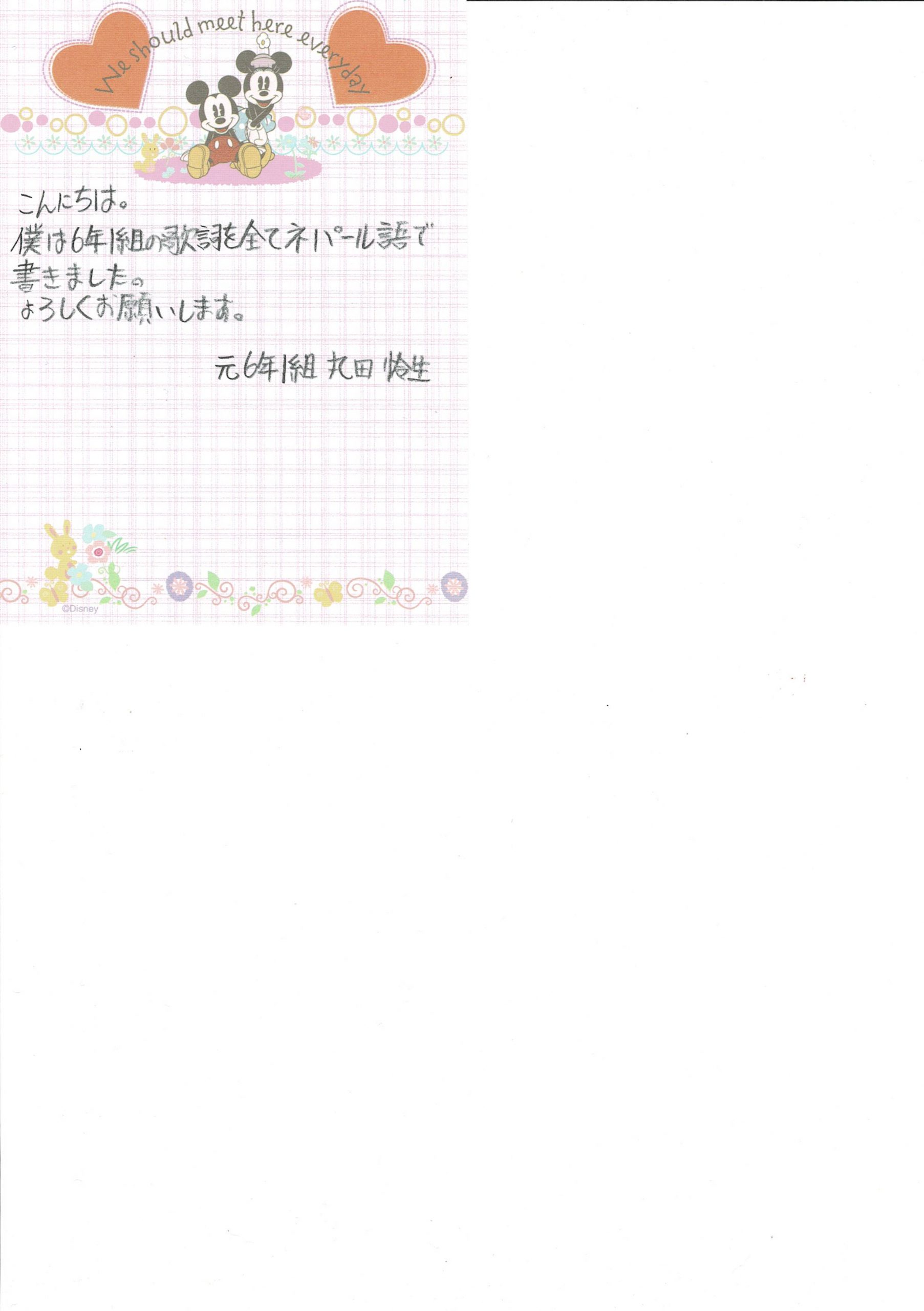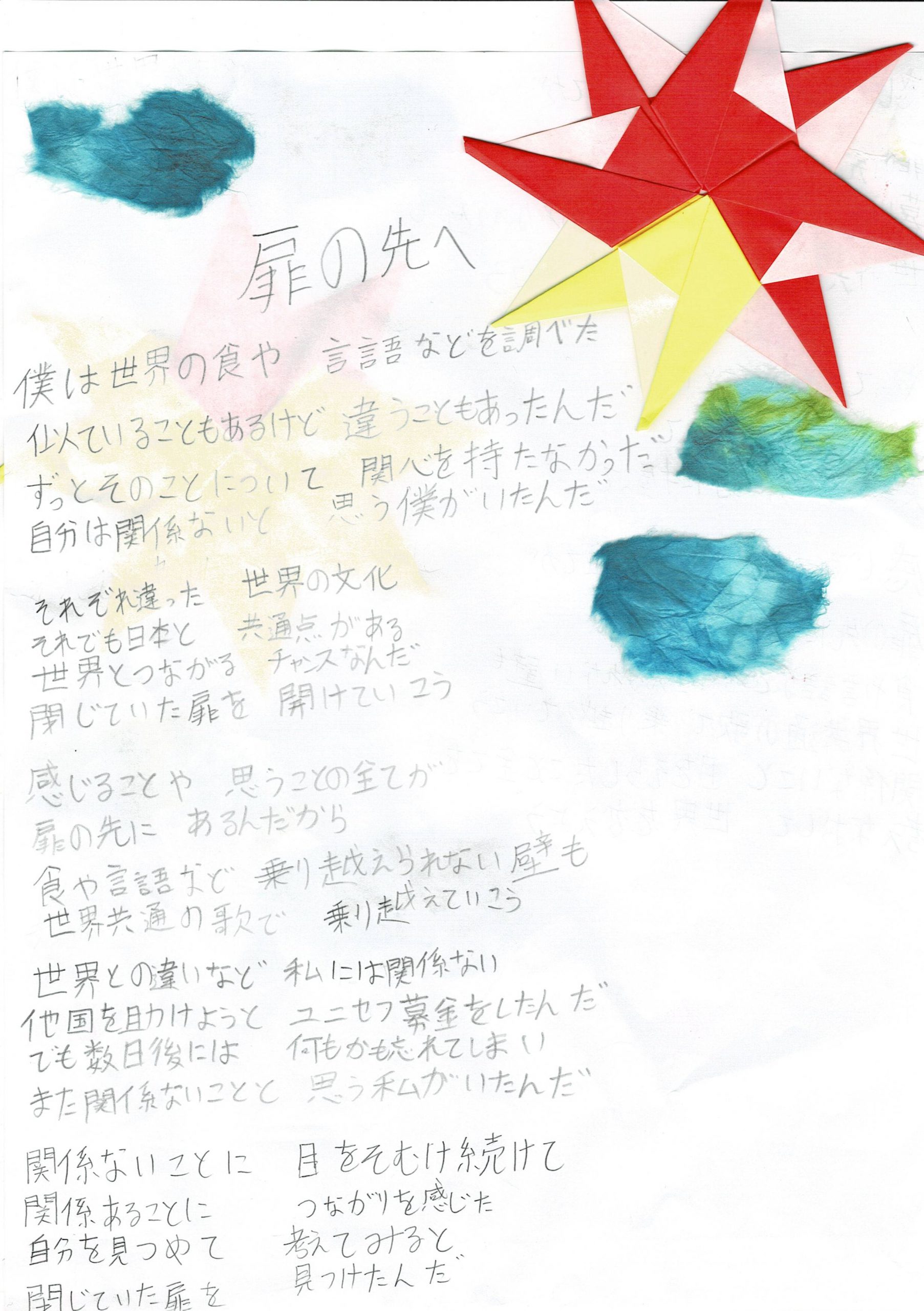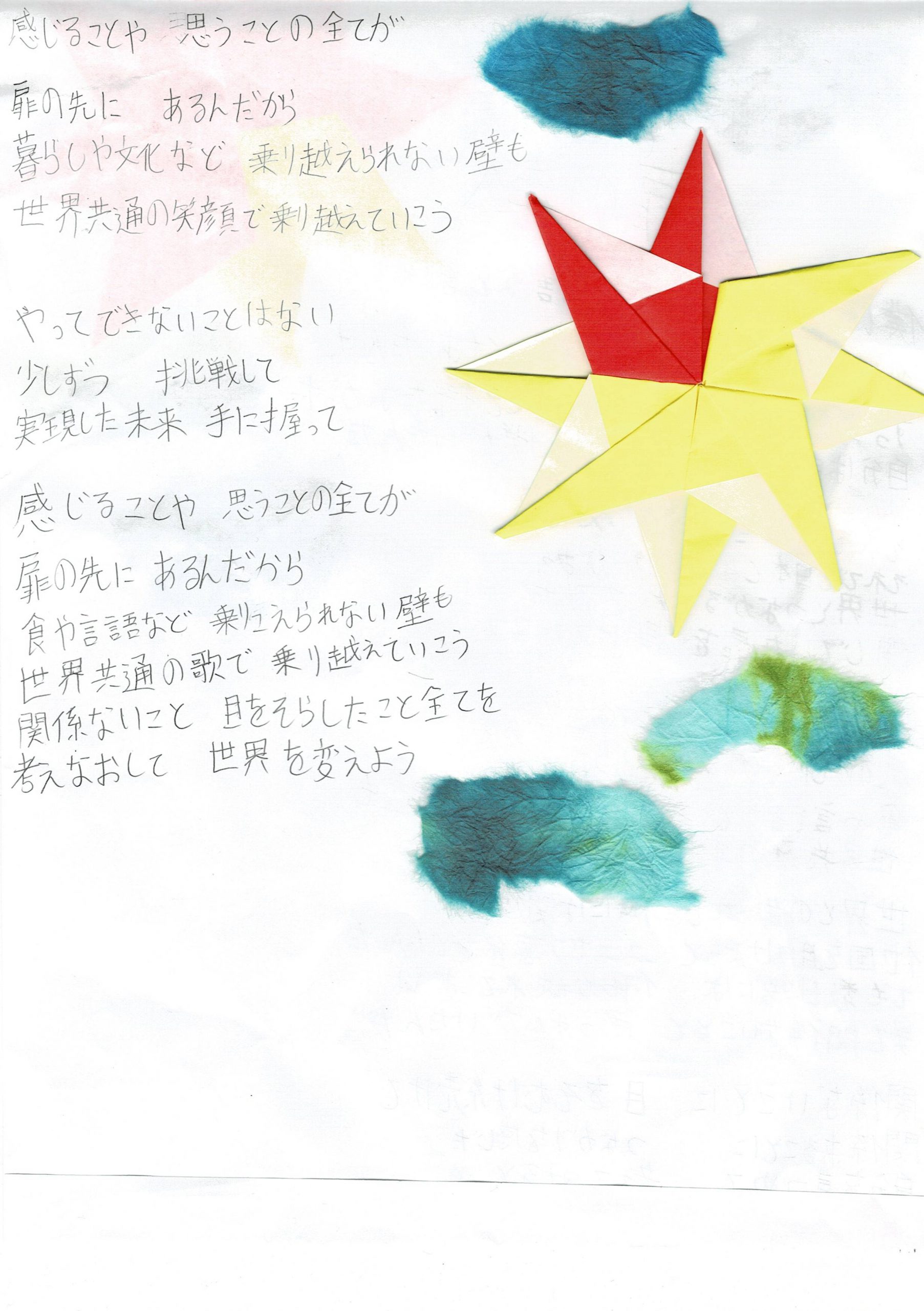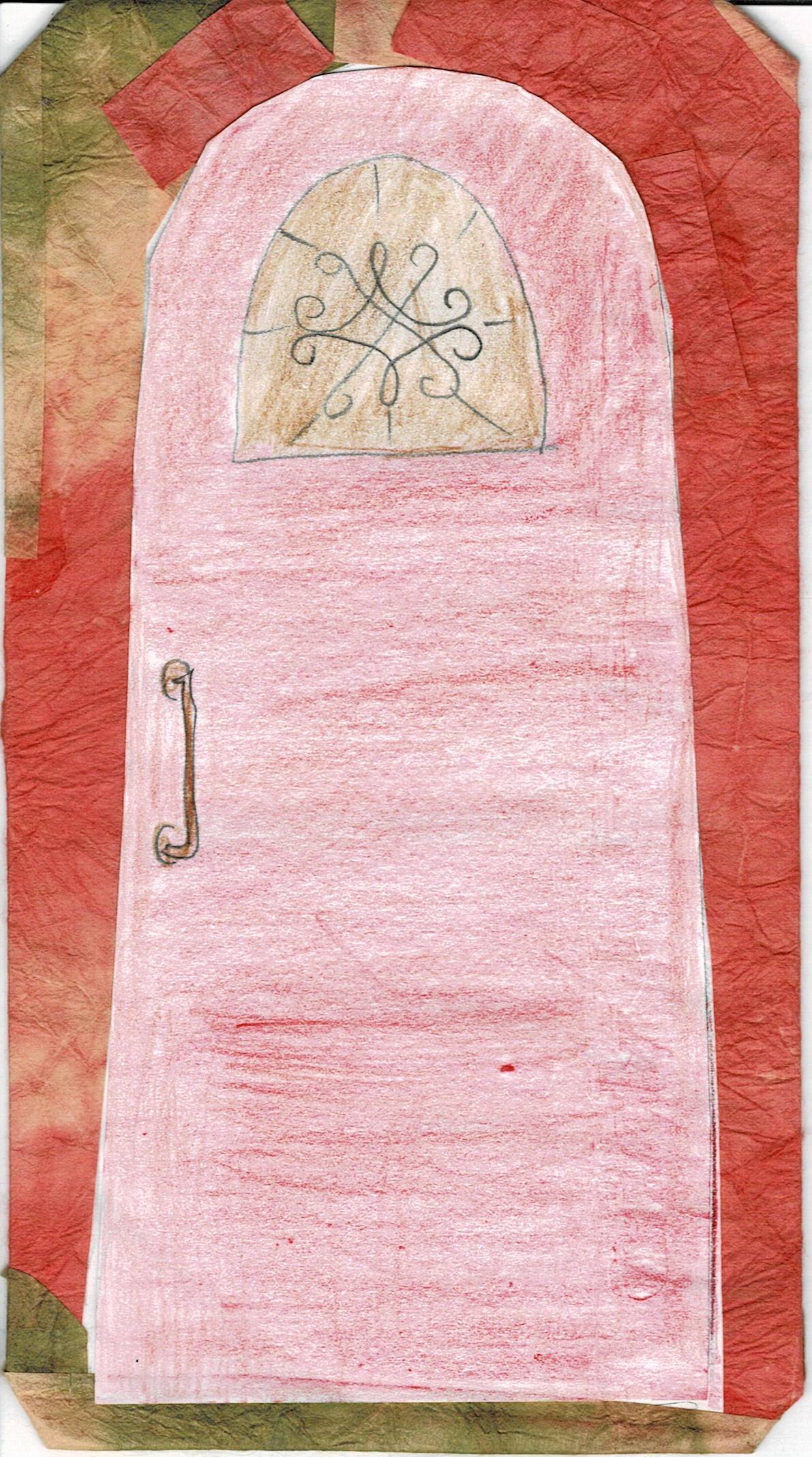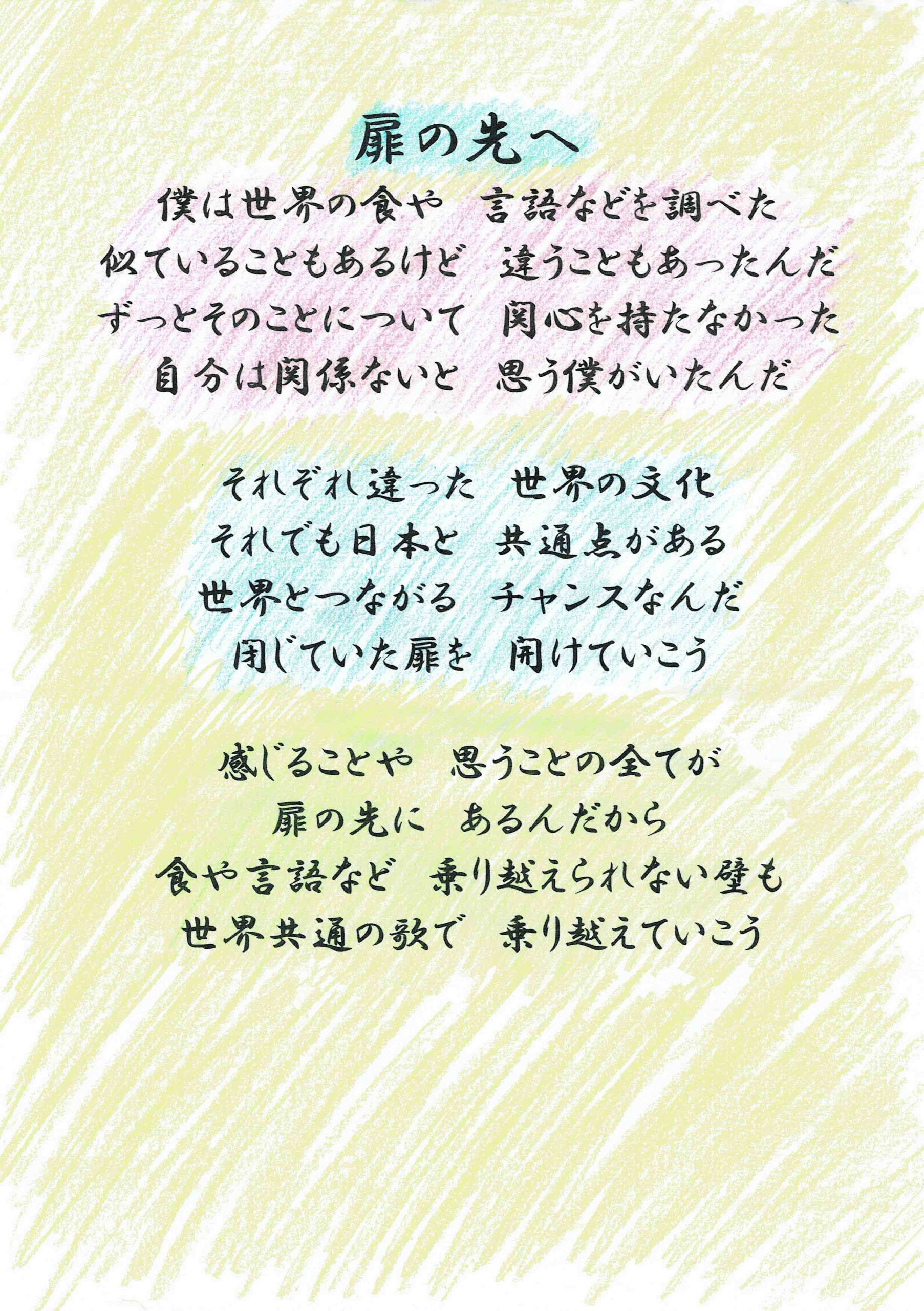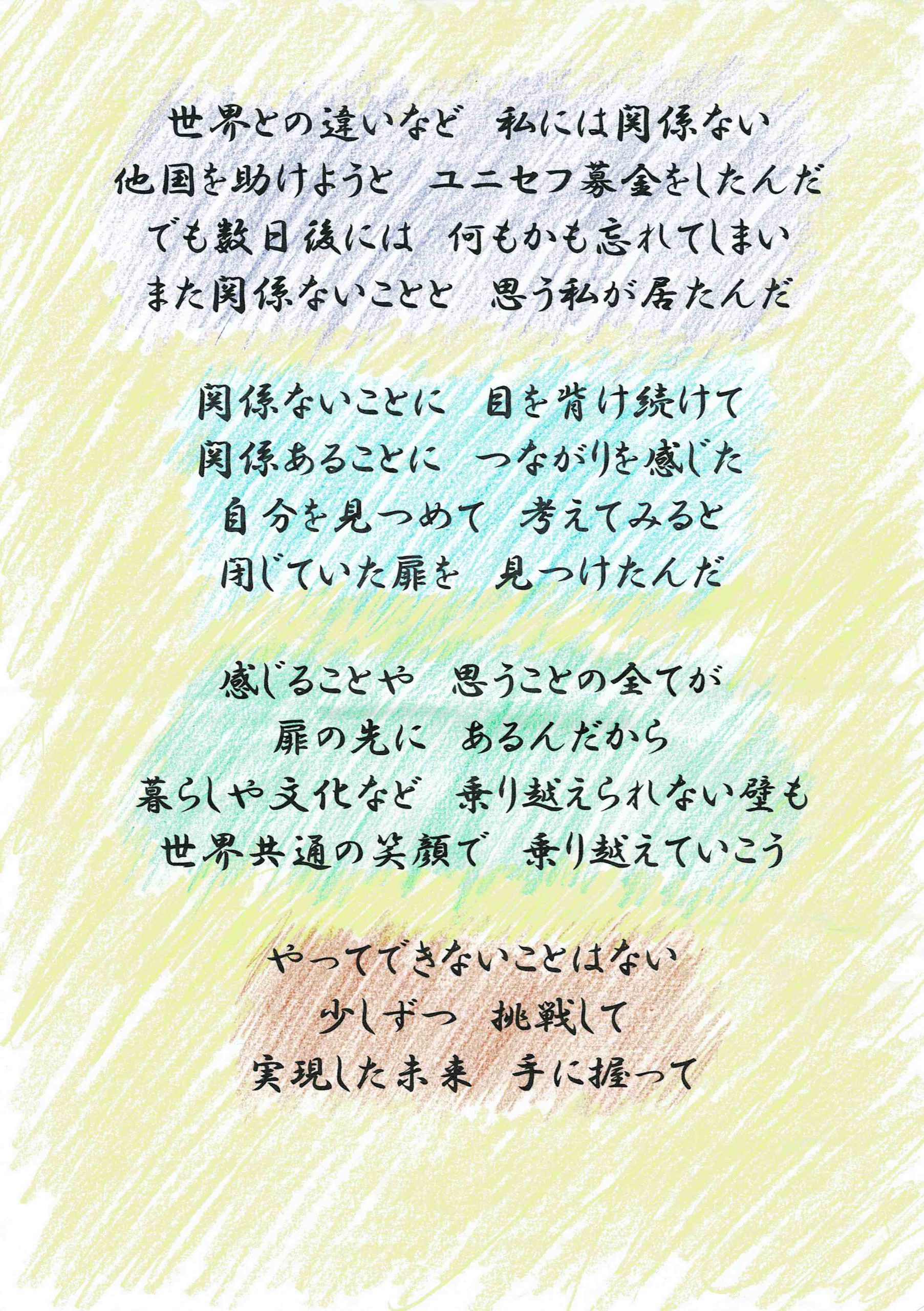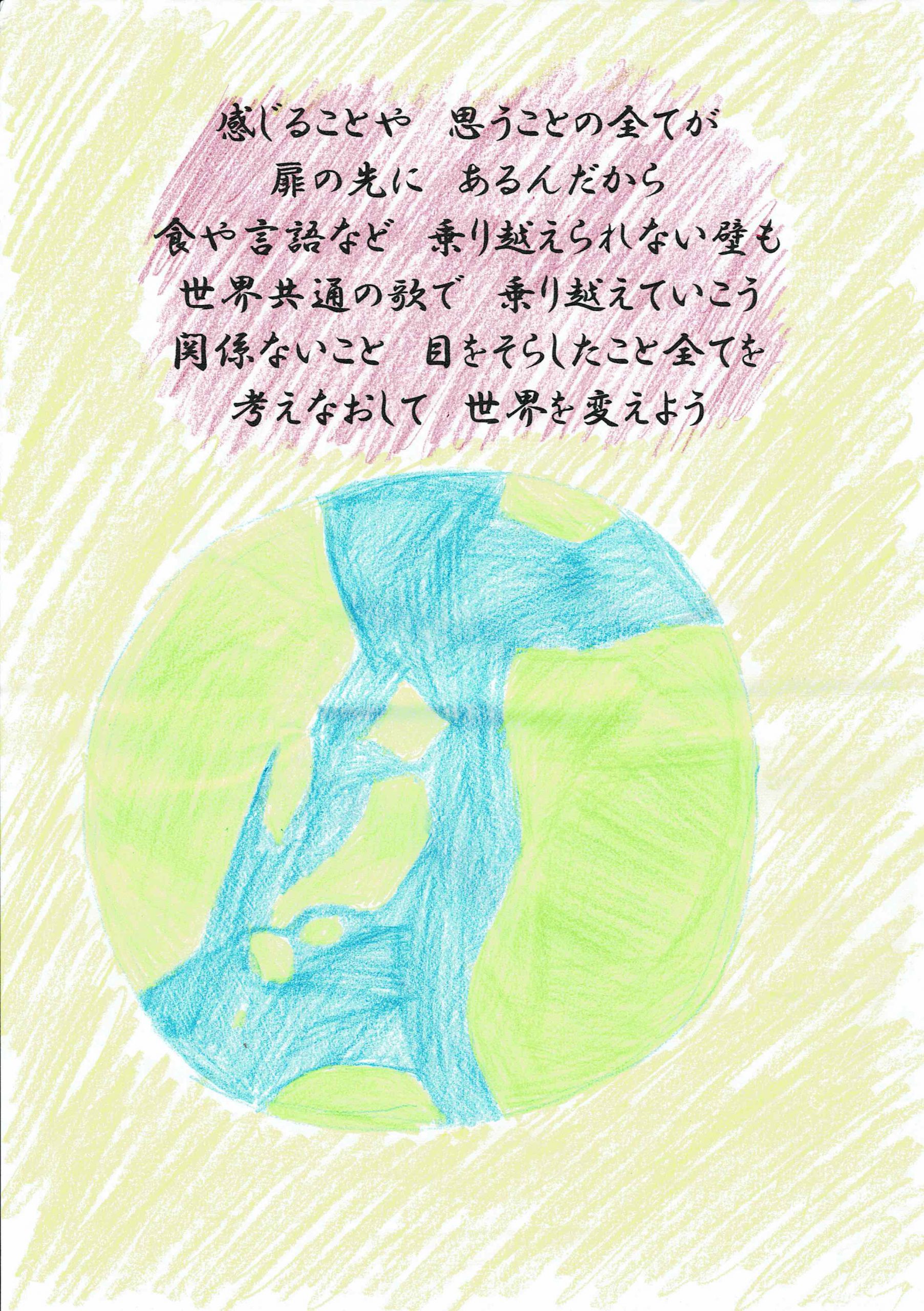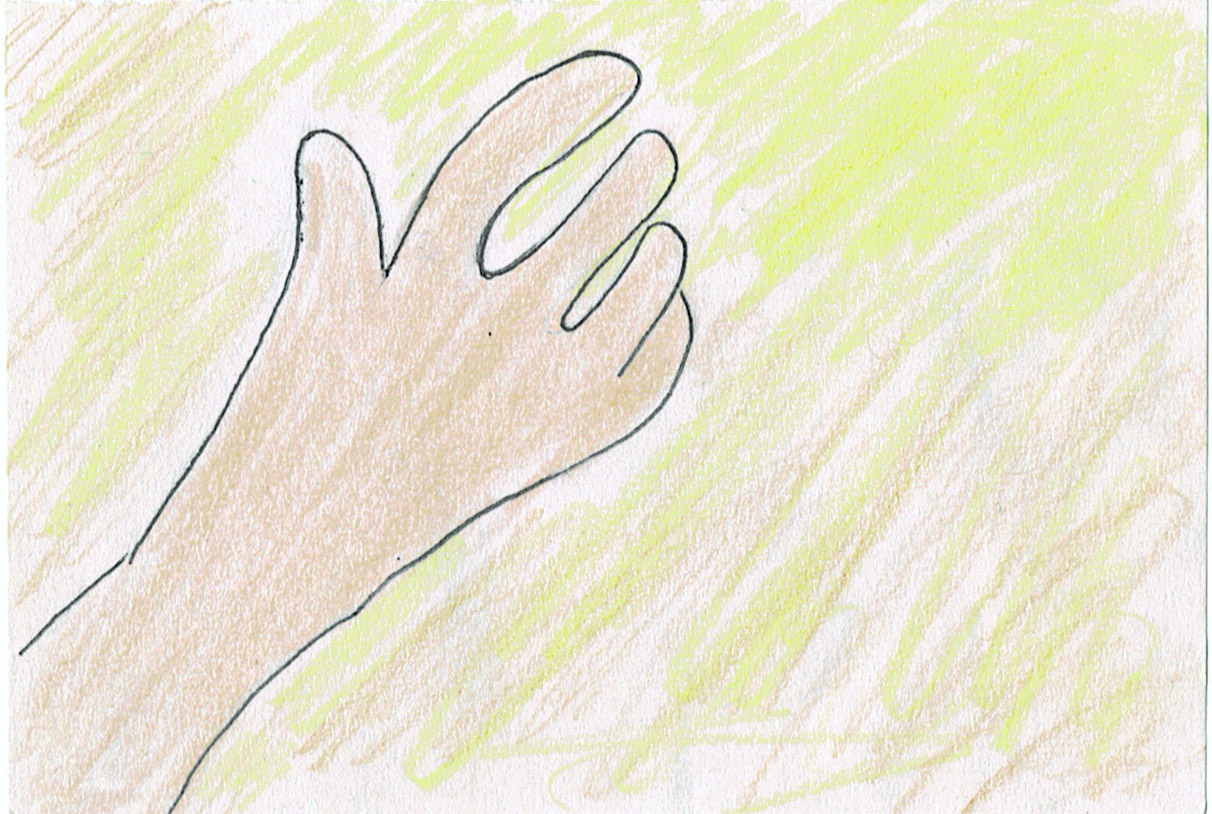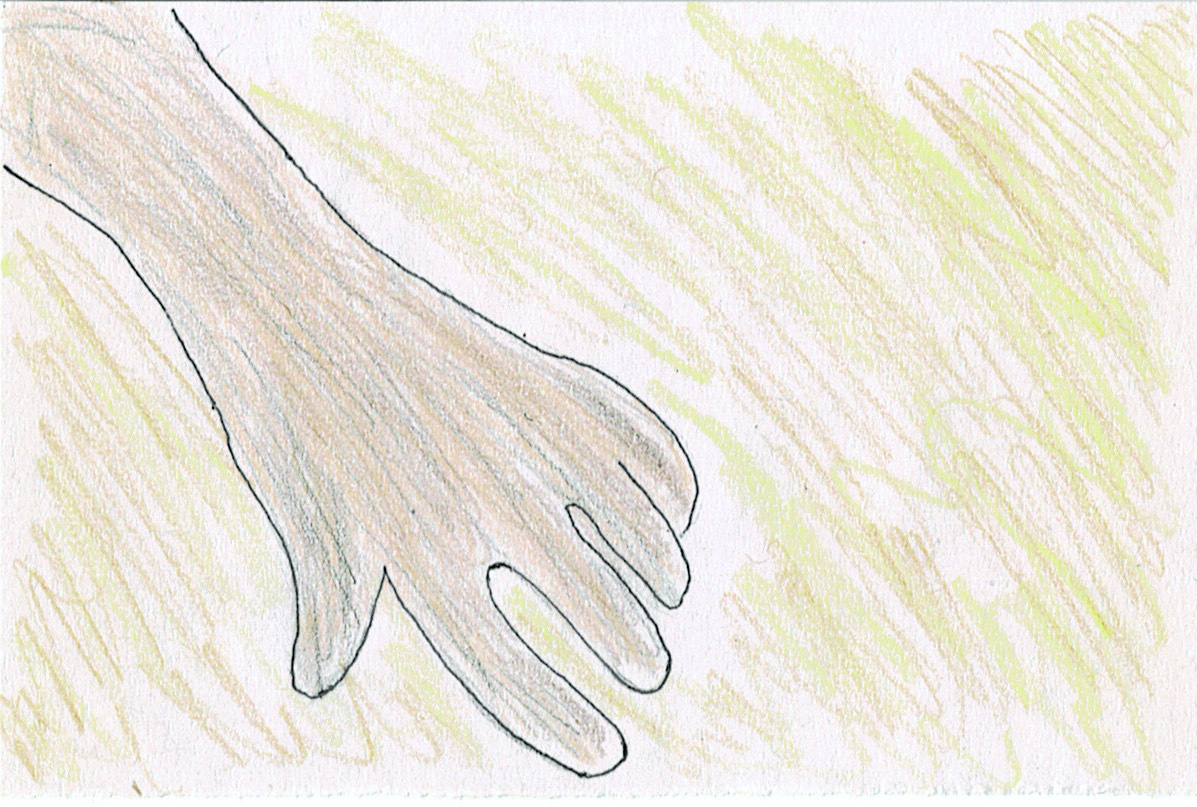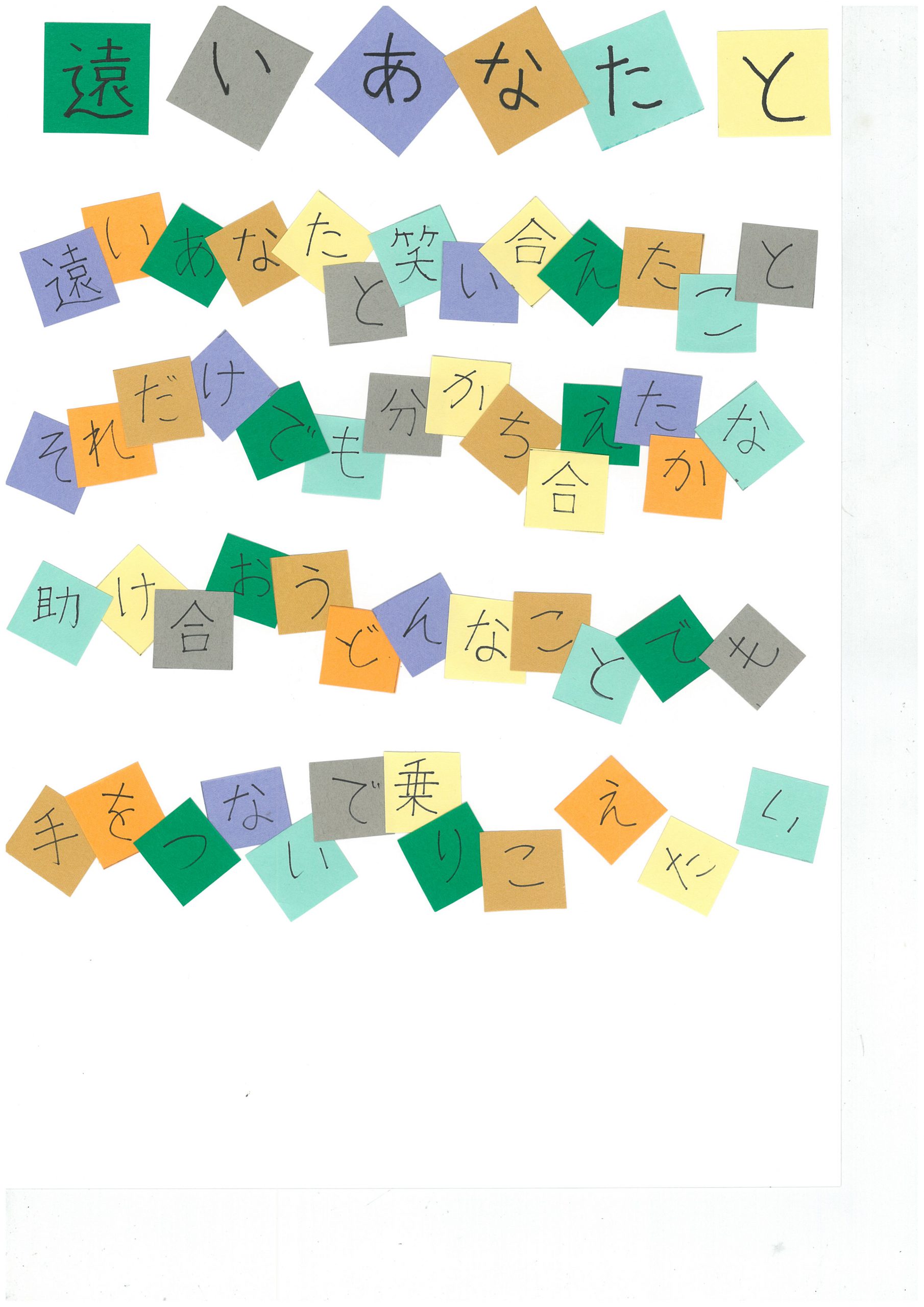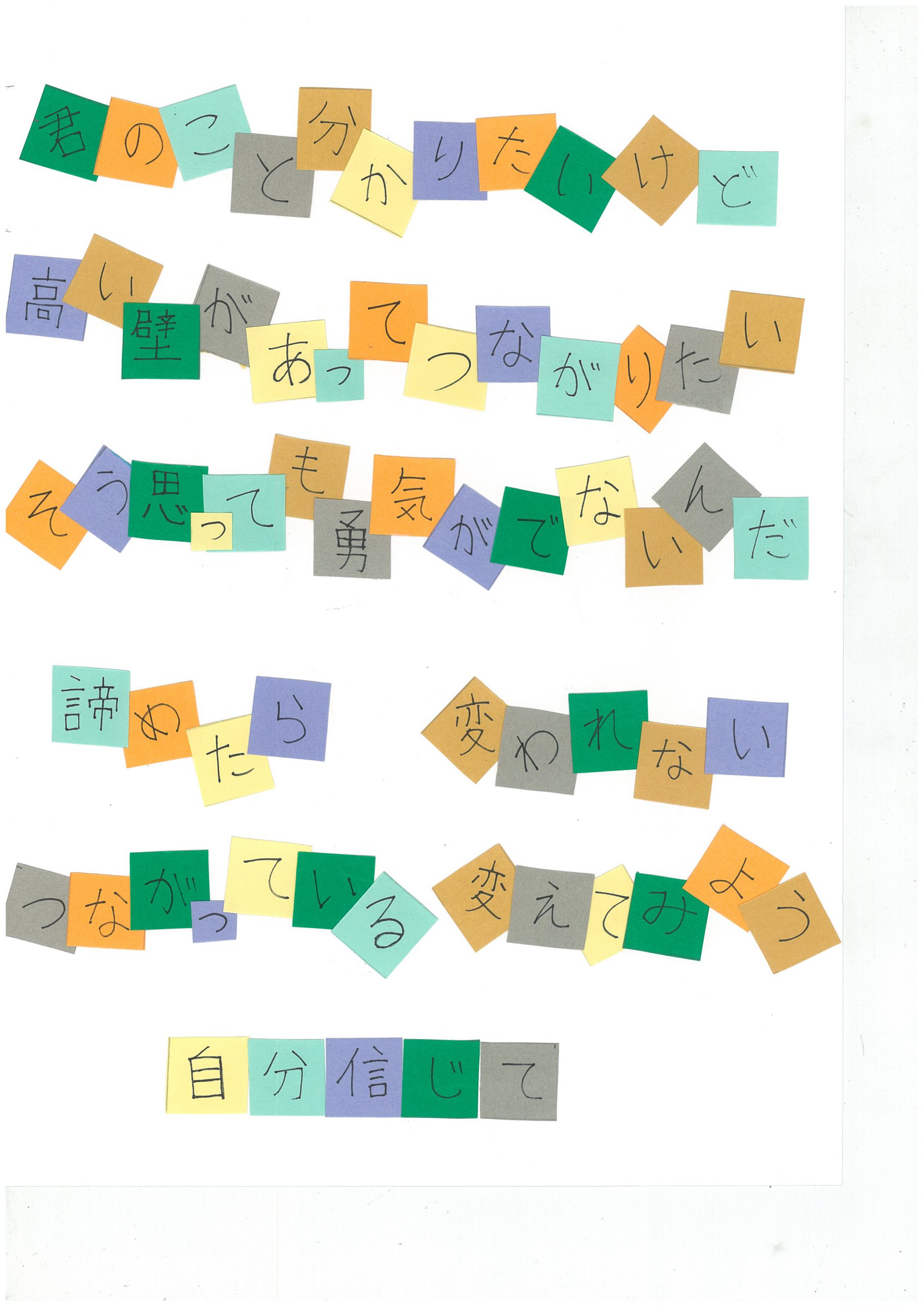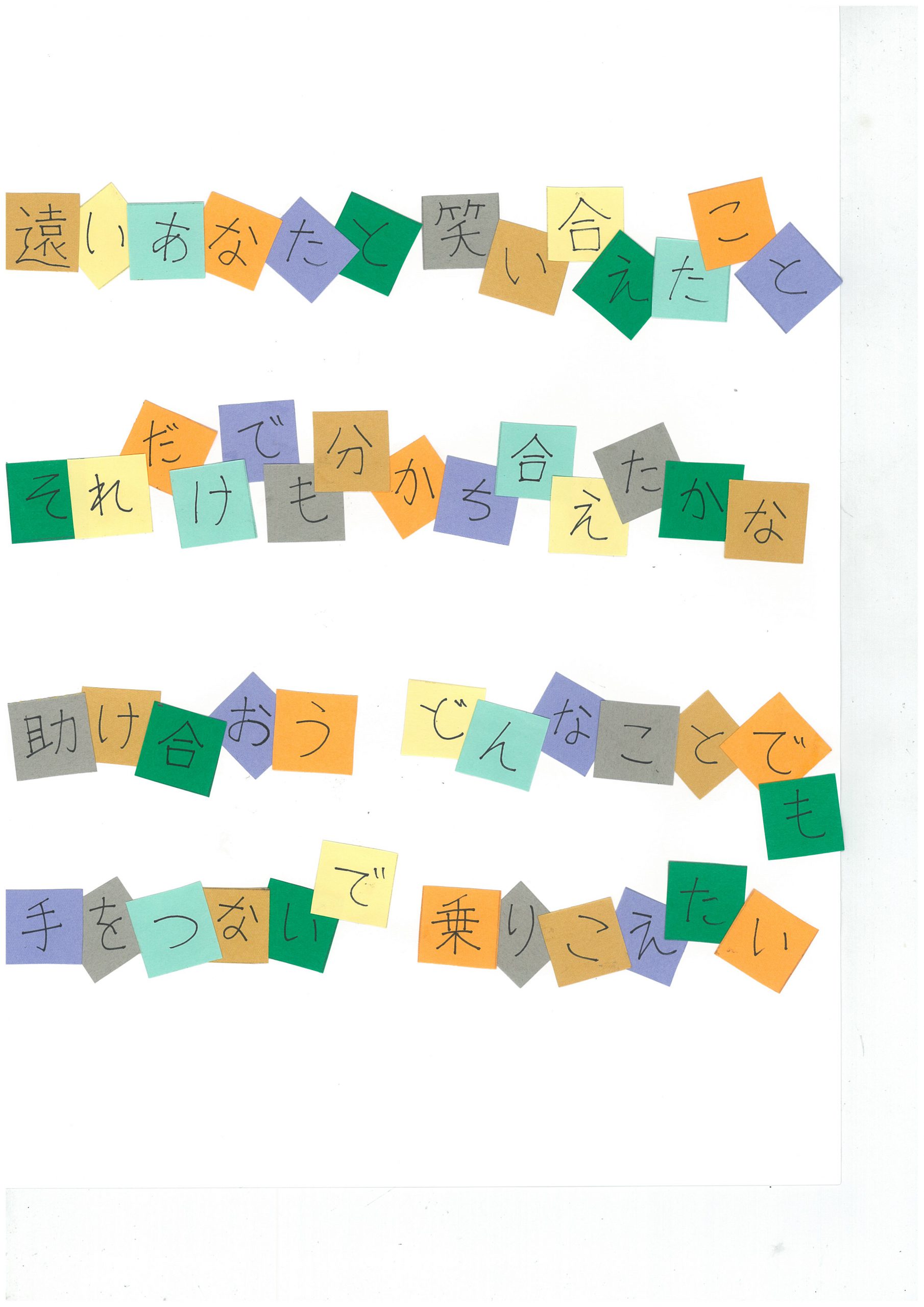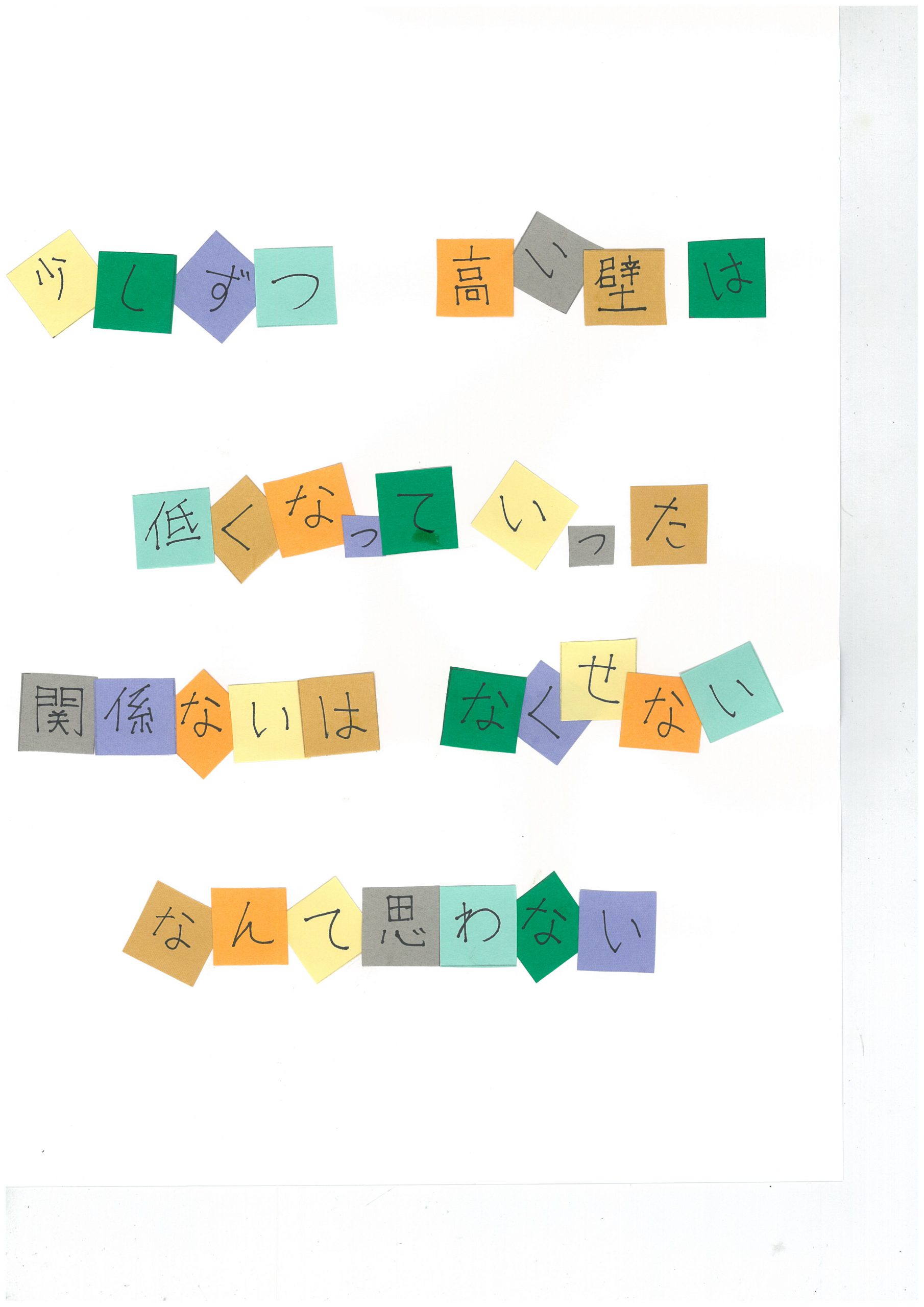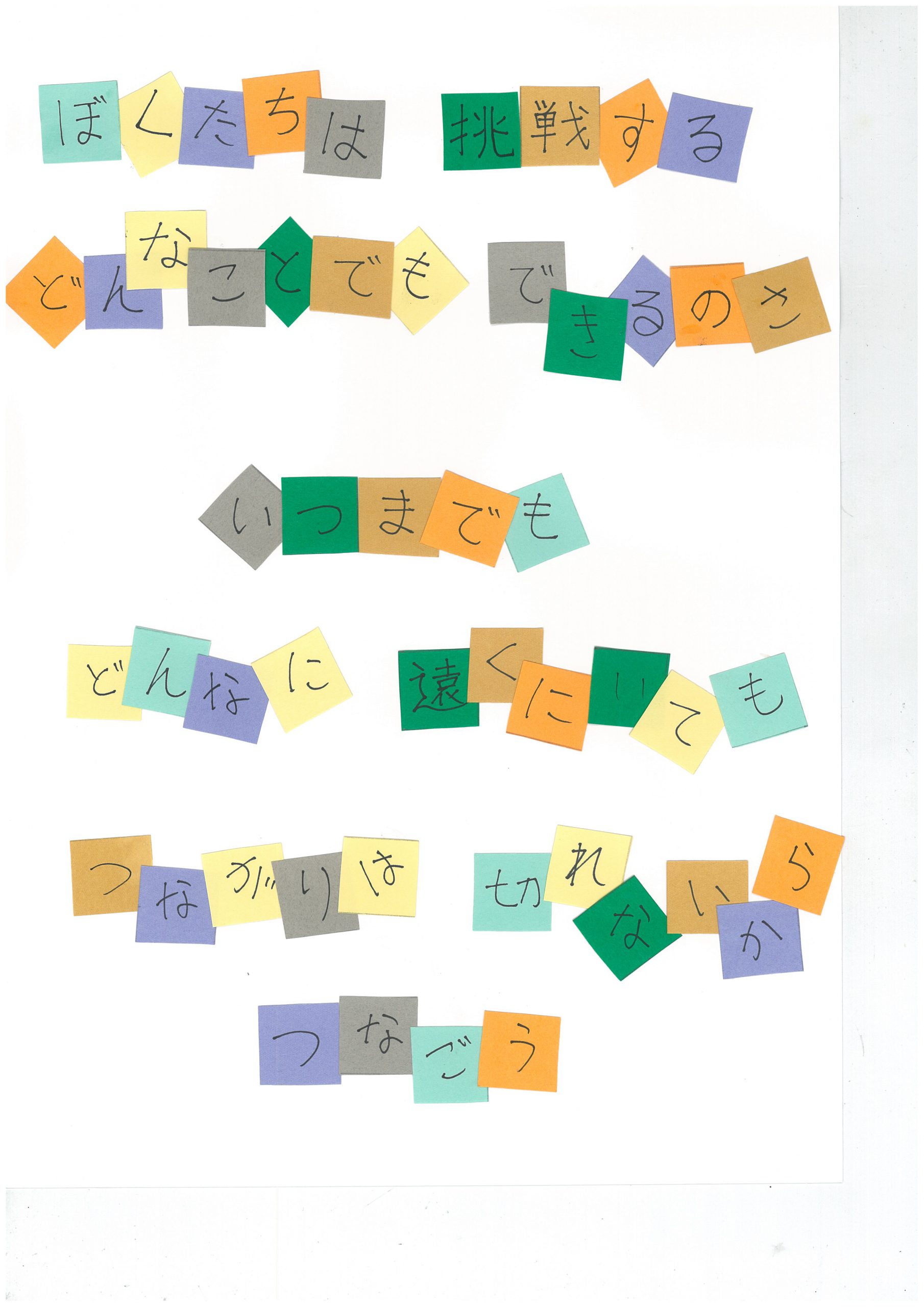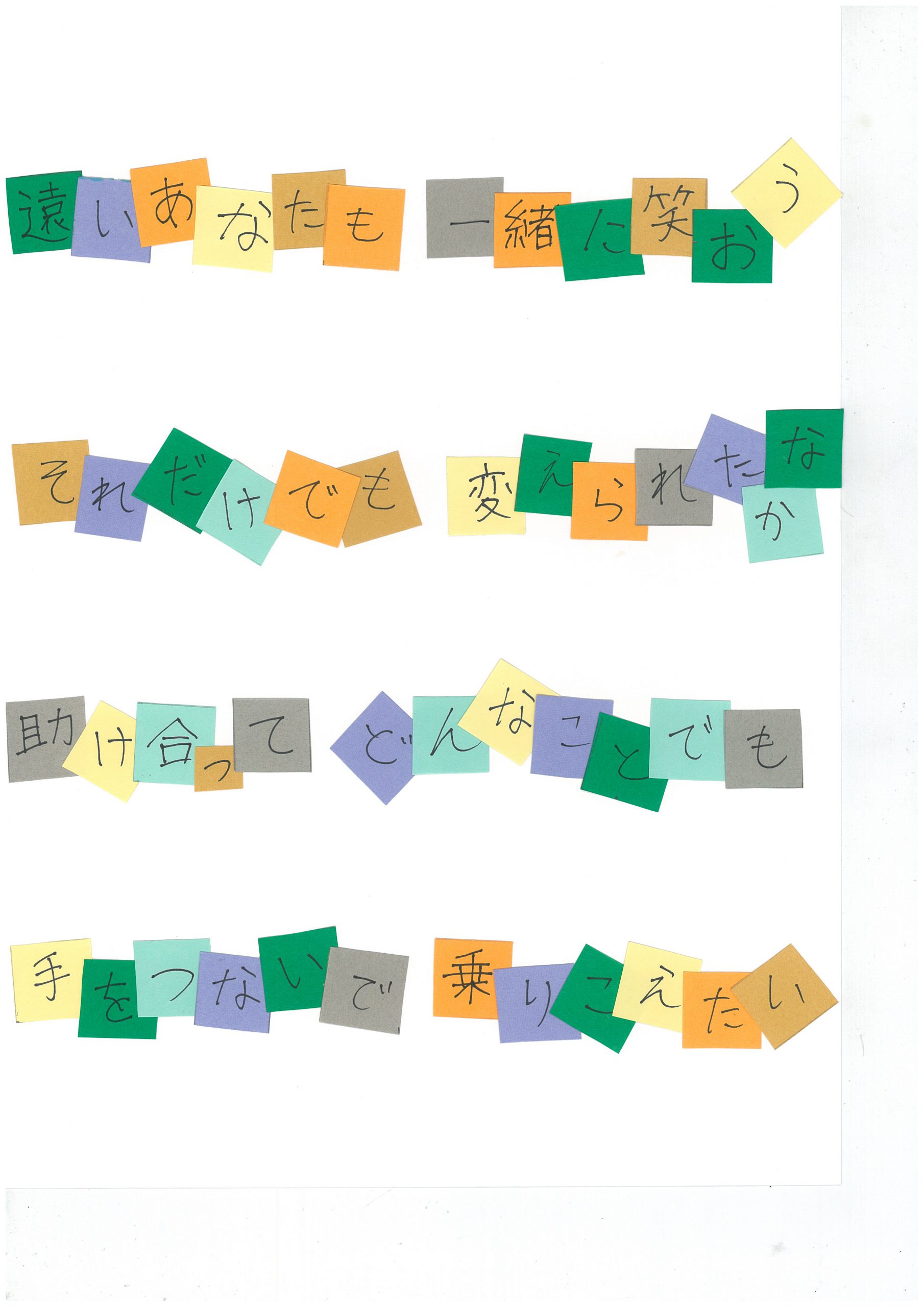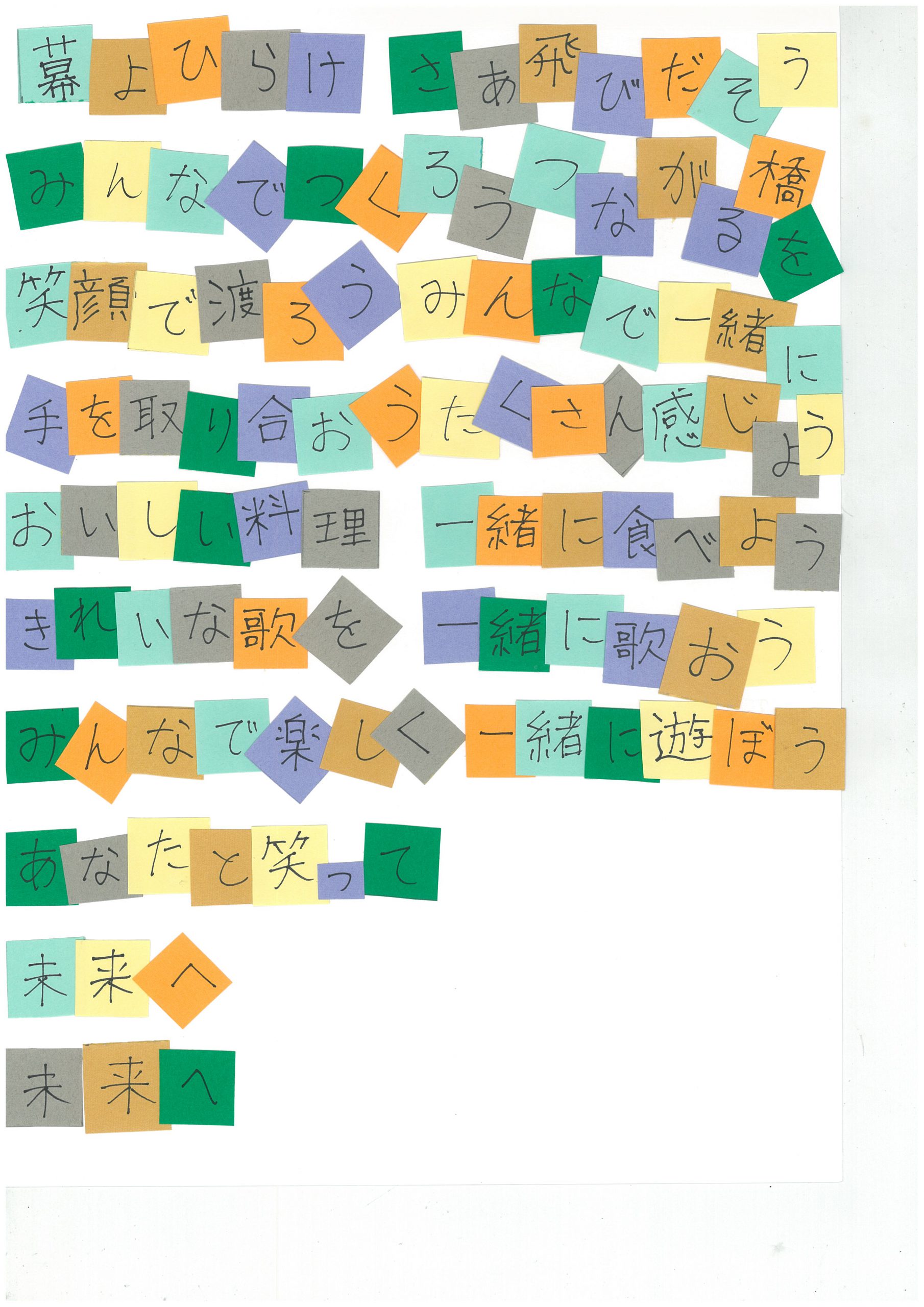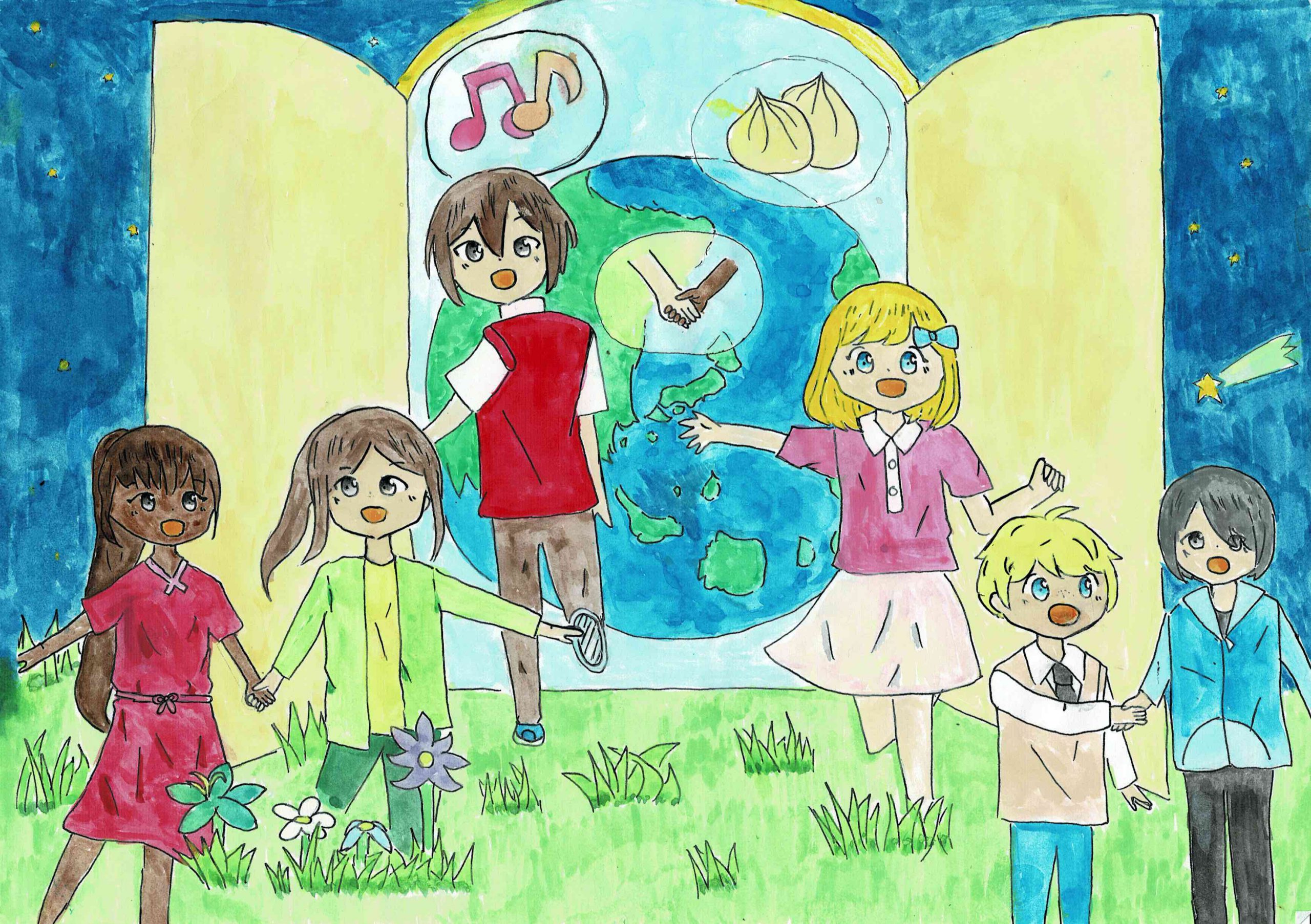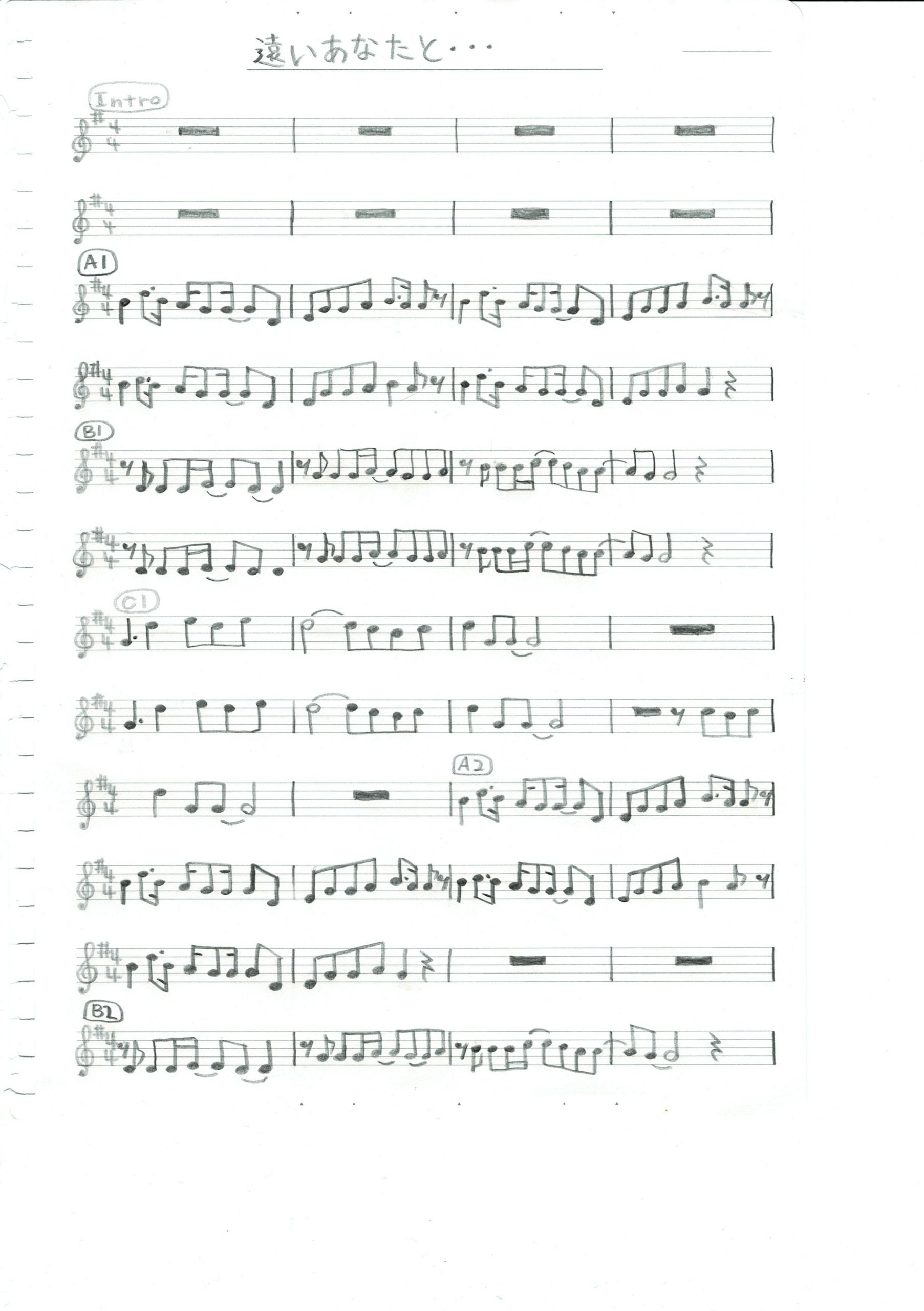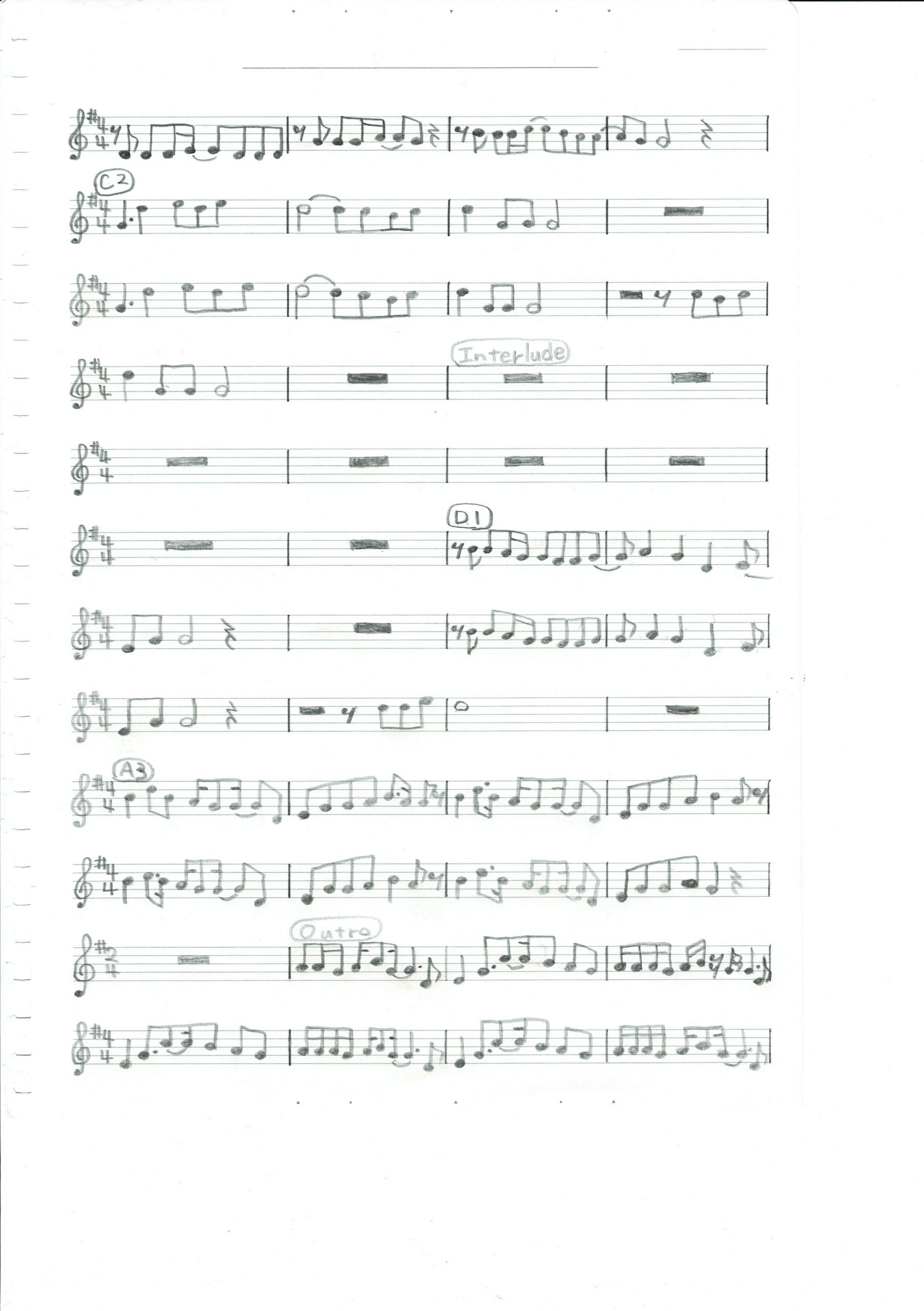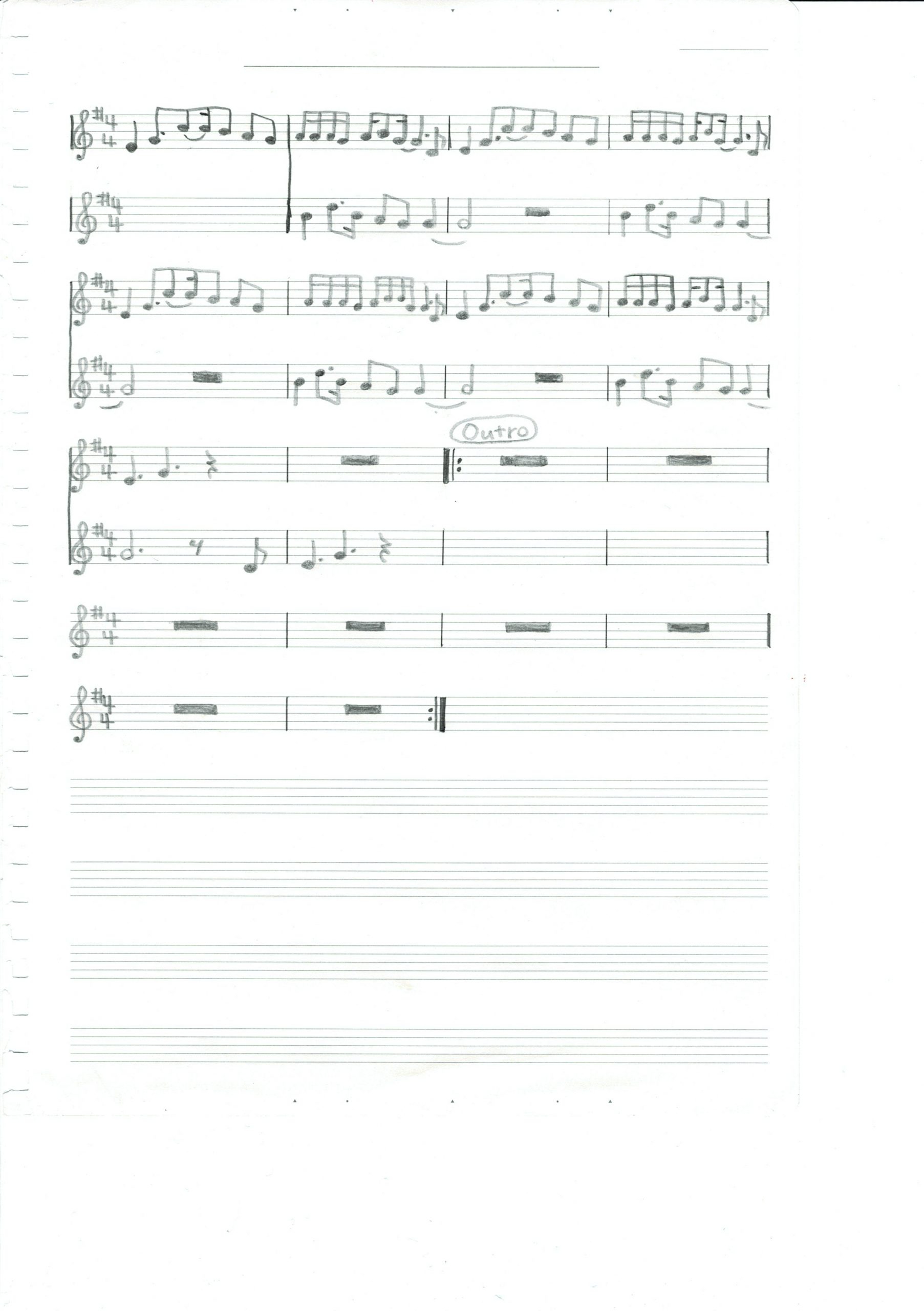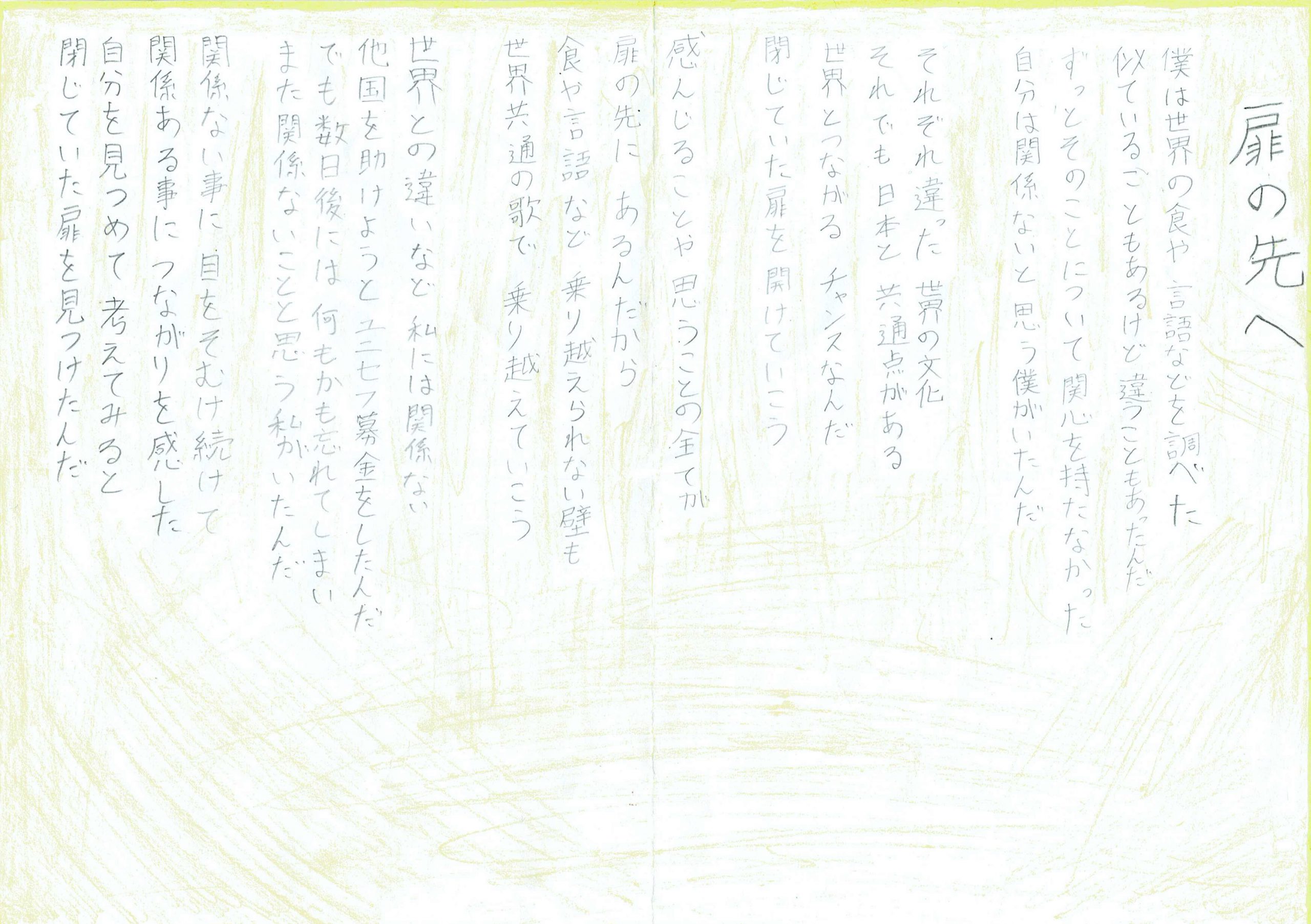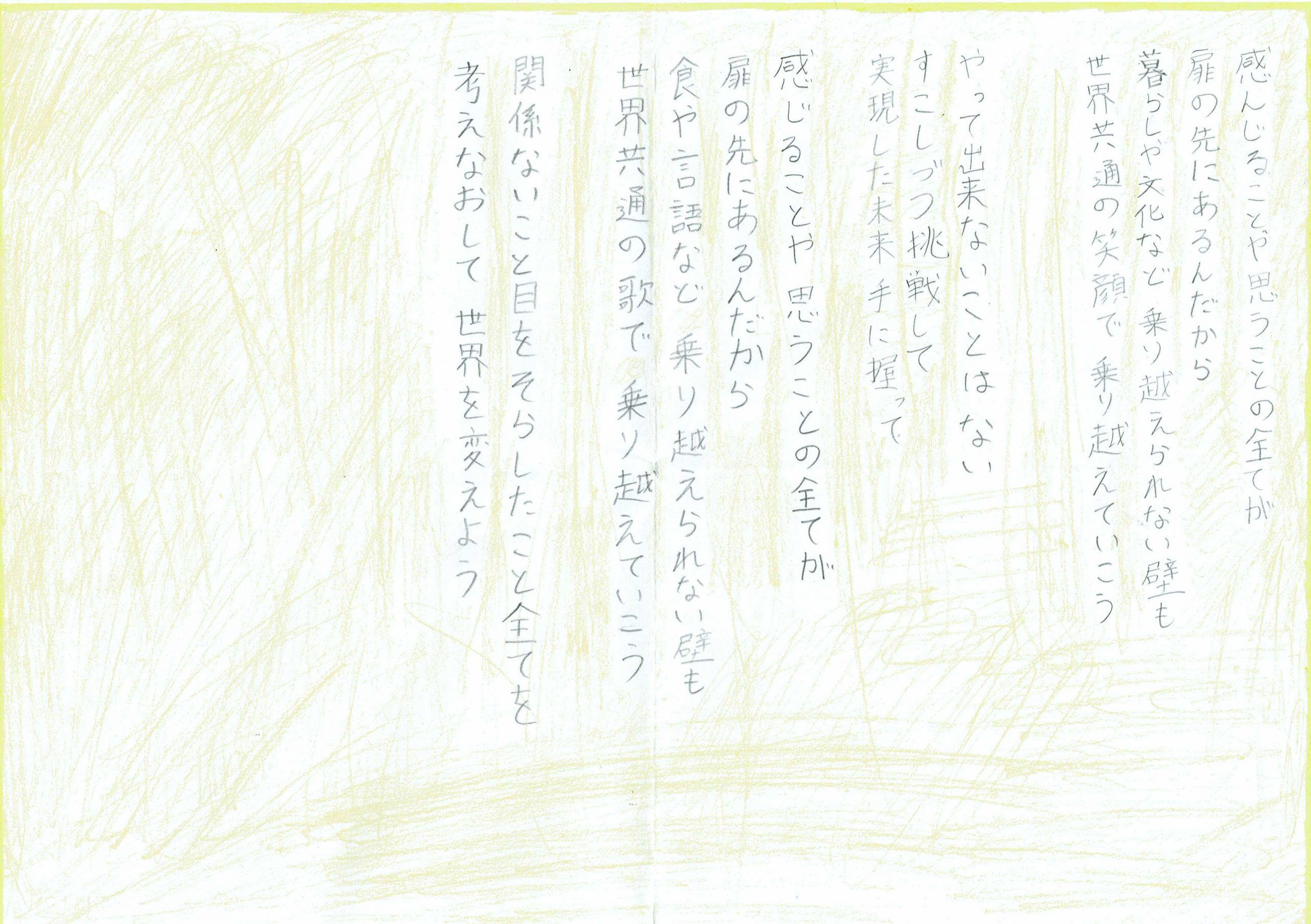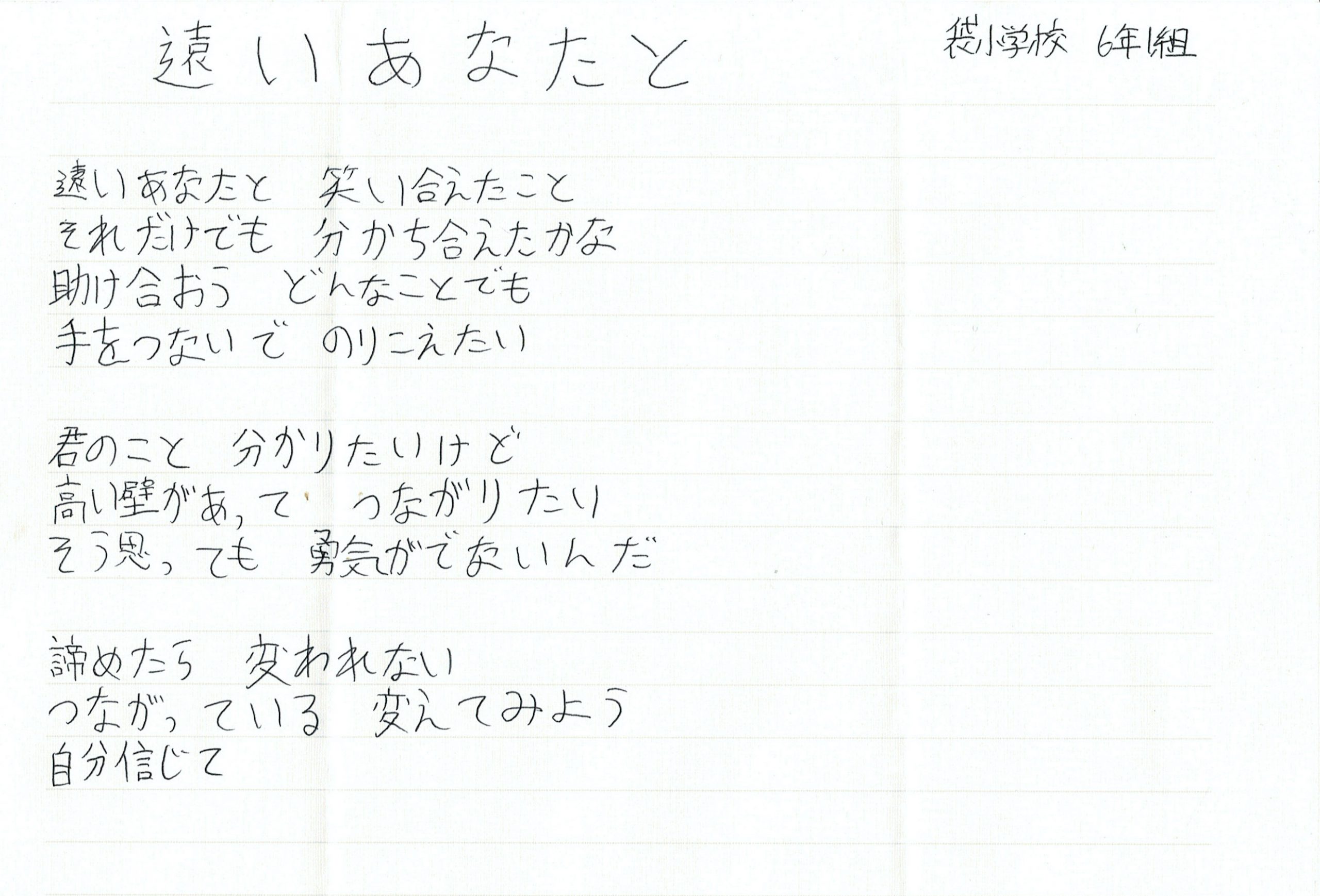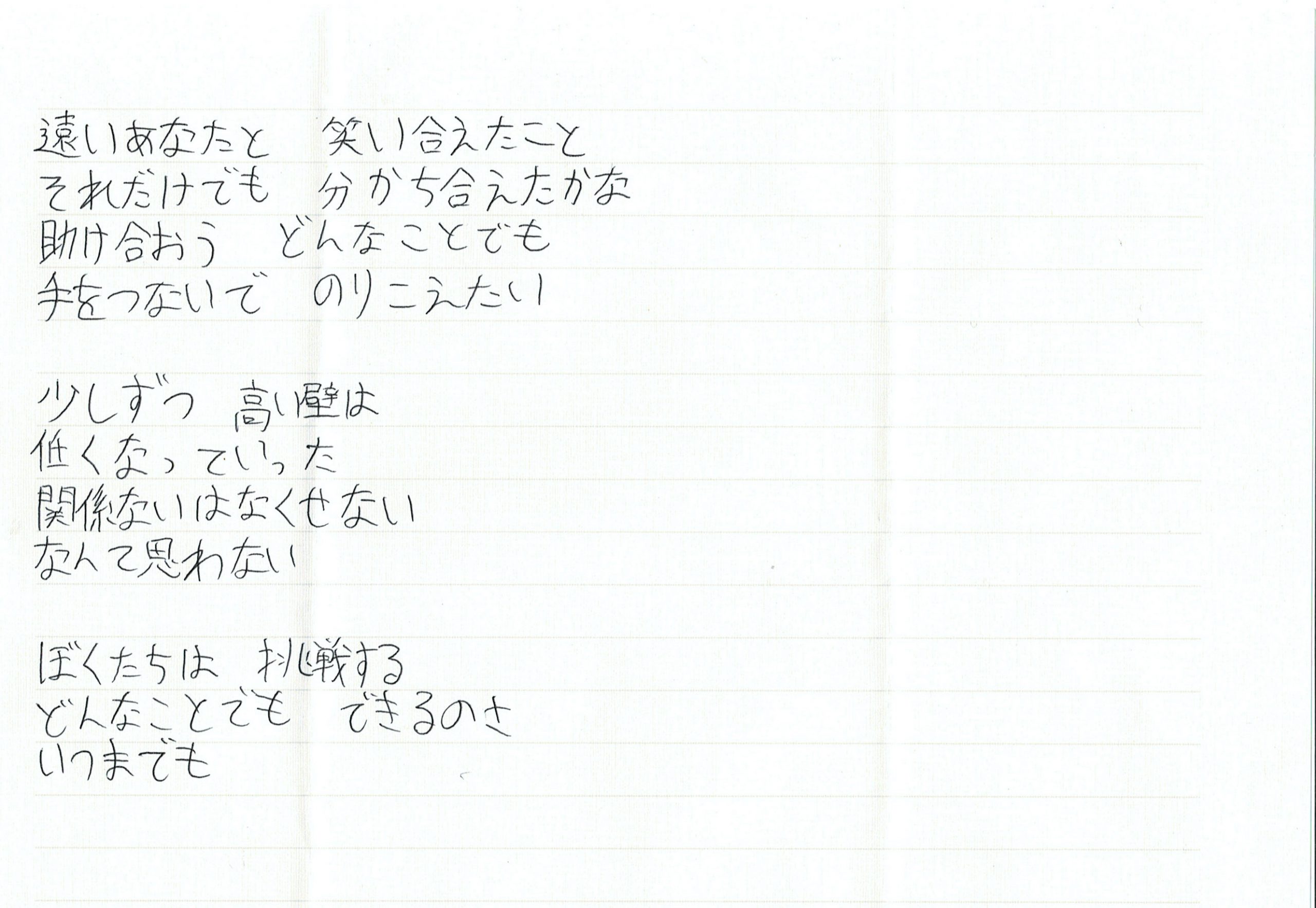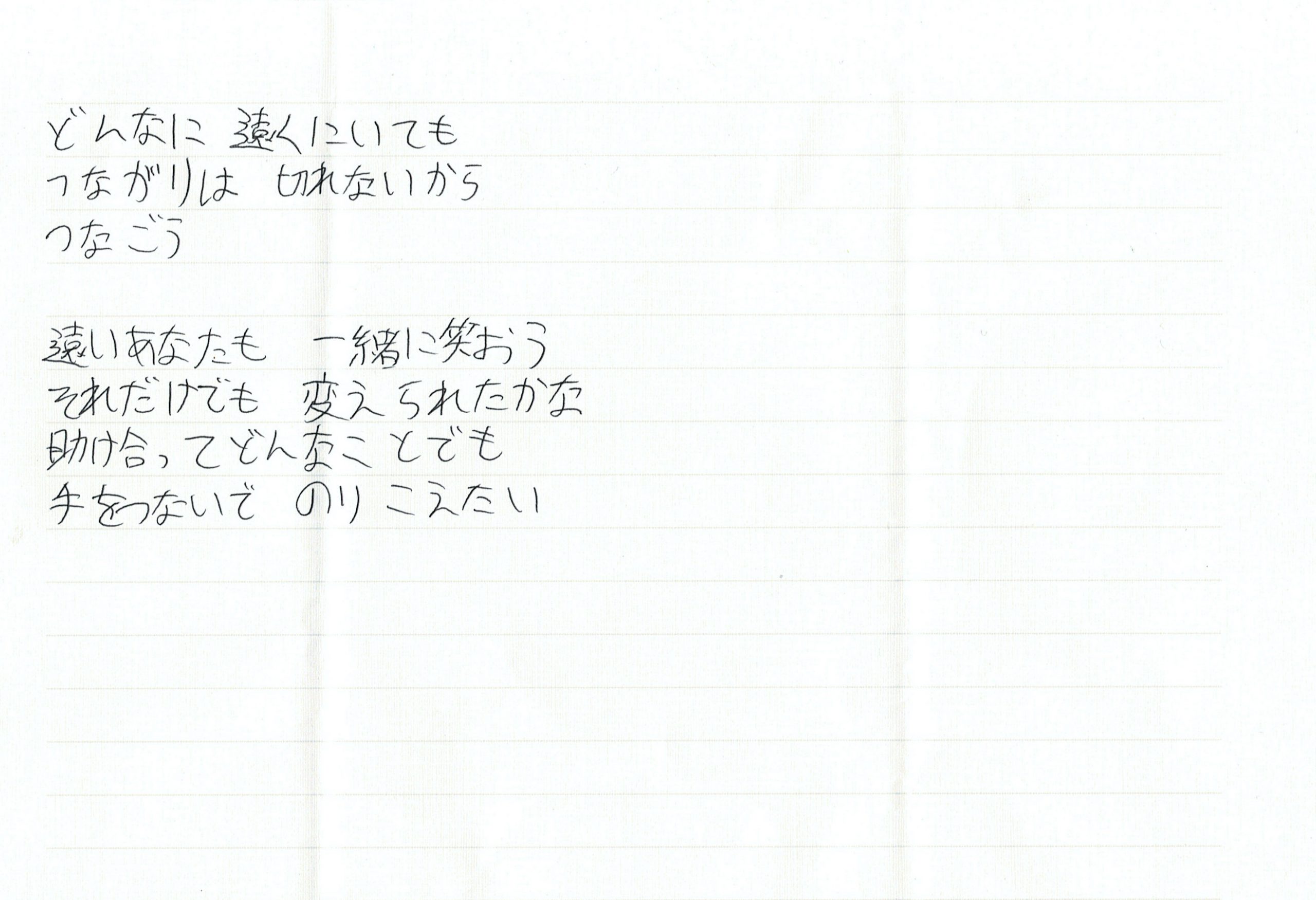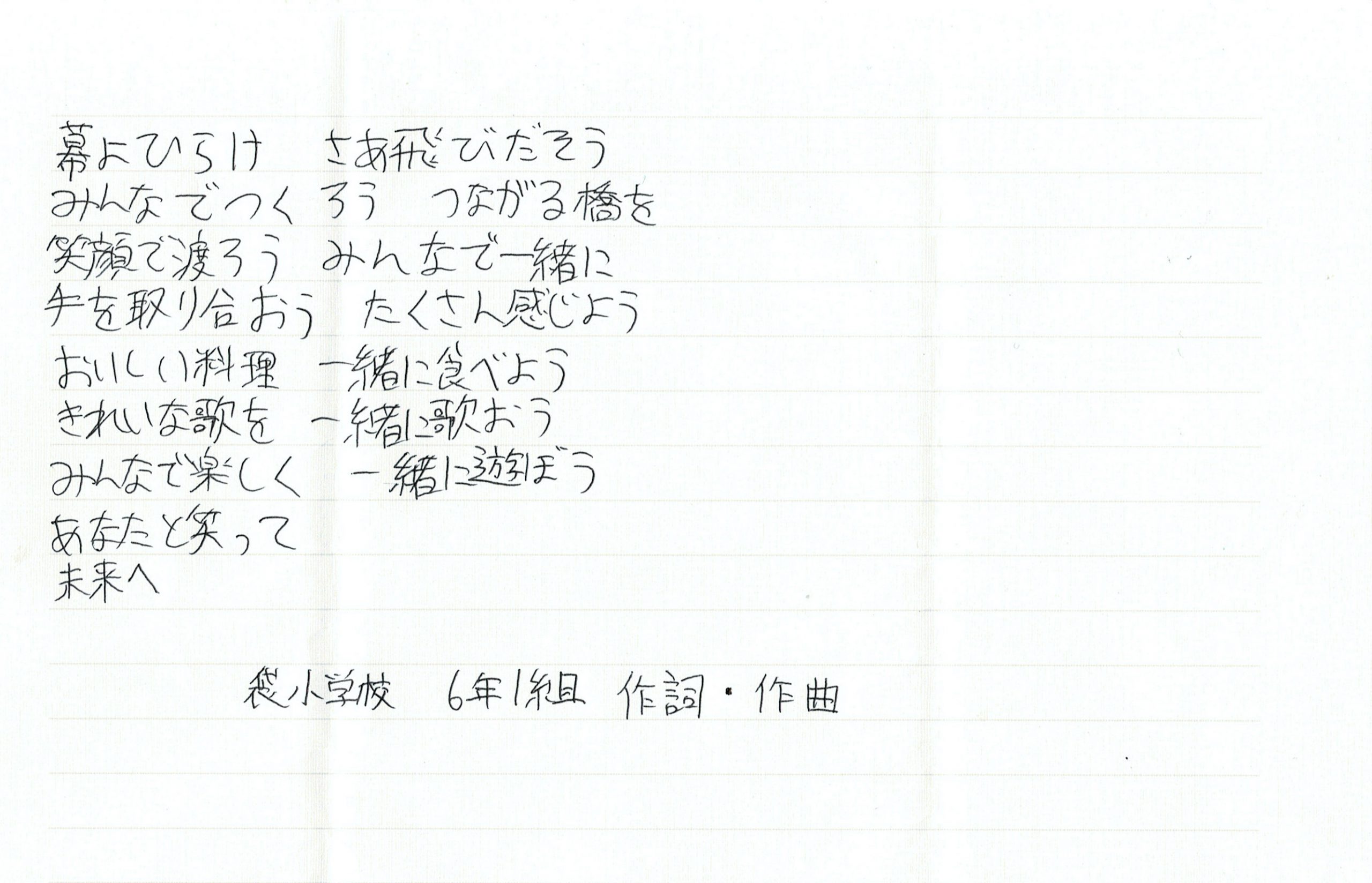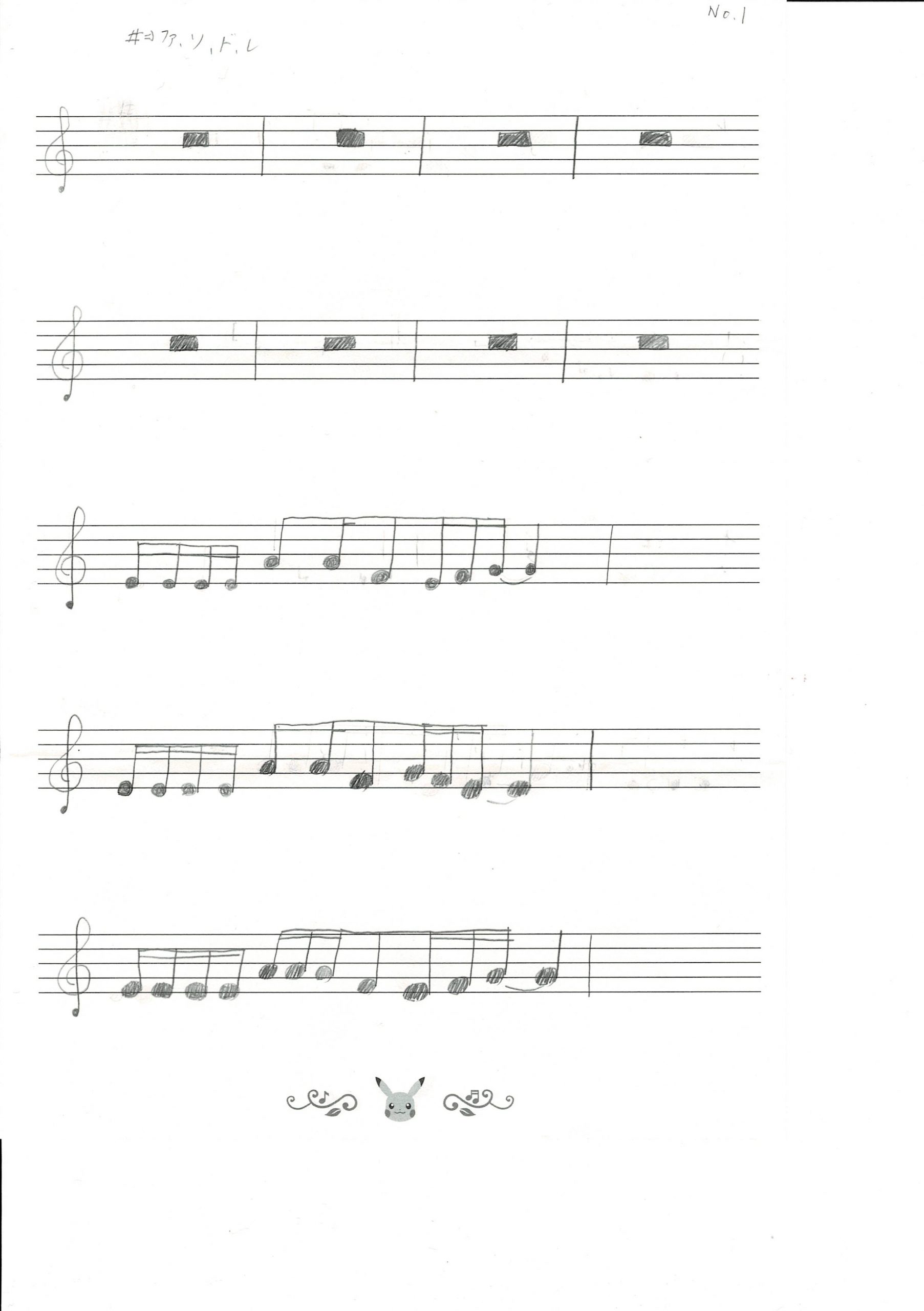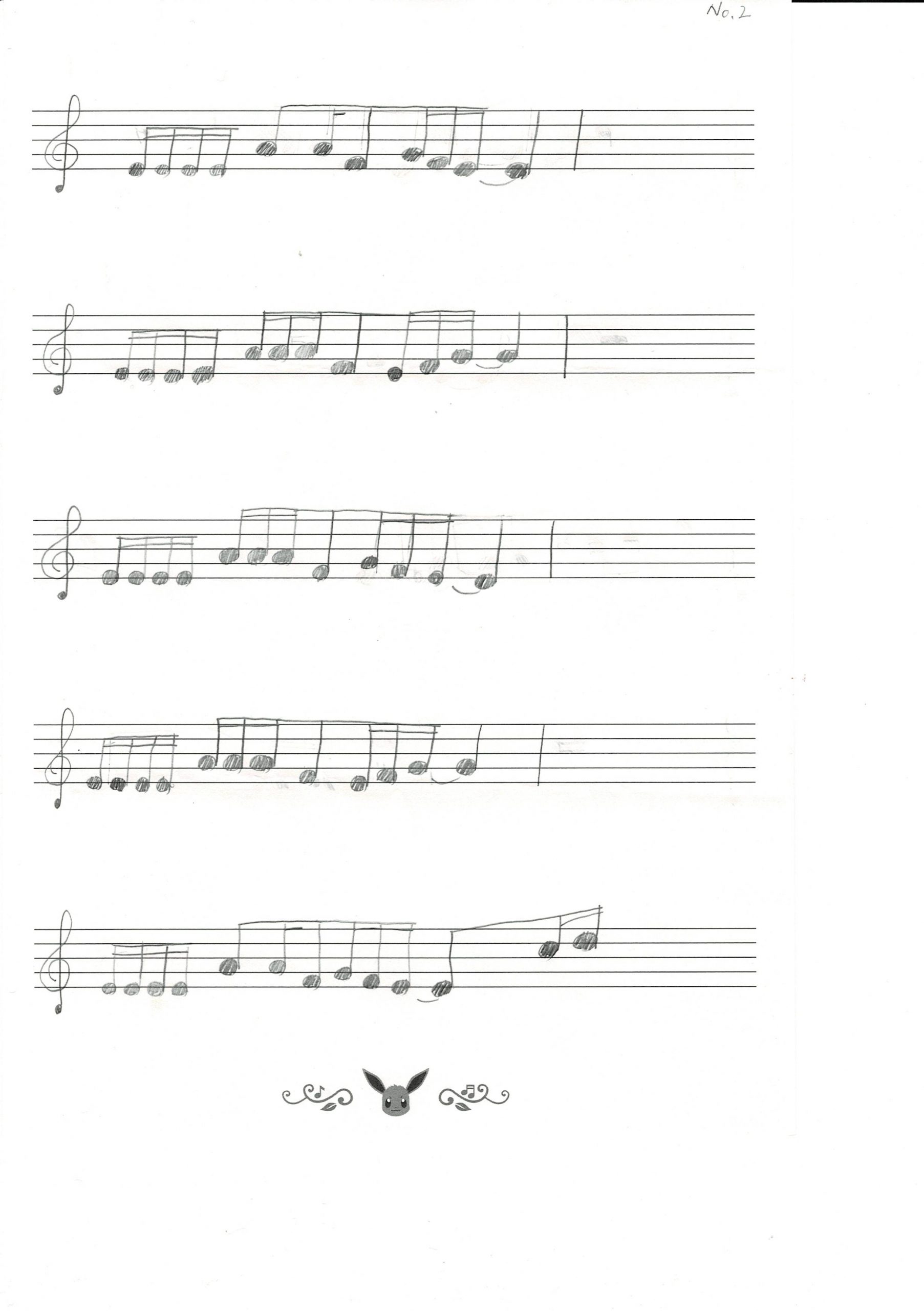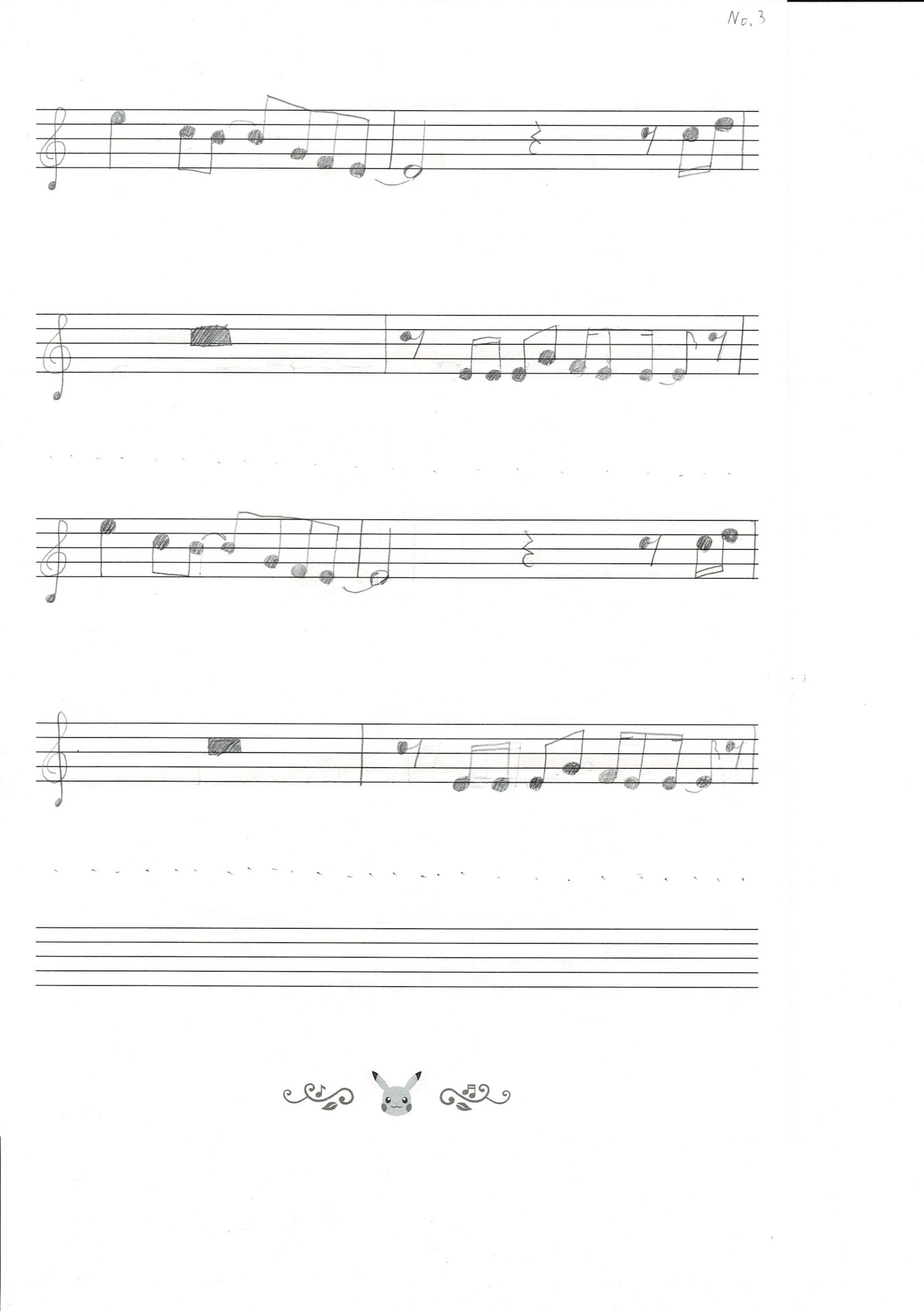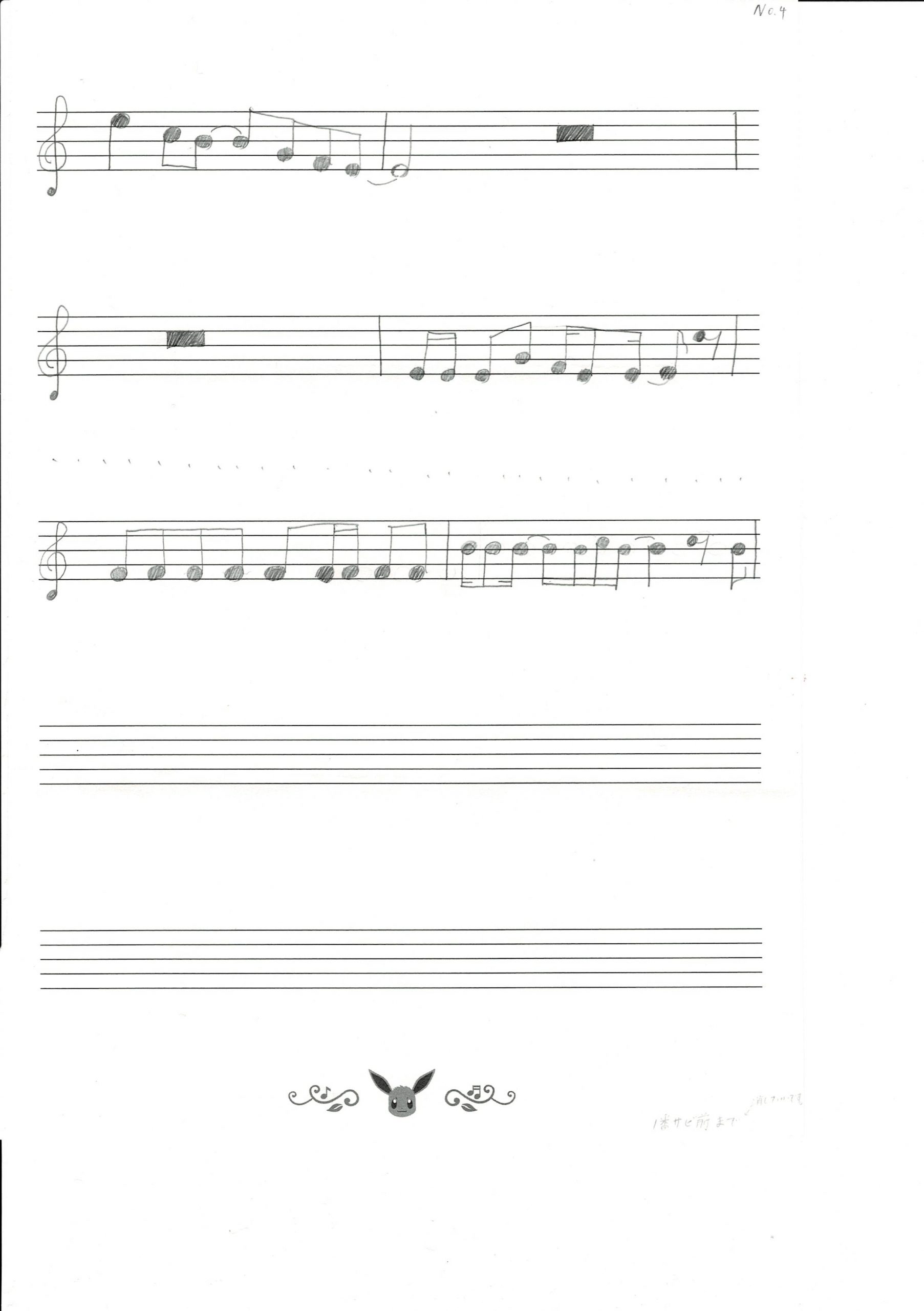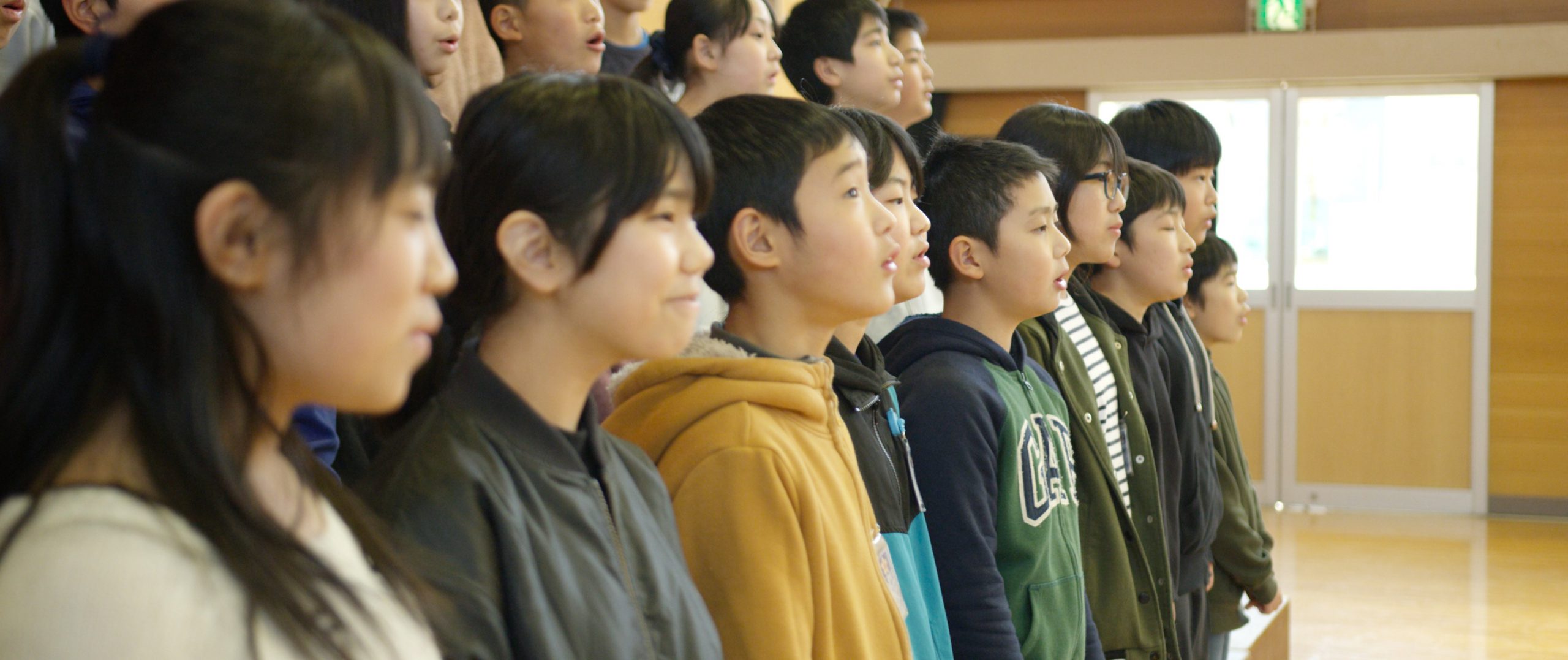

Article - Behind the Project Story
“With You / Beyond” by FUKUROSHO North-district Fukuro Elementary School Class 1 & 2
Japan, Jordan, NepalJAPAN × JORDAN × NEPAL
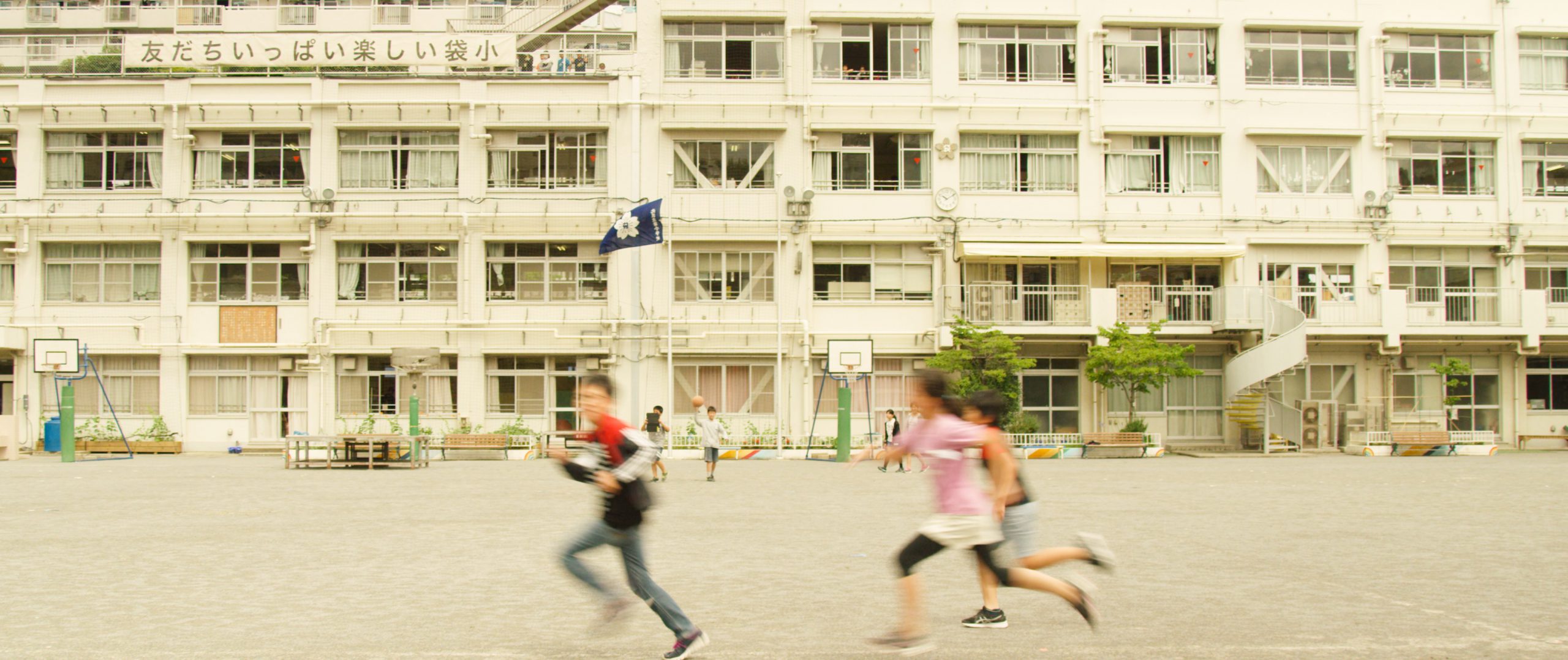
“With You / Beyond”
The sending of a song, by the 6th graders of Fukuro Elementary School
A story of creation, immersed in the connection with the world
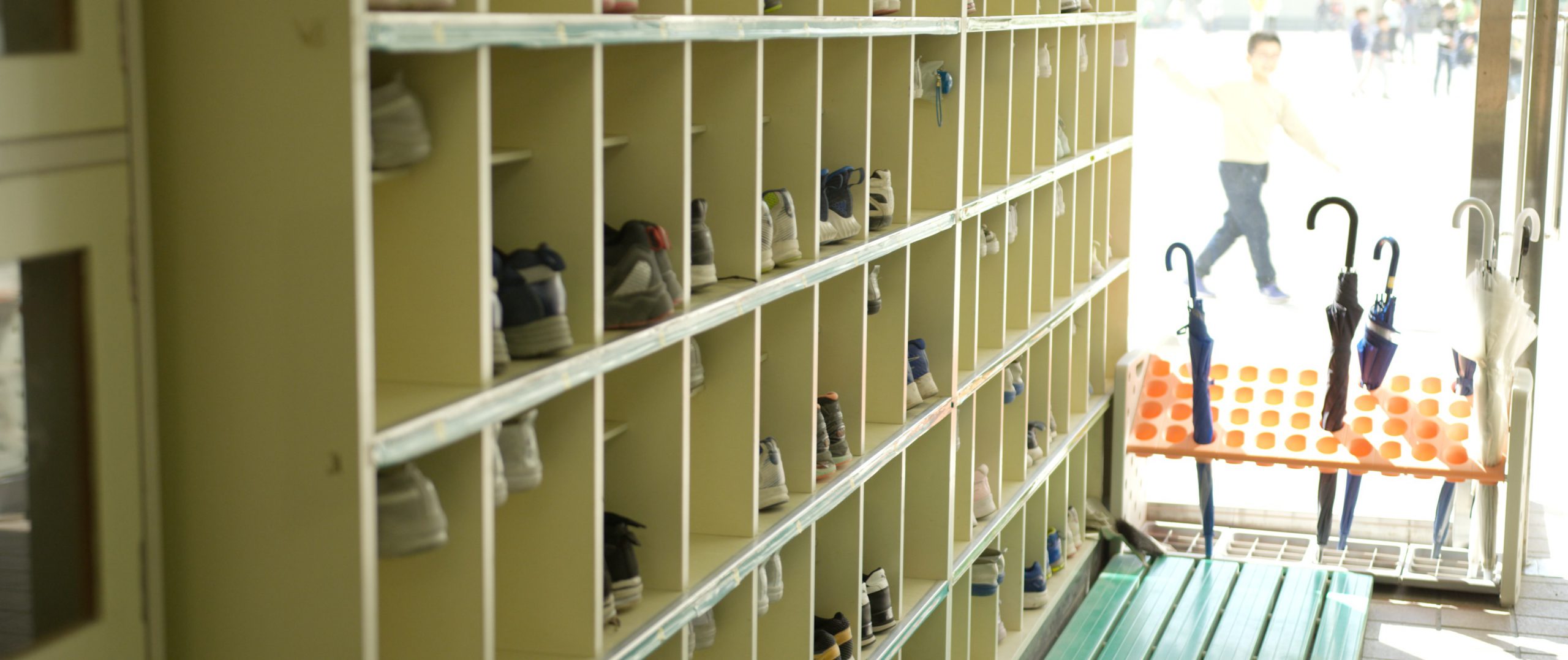
In the Spring of 2019, we first met with the 70 6th graders of Fukuro Elementary School. The spark that caused the interaction was the introduction of Mr. Yamashita, a teacher of 6th graders, through a mutual acquaintance.
Mr. Yamashita, during an “Intergrated Study Period”, had called upon various guest lecturers to interact with the children, and encourage them to actively interact with adults who take action all around the world every year, in a program designed for learning about society. Here, we were invited as a guest speaker as WORLD FESTIVAL. This was the beginnings of this project “FUKRUOSHO North-district Fukuro Elementary School Class 1 & 2”.
To learn not only what you can from textbooks, the teachers wanted to provide an opportunity to actively, through connecting with society, learn about societal issues. Listening to these thoughts from Mr. Yamashita, we suggested about how the children, with children from overseas, could perhaps create a song together as a project.First, we wanted the children to begin liking the country and the people who lived there. We wanted them to feel in person the beautiful culture they possessed. We wanted them to not view as “a country with societal issues”, but to explore the attractions of the country with their own eyes. These thoughts are what we had in mind. Through this experience, they would be encouraged to learn more about societal issues, and nurture opportunities to think about such issues.
Then, to harvest a deep and meaningful relationship between them, we decided it would be best to get them to collaborate and create something together. With music, you can overcome languages, and reminiscing about the song sung years before, it would forever last in their hearts as they listen, reminding them of the presence and memories of those times.
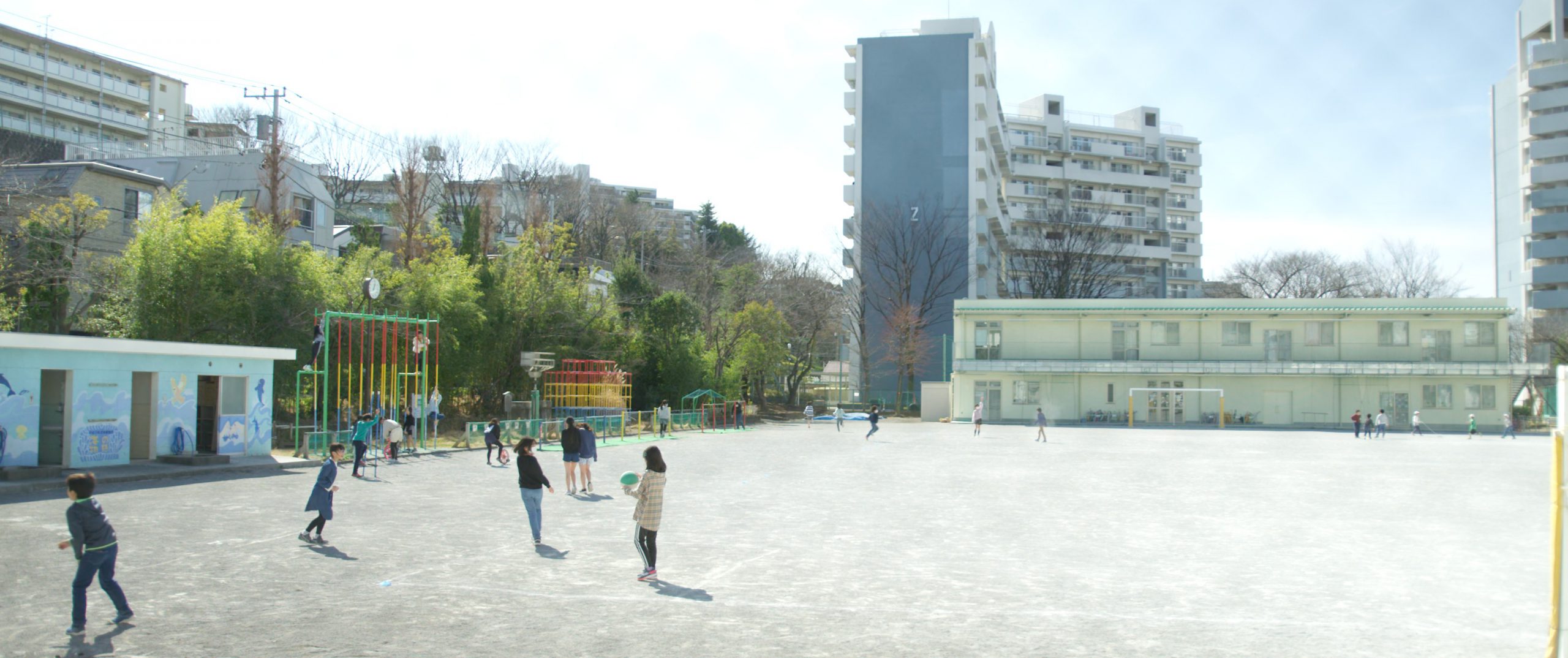
The project’s theme was “To eradicate “Indifference” from the world”. This is also the mission that we here at WORLD FESTIVAL support.
With the Fukuro Elementary schoolchildren actually interacting with the children overseas, the children themselves would, across countries, create a song together. Then, through the WORLD FESTIVAL LABEL we produced, that song would be globally transmitted and sold to the world, allowing the children the experience to actively connect internationally. Through imagining this process, we were greatly excited.
With their own ideas and thoughts coming together as one, the discovery of “This is what it can become!”, would definitely create deep bonds with one another, and great confidence. This can be said even more when people across countries recognize and purchase what they created. As long as music exists in this world, the bonds created at that time, and the proof of existence that they were indeed there, will last forever. This aspect is one of the most important facets of WORLD FESTIVAL LABEL. As a project, it was a match made in heaven. Aiming to materialize this, a year of collaborative classes started.
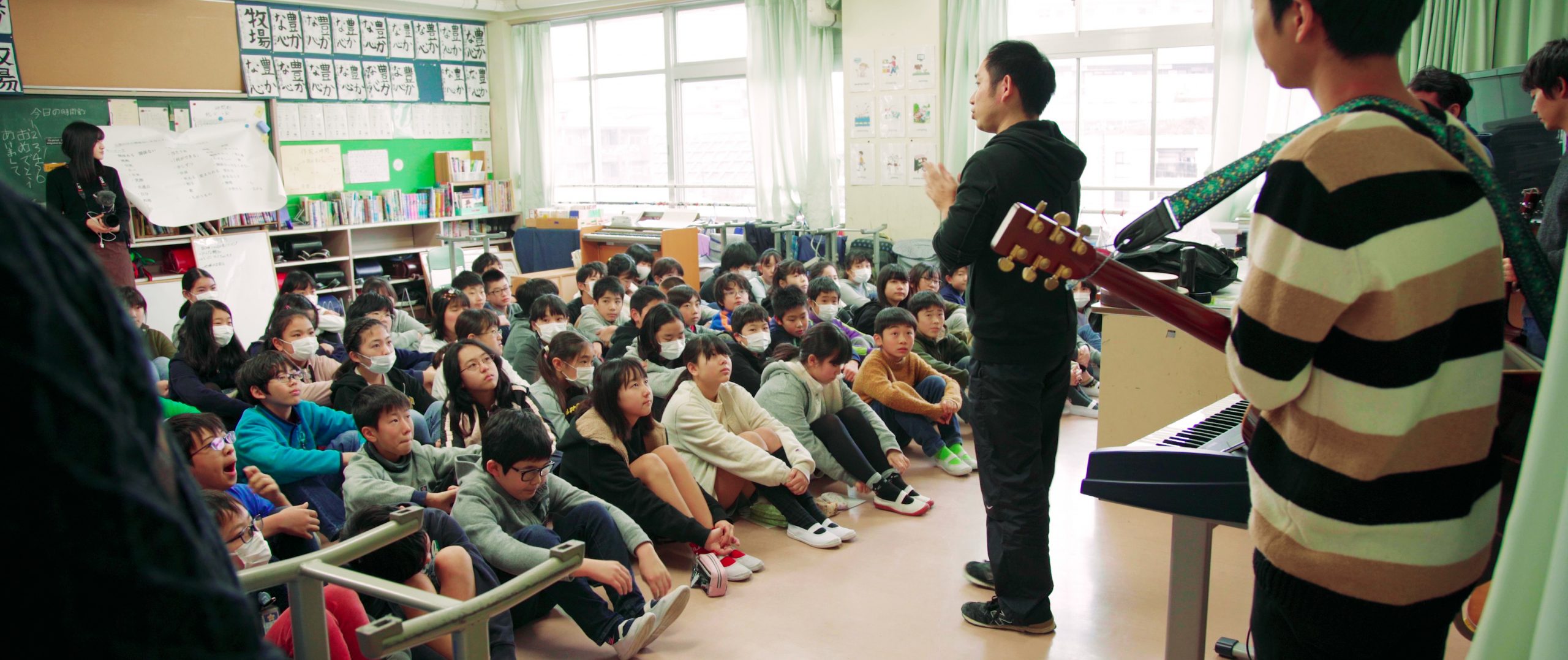
For the interaction destinations, Jordan and Nepal were selected. With the hopes that it would expand their perspective of the world, we intentionally selected countries they would normally be unfamiliar with. With the cooperation of local friends of WORLD FESTIVAL, we initiated, with an elementary school in Nepal’s Doba, Myagdi district, and a junior high school in Jordan’ capital, Amman, an interaction and creative project.
The first project we took on was called “My hometown”. Also acting as a way to introduce themselves, the children projected the attractions of their hometown through visuals.
The children used iPads to conduct interviews, and ventured into various locations such as parks, nature, and storefronts. What is attractive about our town? What do we want to convey? Thinking about those aspects, the children themselves shot the footage and edited, and completed the video.
During the class, we brainstormed together about the theme, eradicating the “Unrelated” feelings. What does it mean, and how should we approach it?
Countries never visited, people we have never met, and far away lands that we have never set foot on.
What and how is it that connects us, as we are here now living on this one planet, this Earth?
The children may have had some apprehensive thoughts initially, which could be expected. The children were all good-natured, and listened intently, but somewhere in the back of their minds, they may have thought “But, it doesn’t relate to me”. Maybe many children felt that way.
That was to be expected. There were children who had never had the chance to visit abroad. Even while being lectured by the most obvious of things, without one’s own discovery and empathy, it would not become something they actively appreciated and believed in. This can be said not only of the children, but many adults around the world. Understanding something with your mind is a whole other matter than feeling from your heart.
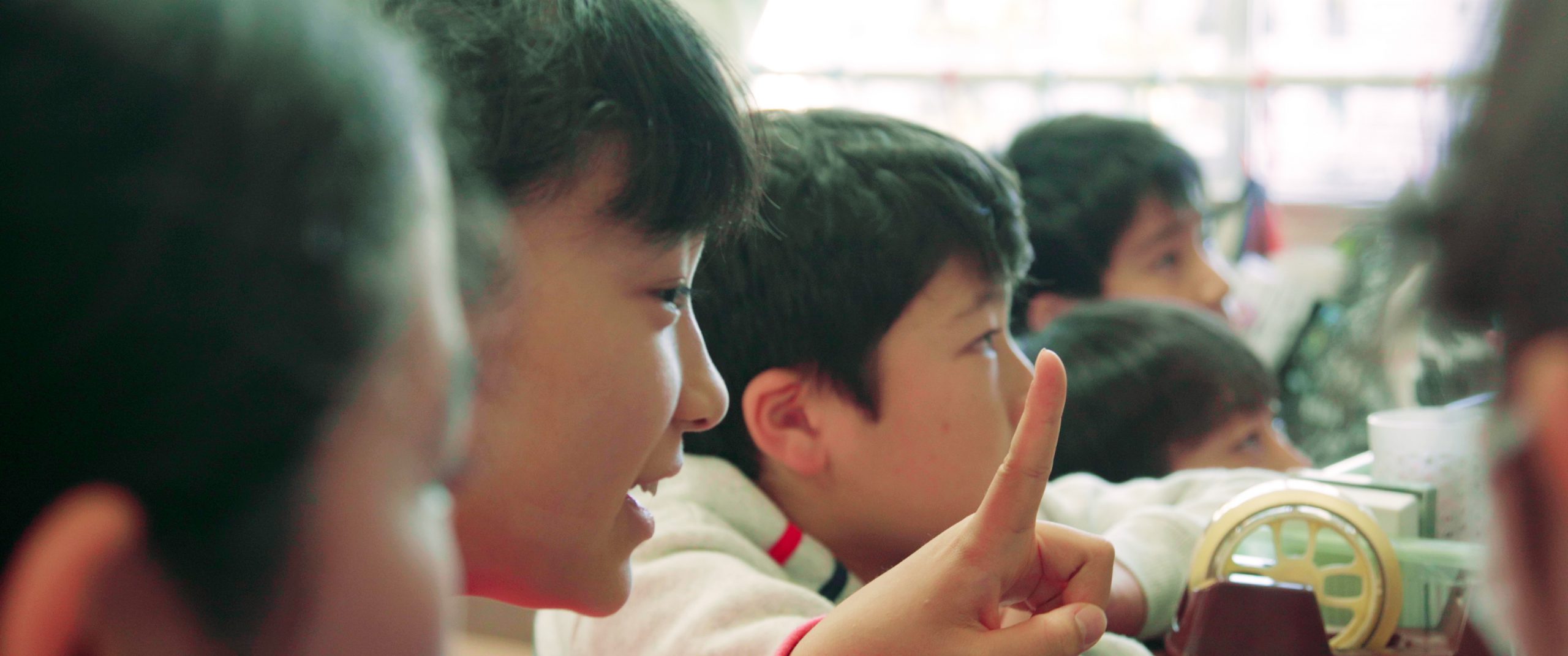
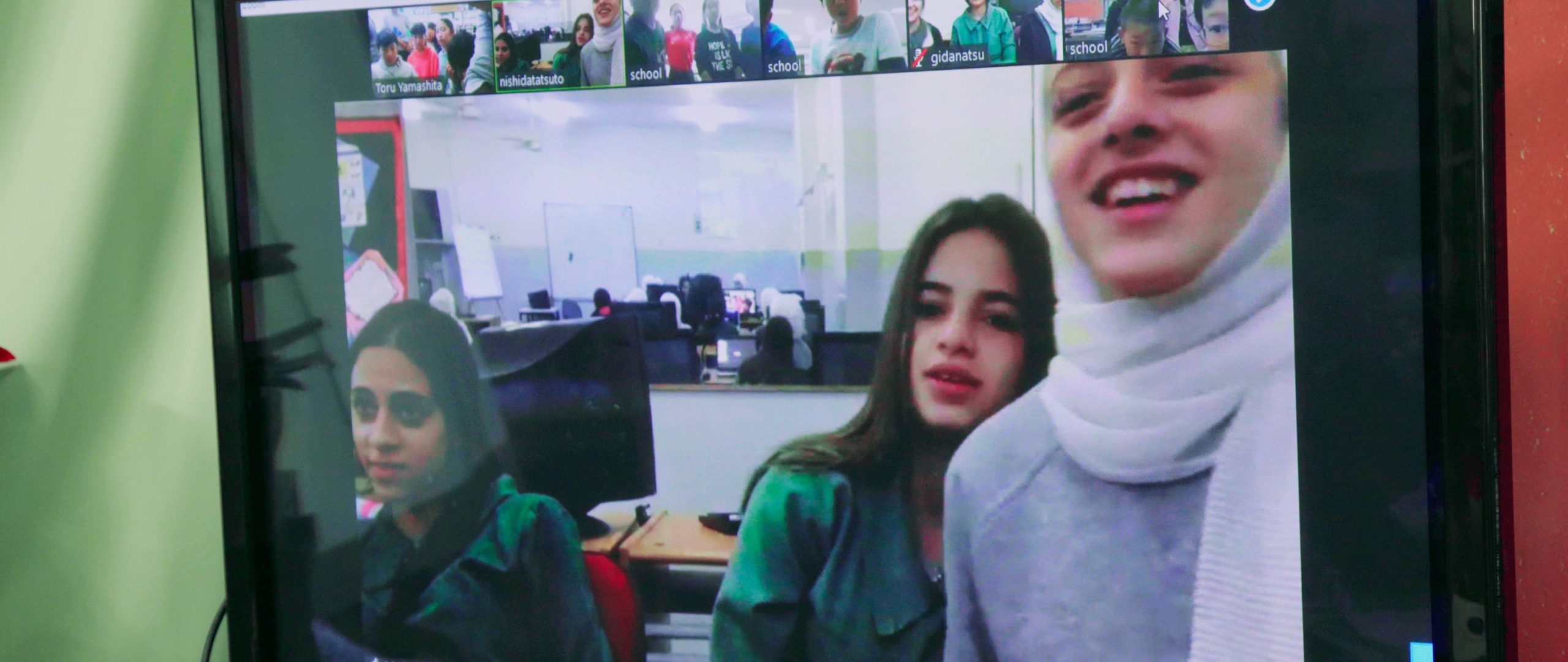
On the day of interacting with the children of Nepal and Jordan. Through a computer screen, they spoke in English unfamiliar to them, but the smiles and body language communicated to those children of a different country, new to them. Through singing songs, and sending letters in between them, they conducted several interactions through various means.
“It isn’t whether you can speak the language correctly. The importance lies in how much you want to convey to the opposite side.” One of the children left such impressions. When conveyed successfully, everyone was uplifted.
Even what comes naturally in each one’s country, to others it may be perceived as newfound, rare, and in some cases cheers had occurred. In introducing those qualities, the children who introduced them, though a bit shy, kept on a proud face. As how this was, by speaking with people overseas, these ordinary acts in everyday life can be shown to be highly unusual yet attractive to those unfamiliar with the routine.
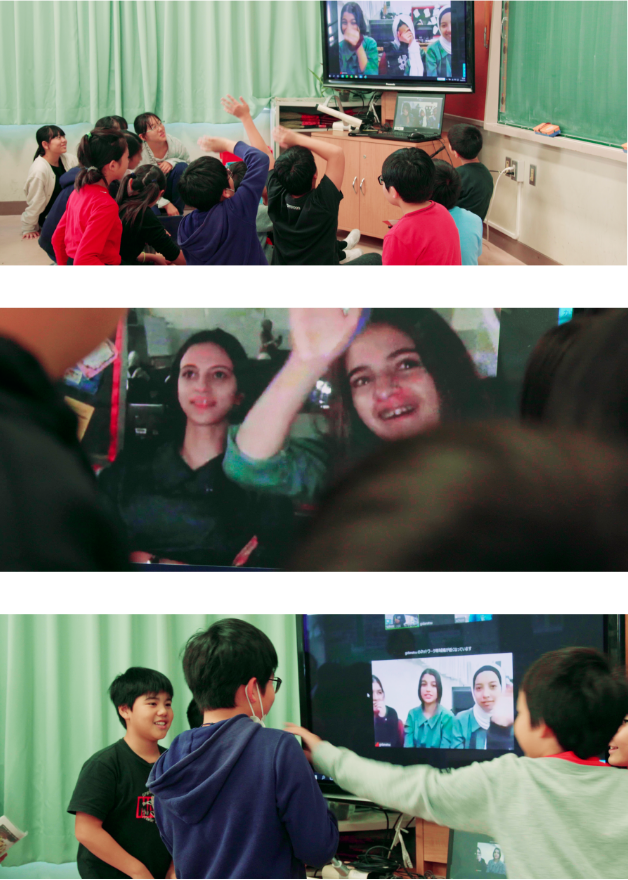
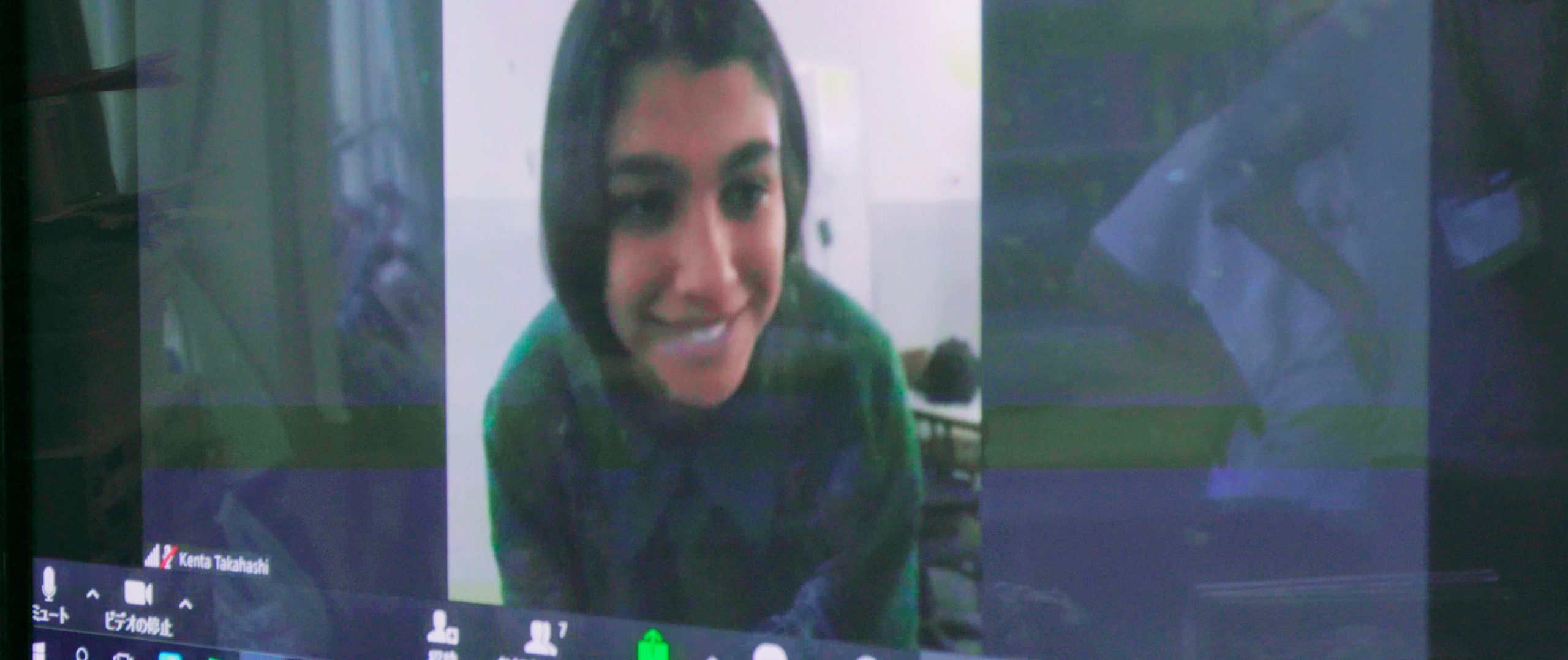
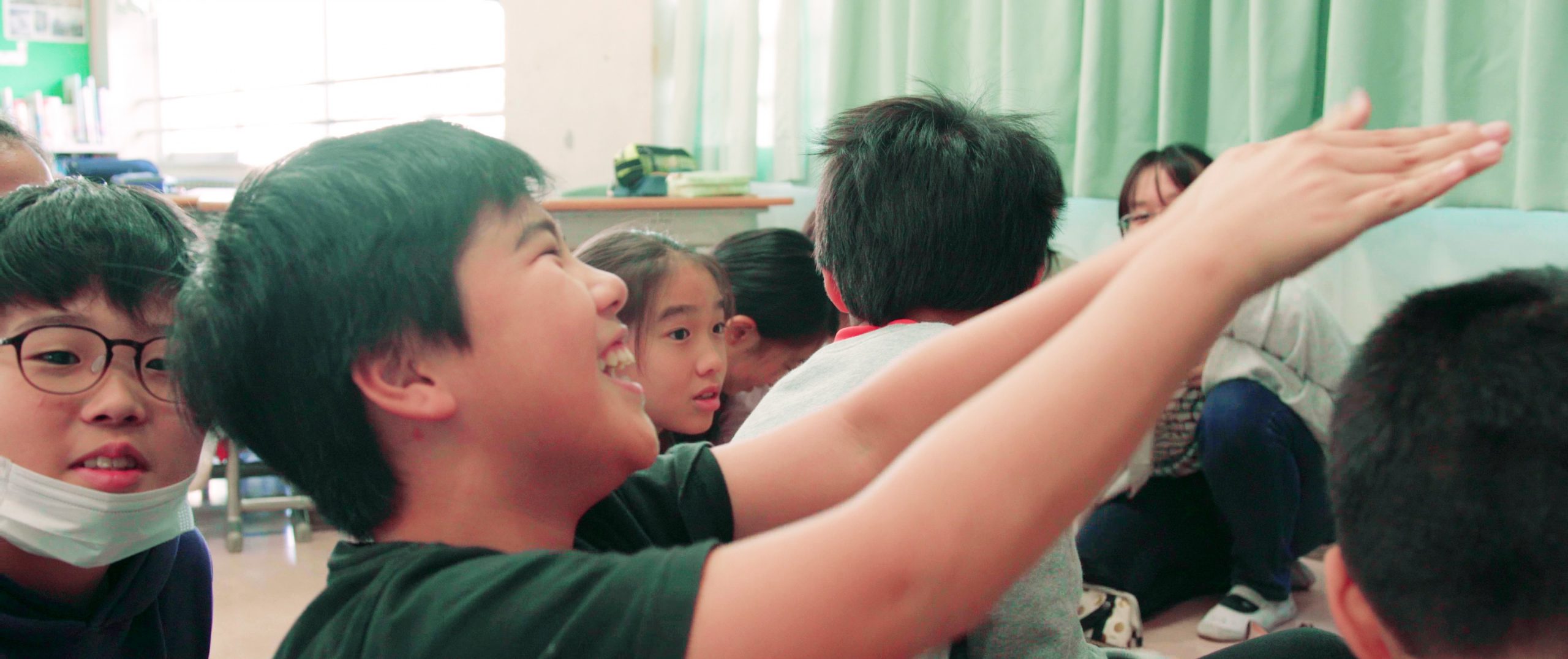
With this, the project conducted through the first half, “My hometown” was completed successfully.
After this, finally we were prepared to conduct the step of creating a song, collaborating with all three countries involved. However, there was an incident where no one could have predicted.
All of Jordan’s public-school teachers went on strike, and the schools were closed indefinitely. The likelihood of recommencement was unclear. In Nepal, due to the location being a mountainous region, the local signal reception degraded badly, and the prospect of the three countries regularly interacting became worryingly hopeless.
We realized that “creating together” became increasingly difficult. We couldn’t interact. How do we cope with this?
The feelings of being let down lied in both the adults and children involved in the project.
“I have an idea! Let’s create a song dedicated to them!” Even though creating together proved difficult, we, the children of Fukuro Elementary School could deliver a message, a letter, in the form of a song. With these thoughts in our hearts, we decided to continue and restart the project.
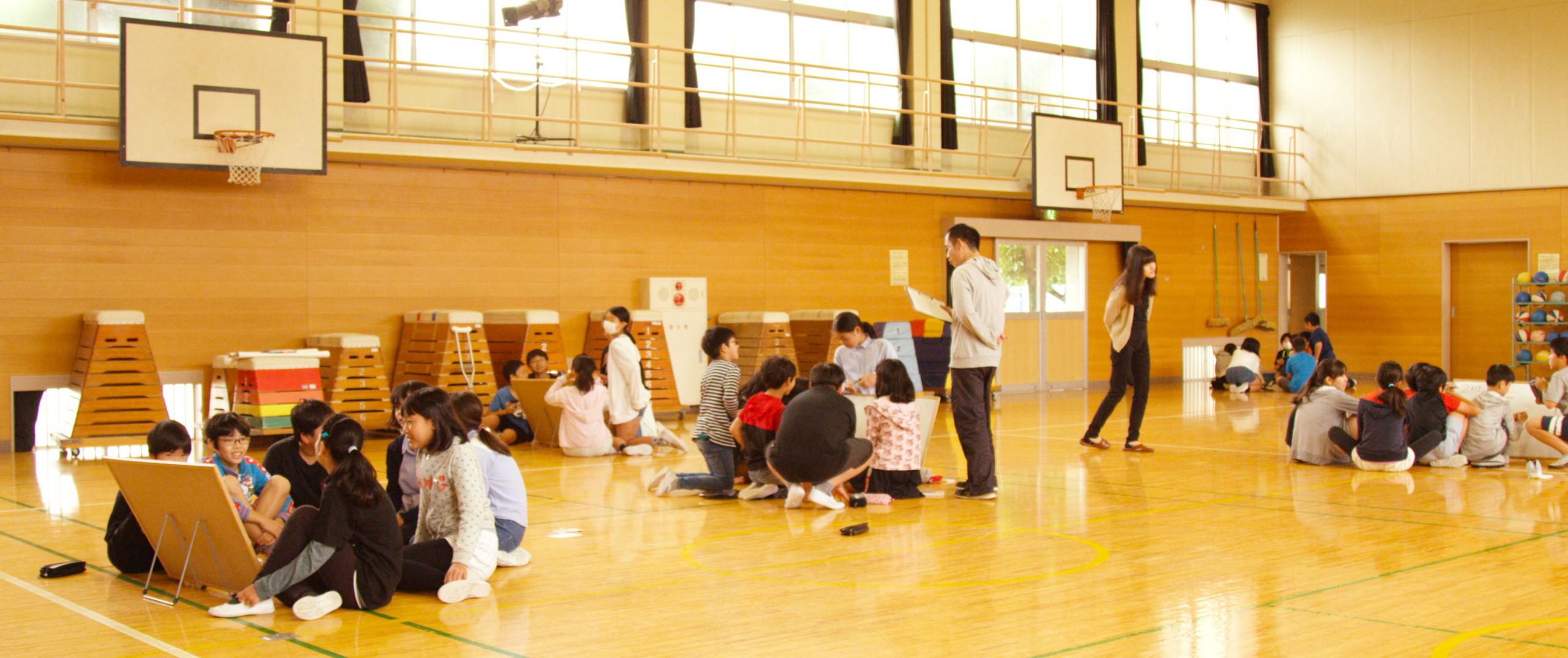
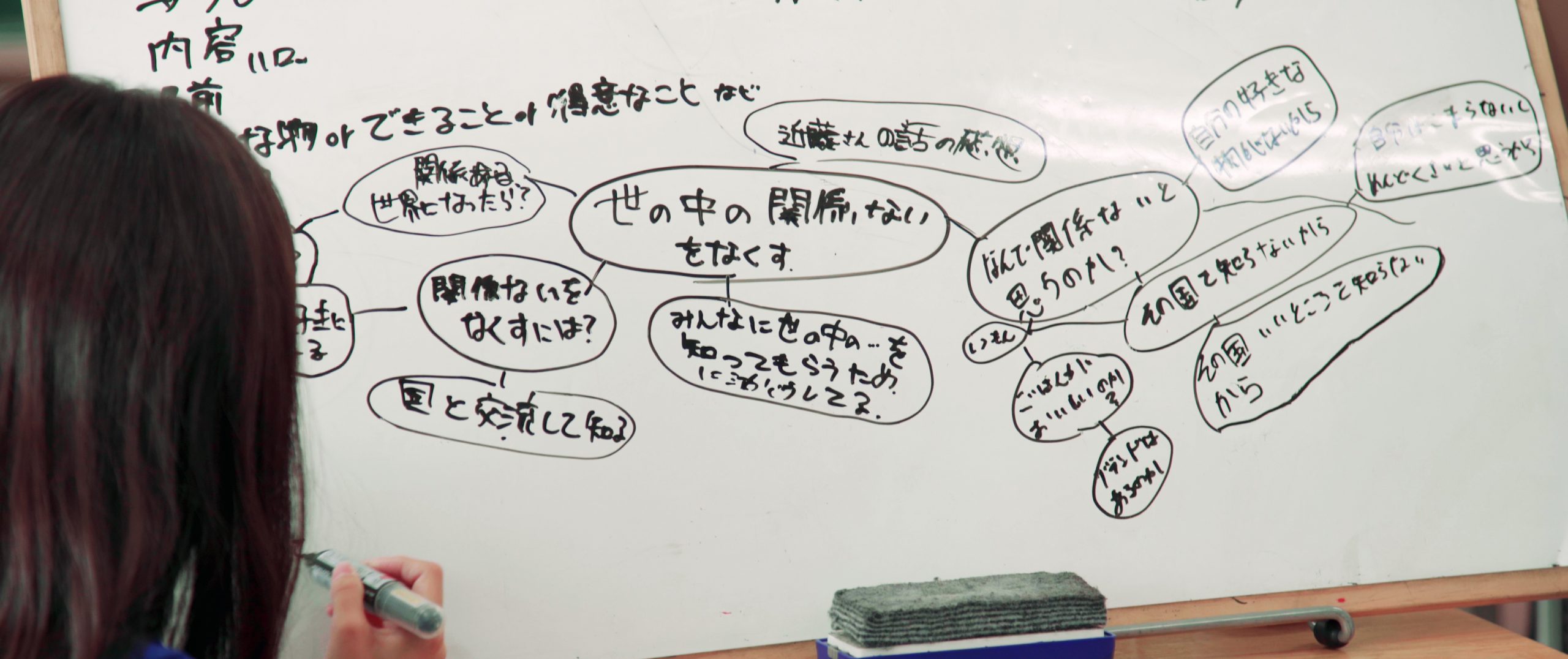
Each and every one is under various circumstances and situations, and at times thoughts may contrarily grow apart. However, it is crucial at these times that we take on these separate circumstances and move forward. Politically, individually, even familial ties, we believe it is the same.
As it was decided, we immediately took action. First things first, what message should we send, what message do we want to send? How do we feel? By recounting those thoughts that were difficult to describe in words and the feelings hard to become, we expressed those on paper.
Each children’s pure thoughts and feelings, the fragments, slowly but surely combine to create a form.
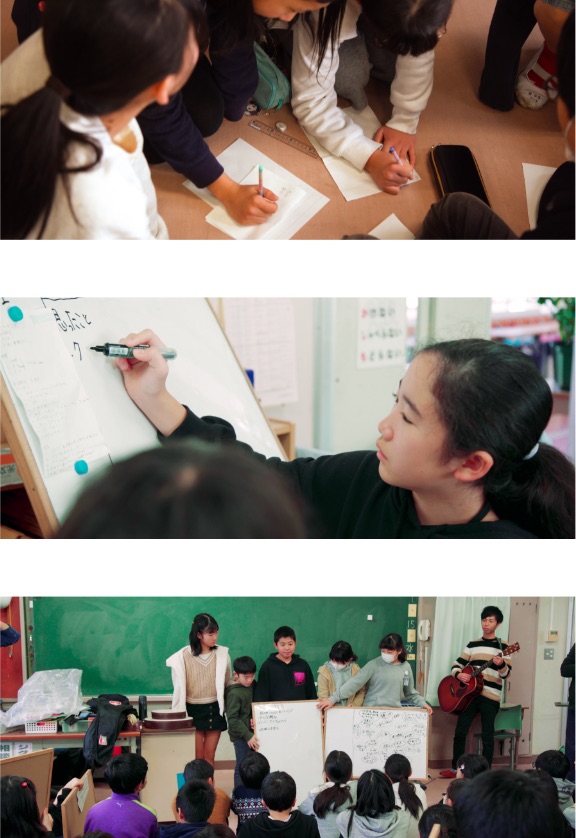
Even without direct interaction, it is still possible to connect with one another. To further the local attraction felt through the five senses, with the cooperation of Ms. Misato Okaneya, we conducted a special class. We held a cooking workshop where we cooked the traditional dis of Nepal, “Momo”.
Isn’t it similar to Gyoza? But, here it is different. Upon Ms. Misato asking, many opinions arose. By creating, feeling, smelling, and eating on one’s own, the experience of feeling with one’s whole senses was a rare encounter.
After that, upon another opportunity to introduce a certain video, there was an instance by chance where Momo was captured. At that moment, “It’s Momo!”, the children cried. It was seen that the cooking experience, greatly pulling closer the existence of Nepal, was a great success.
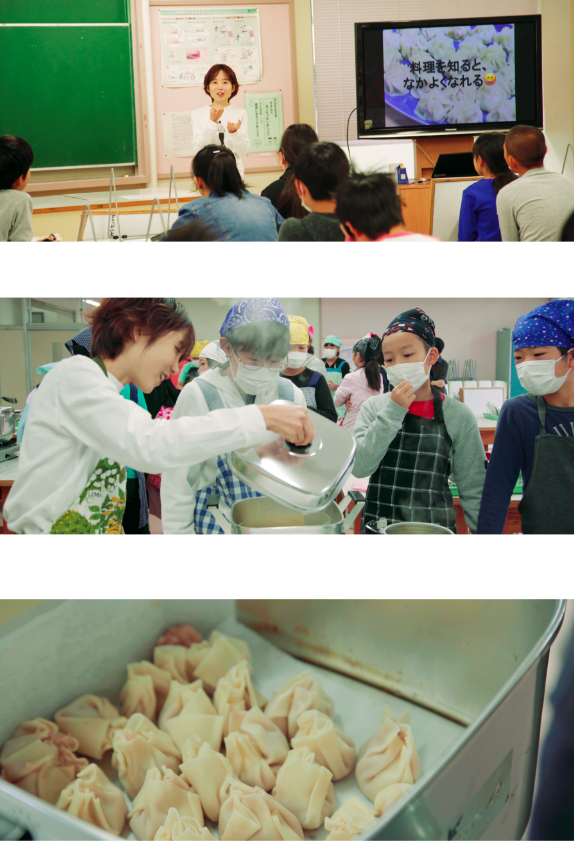
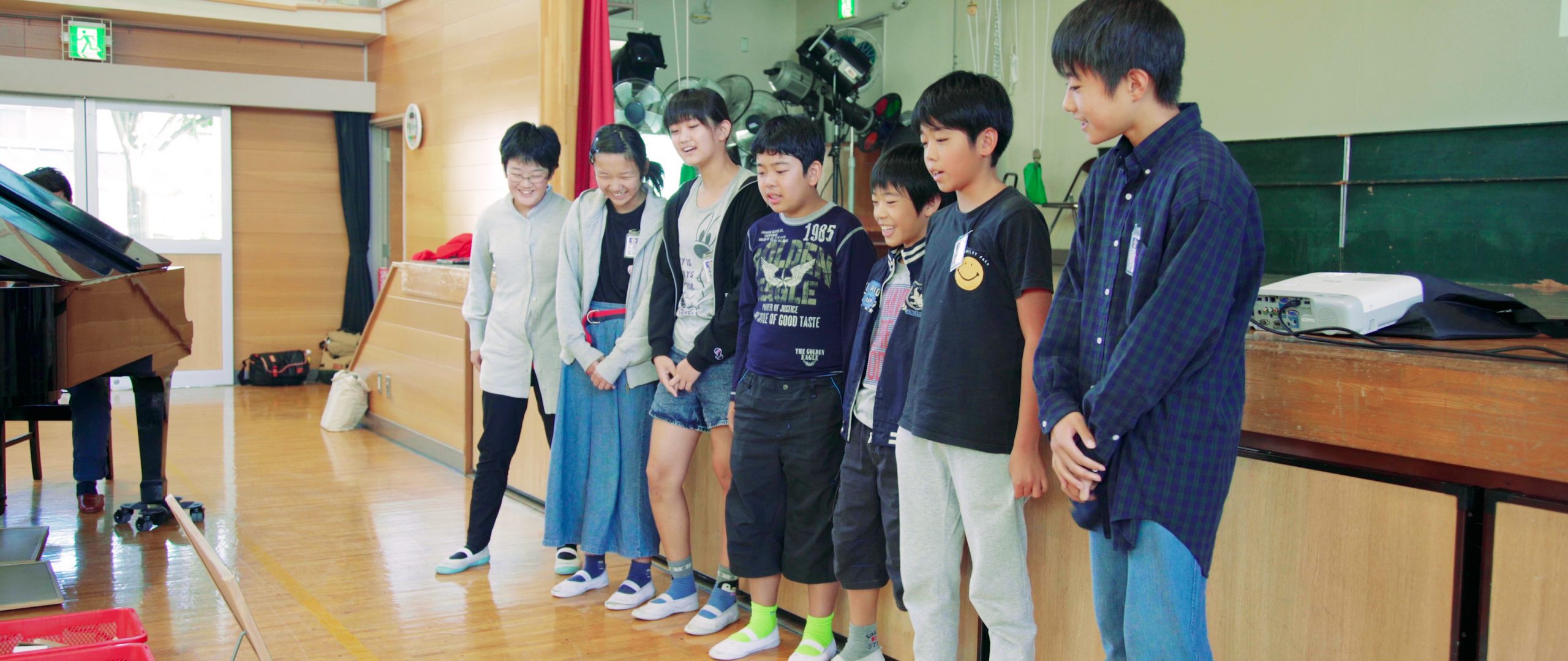
We also conducted a workshop for composing songs.
With a melody and rhythm, anything can become music. Anyone can create music.
By selecting from an array of instruments, from a piano, cajon, guitar, and tribal instruments, the children compiled lyrics with their self-made melodies and presented them.
At first, they may have been shy and without confidence, but with the continued recitals there was an air in the space that they could gradually feel “It’s possible to make songs”. There were children who approached us stating they wanted us “To make an accompaniment to the songs we made”. Before we knew, all the children had natural smiles on them.
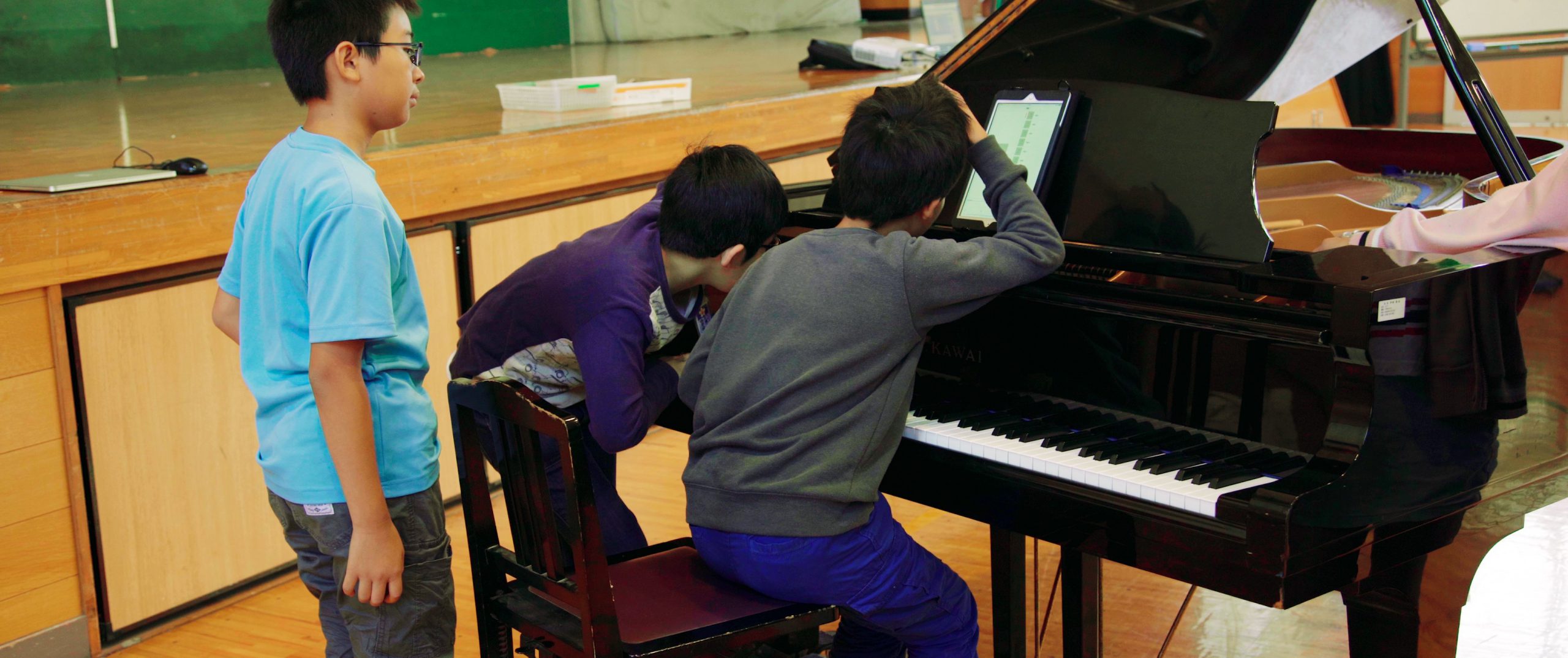
Finally, the day of composing the songs came. The goal was to create a melody and lyrics, and compile into a form of music. One song per class 1 and 2. Divided into the composing division, lyrical division, and visual division, we took to the task.
Using the basics of the lyrics we had created in advance during the workshop, first we chose the theme of the song. The word the children chose was “connection”. Along with this theme the children announced, by group, the ideas for the melody and lyrics. Even the musicians anagon took part. With facilitation by anagon and us, we would rearrange the ideas thought, and expanded on the ideas produced.
In these instances, we were greatly impressed by the power of the children. At first, ideas were somewhat limited, but as one gained enough confidence to announce, after that many ideas came flowing in. Playing along with the melody with pianos and guitars and confirming with one another “Is this what we’re aiming for?”, by hearing each and every one’s opinion we decided on the accompaniment.
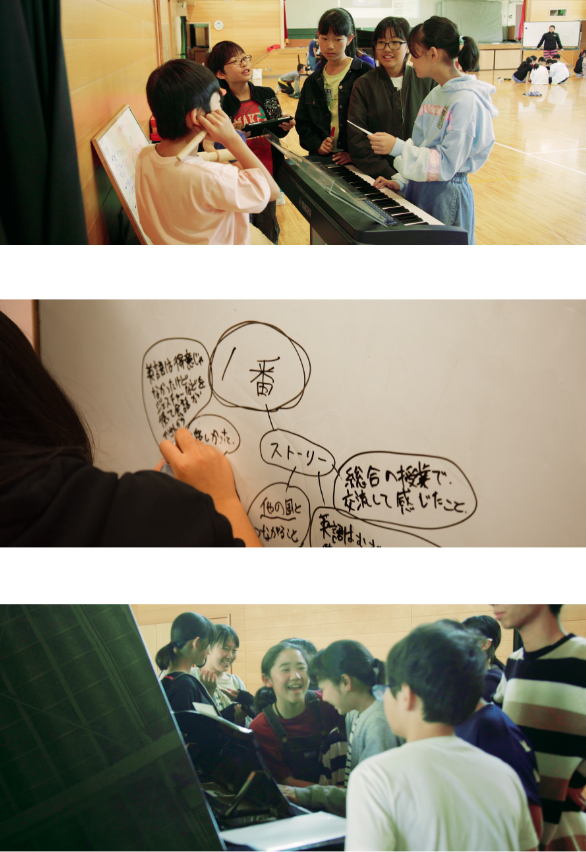
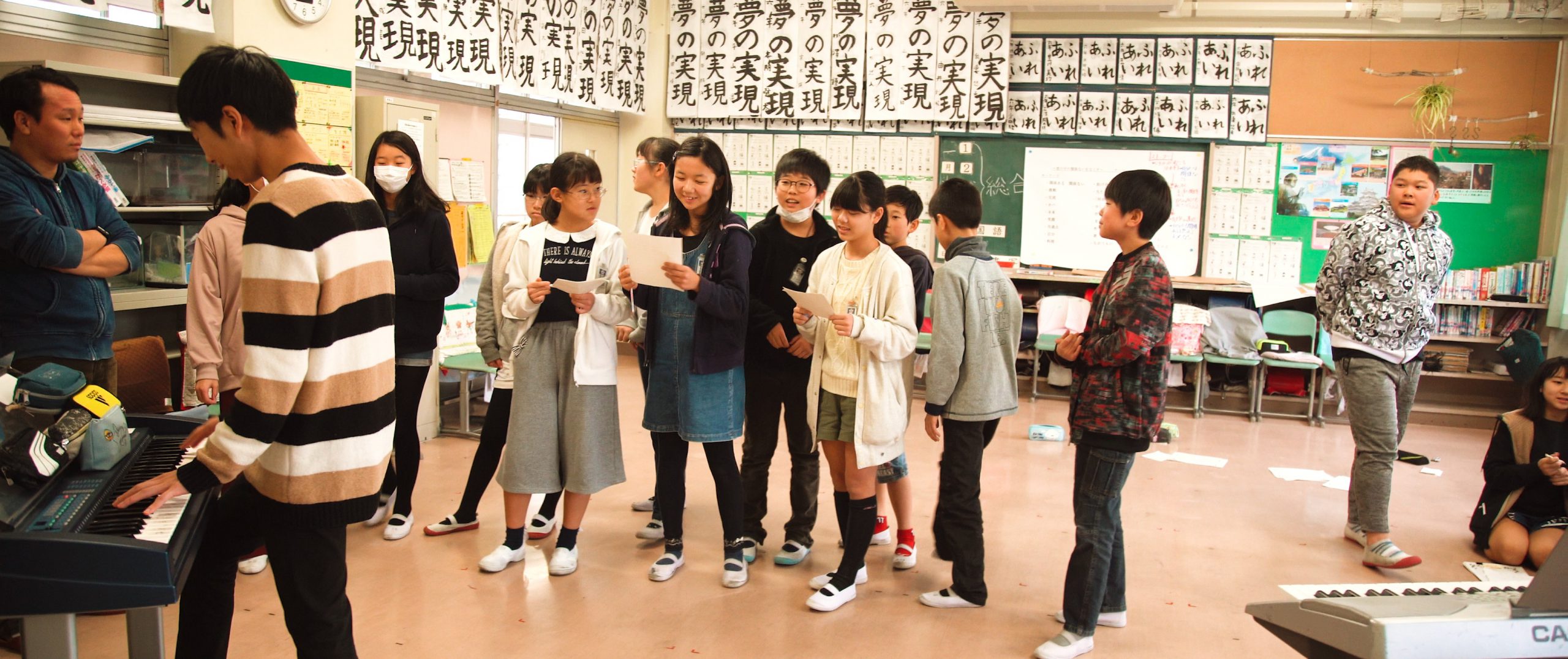
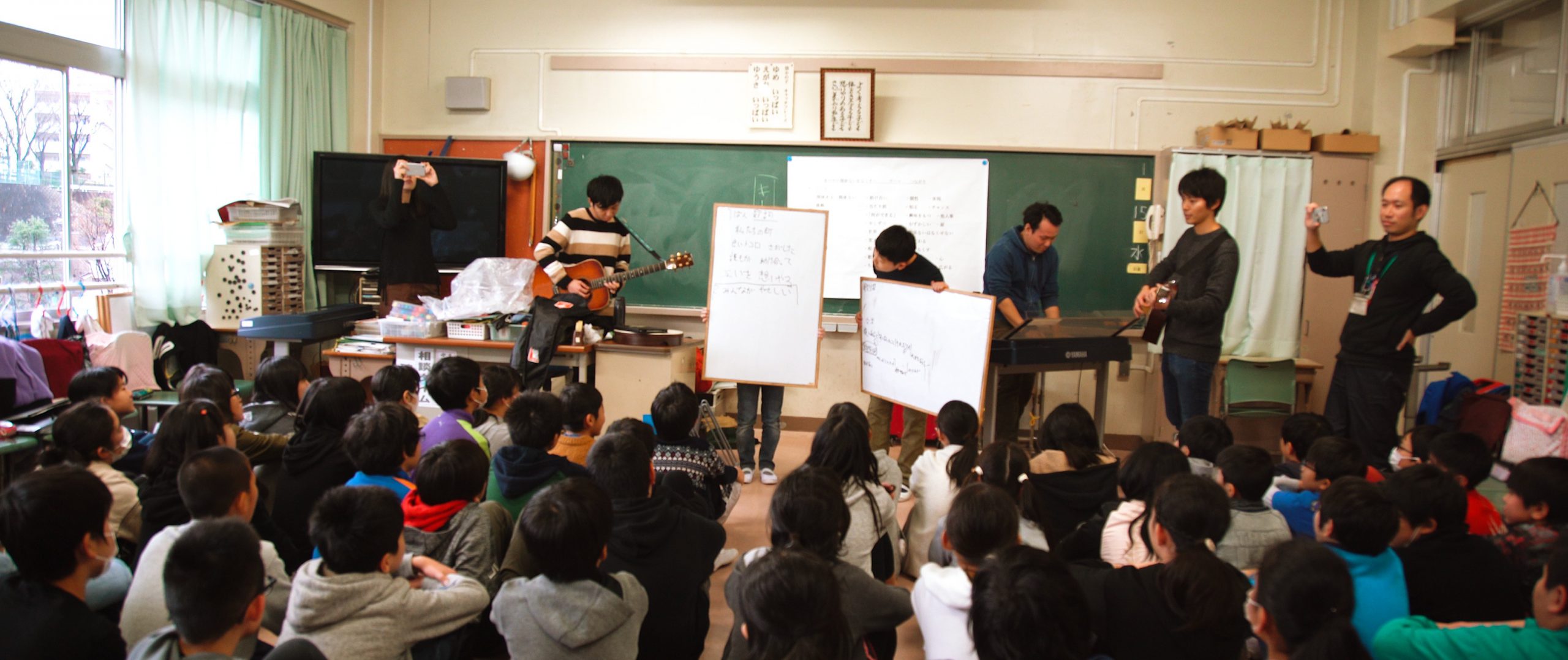
Somehow in the time of the day we completed the general melody and lyrics. Finally both class 1 and 2 announced their accomplishments. Upon listening to the other class’s song, there were exclamations of “Amazing” and “That’s so cool”. Both sides received an ovation from one another. There were even children who were humming the other class’s song in tune.
The adults also needed to show some enthusiasm. Taking home the music, and adjusting the melody and accompaniment. When struggling, receive input from the children. Through this process, finally we were “completed!”, and immediately the children took on learning and practicing the song.
After a number of days, we were invited to take a listen of the fruit of their practicing, and we were blown away. Extraordinary arrangements were made, from the chorus to the interactions of the boys and girls. Upon inquiring with the teacher, they stated that many opinions of “This is how we want it to be.” came about, and the changes were reflected in the composition. Apparently there were many aspects they felt while singing, and they couldn’t give up their specific feelings. They all individually looked like splendid musicians.

Then, next was the long-awaited recording.
The recording was not held in a studio where soundproofing and equipment were abundant, but the Fukuro Elementary School schoolhouse where they had long token their classes. Maybe outside voices may come in. Maybe the school bell would interrupt.
However, we believed it was beautiful that the natural attraction as is of the location where they had always spent their time at school would be suitable. The sounds of the surroundings would not be interrupting noise, but a “charisma”.
On the first day of recording, the novel equipment drew the curiosity of the children.
We started with class 1. They had other classes to attend, so in total we had only around 4 hours.
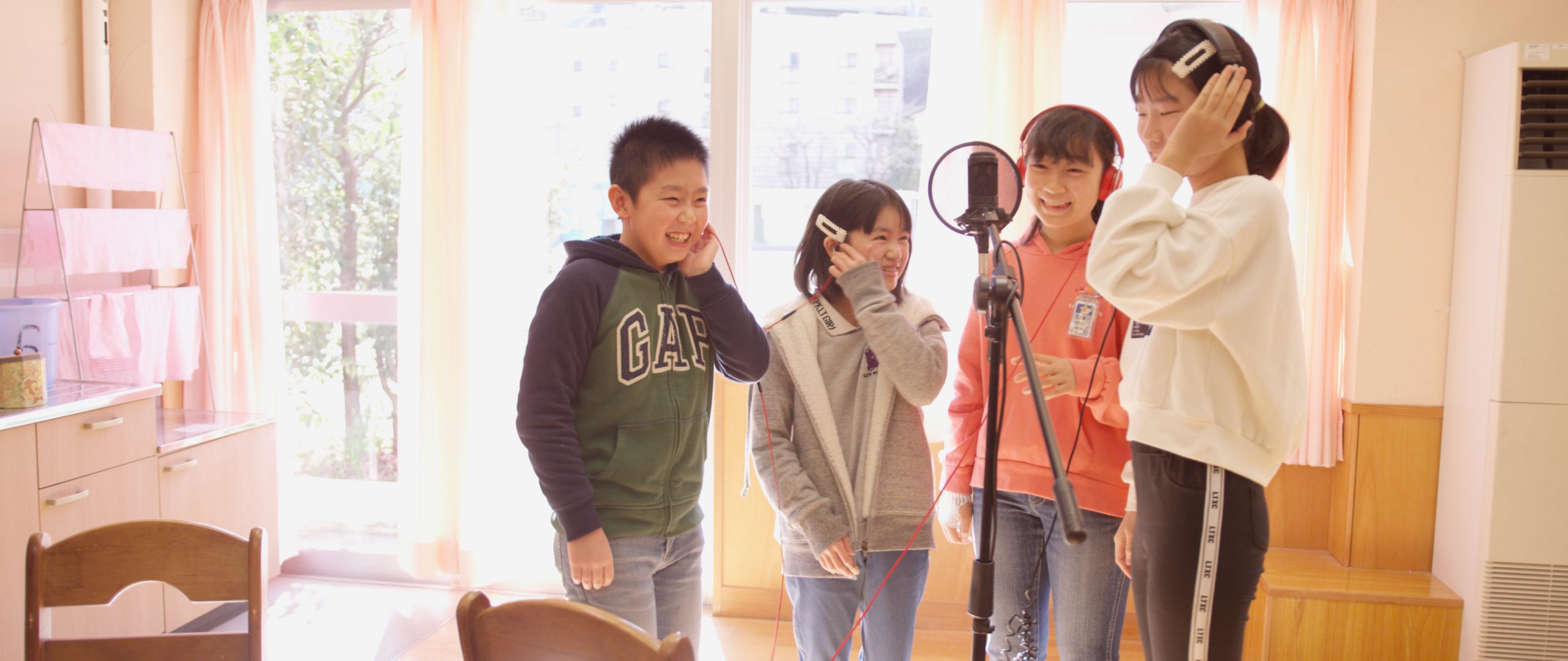
At the beginning there were many children with a sense of nervousness, but as soon as they stood in front of the microphone, they looked outstanding. Of course there were mistakes, parts where they tripped up on, singing in barely audible voices, and several other issues on top of that, but in seeing the children’s willingness to sing what they had created themselves without hesitation, we were proud of them from the bottom of our hearts.
On the first day we were unable to complete the footage of the first class after all, and the remaining students of class 1 and class 2 were delayed to the following week.
Just as this occurred, another unprecedented incident took place.
The time was February 2020, a time when COVID-19 was taking its toll in Japan with contagion reports increasing daily. Worldwide, to protect the children, movements were initiated for schools to be temporarily shut down.
Then, on February 27th, eventually even in Japan, a decision was made to call for the close of nationwide elementary, junior-high, and high schools as of March 2nd.
The scheduled second recording was set to take place on the next day of the announcement, February 28th. Coincidentally, that was virtually the last day the six-graders of Fukuro Elementary School would be attending the school before they graduated.
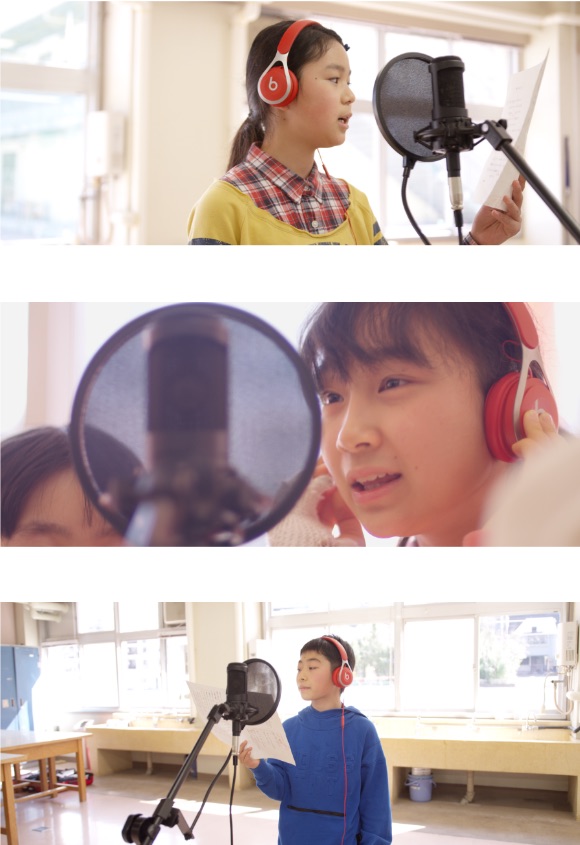
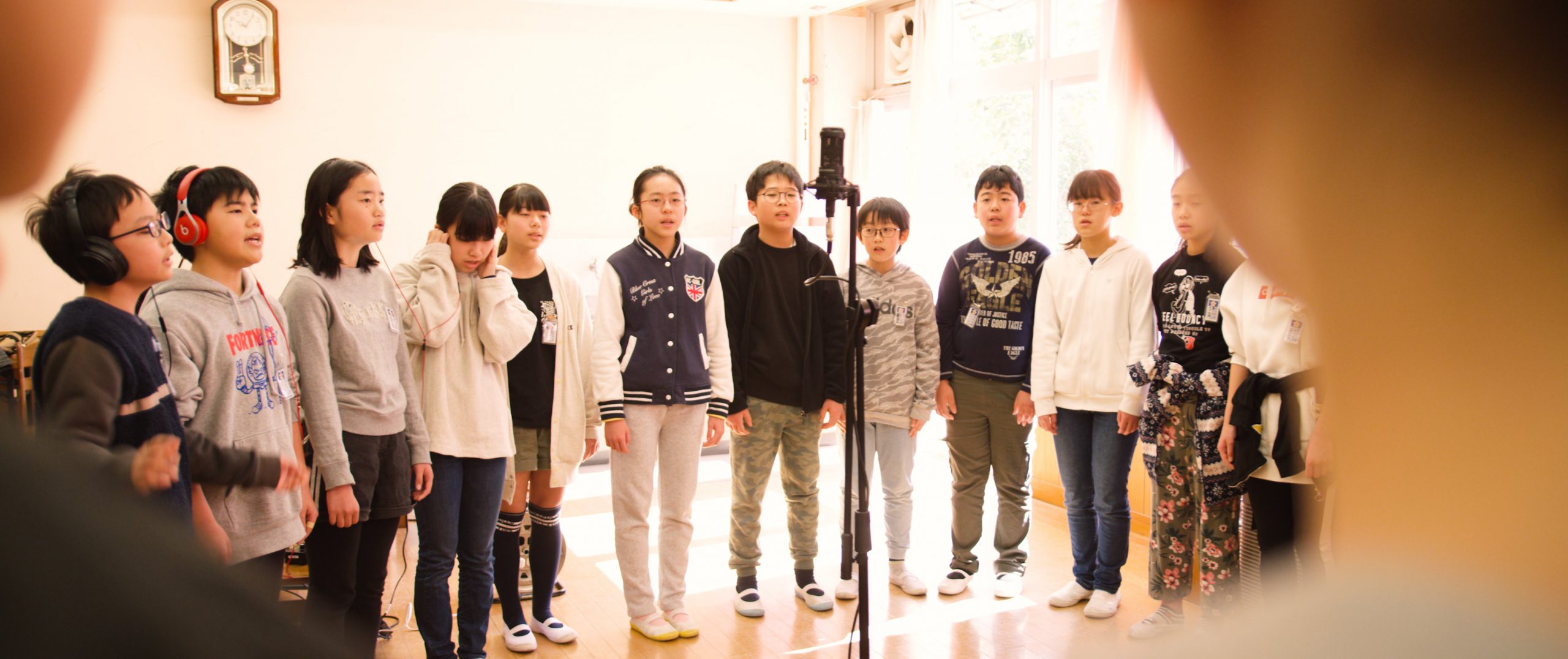
Compared to the smiles they had on the previous day, the faces were somewhat dismal and lacked joy. First thing in the morning, they had received word from the principal and their homeroom teachers that today would likely be the last they attended school. A number of girls were holding back tears. The homeroom teacher Mr. Yamshita, also looked as if he were to break out into tears.
In those various, complicated emotions throughout, recording was commenced.
Somehow, at all costs, we needed to finish shooting footage in this day. Here at the location, there was a sense of tension in the air. However, if the tension remained as is, it would make it harder for the children to sing. We were adamant in creating a soft, enjoyable environment for the children.
On the other hand, the weather proved a strong ally and was a clear and sunny day. Since we were also shooting the music video, this proved to be a massive relief.
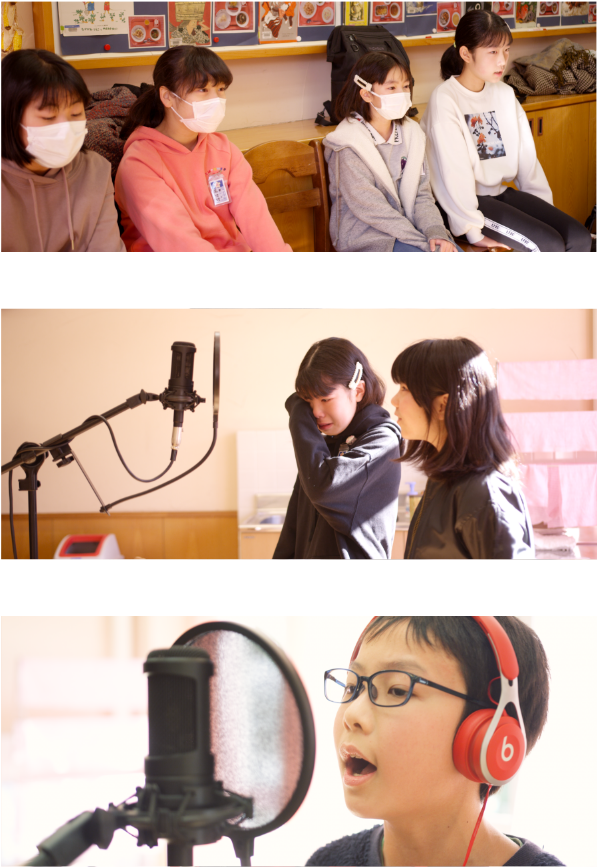
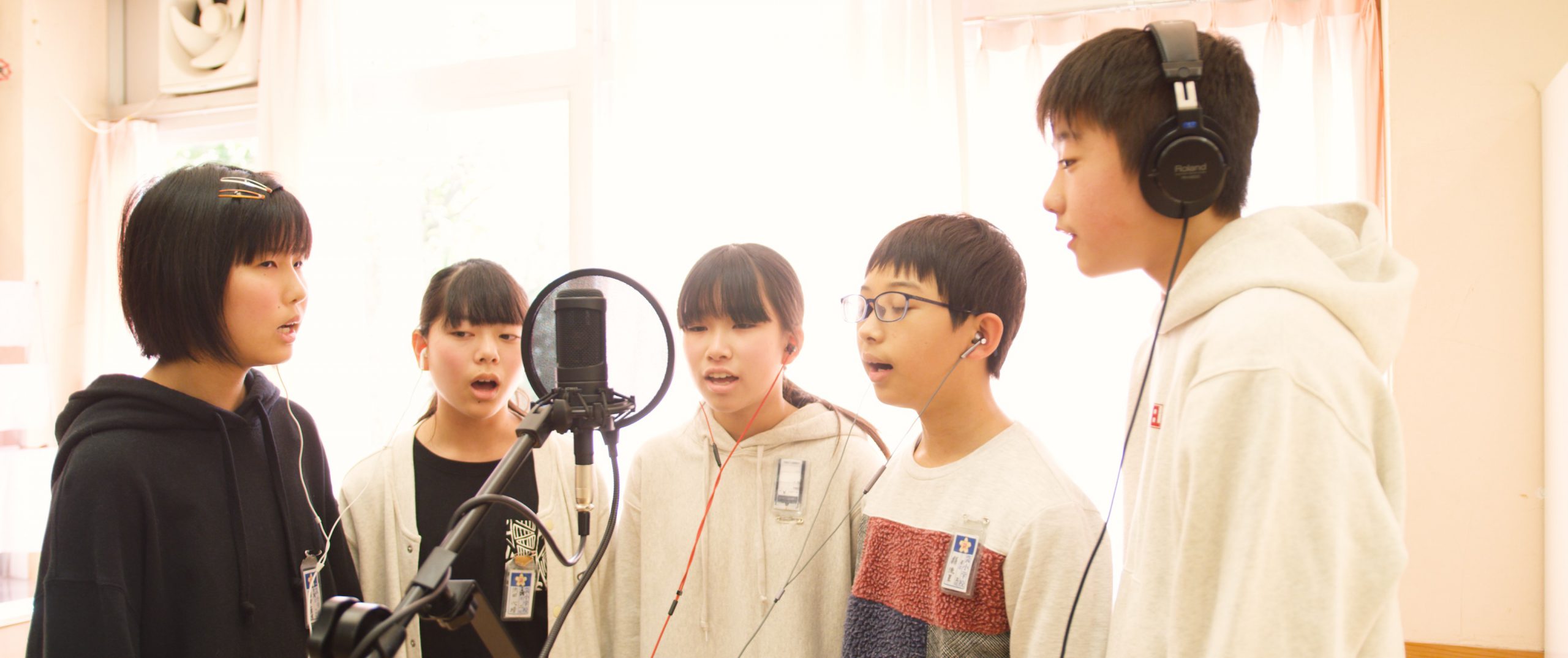
As with the recording, due to it being the second time, the staff and children were growing familiar with the how-to’s. As with previously with the school bell, when the time closed in they relayed us that “The bell is about to ring!”, and even halting it outright, and the children taught and encouraged each other. Everyone voluntarily took part, and together we made an effort to somehow complete the project.
And as fate would have it, maybe because both songs featured prominently “connection” as the theme, as we listened to the song, it felt as if the song also served as a sign of the bond and friendship between the children. T appeared as though many children felt that way, and some children began to tear up as they were singing.
Under the situation, we, as well as Mr./Ms. Yamashita, were moved to tears several times.
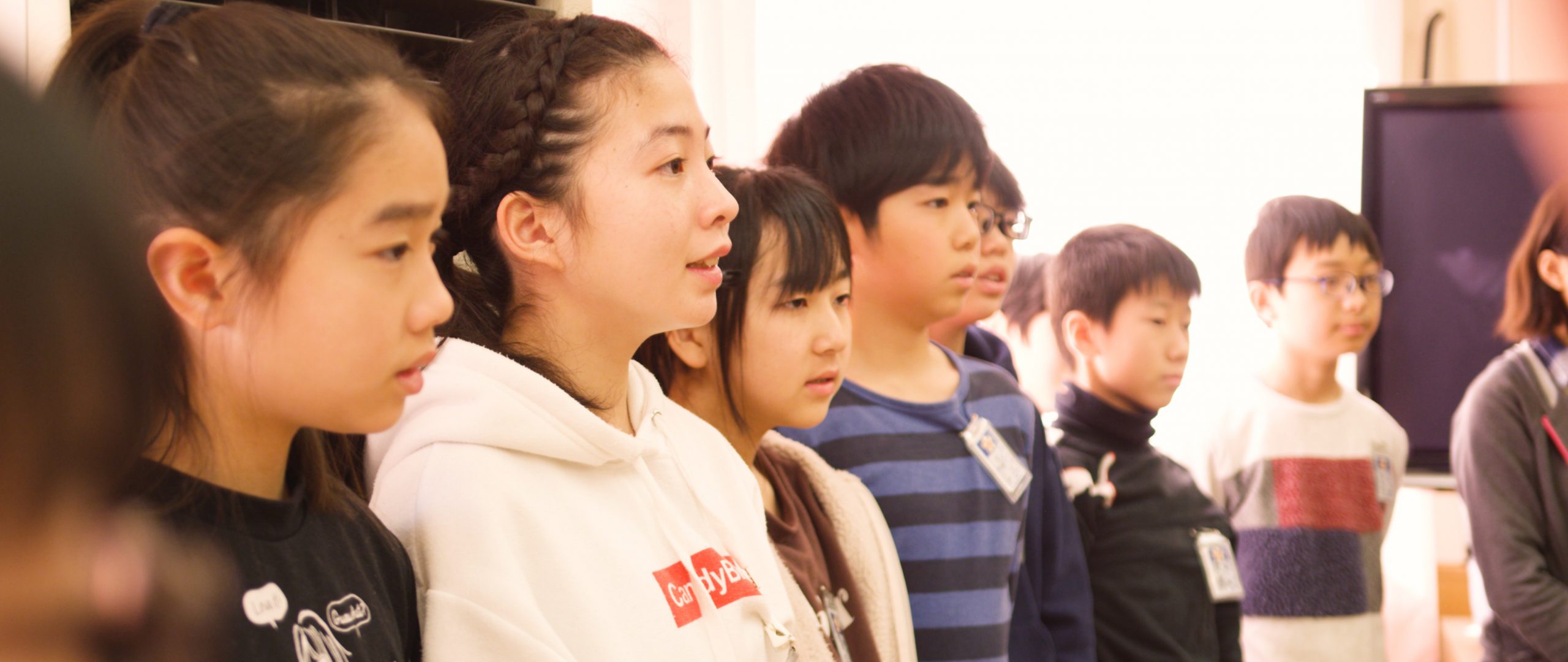
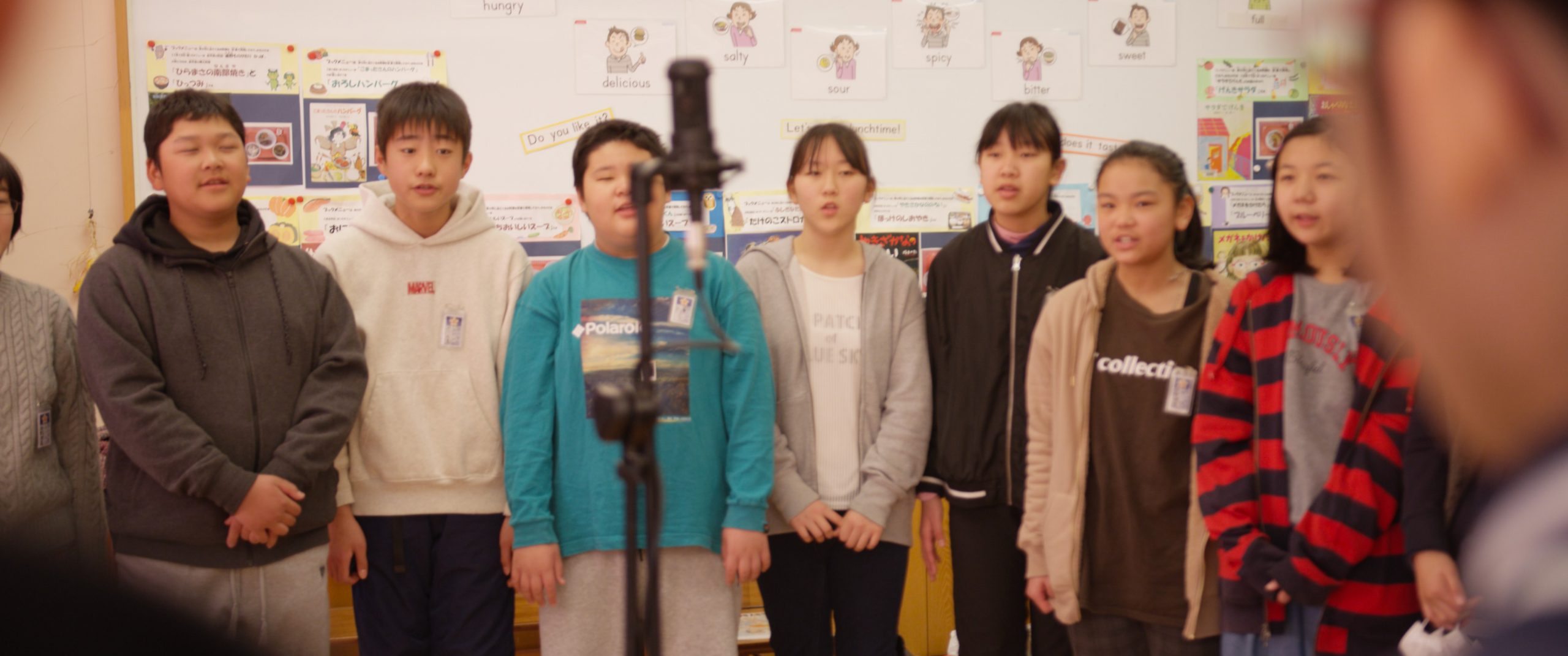
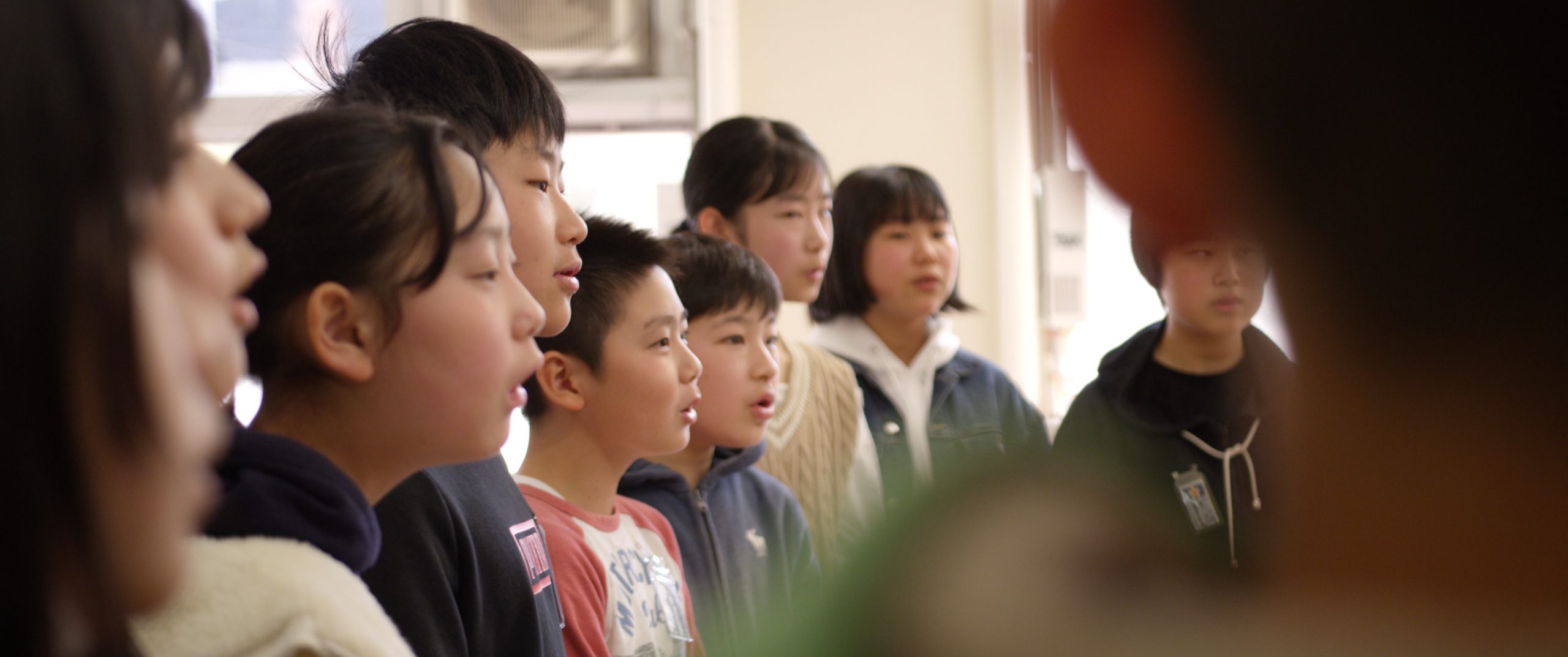
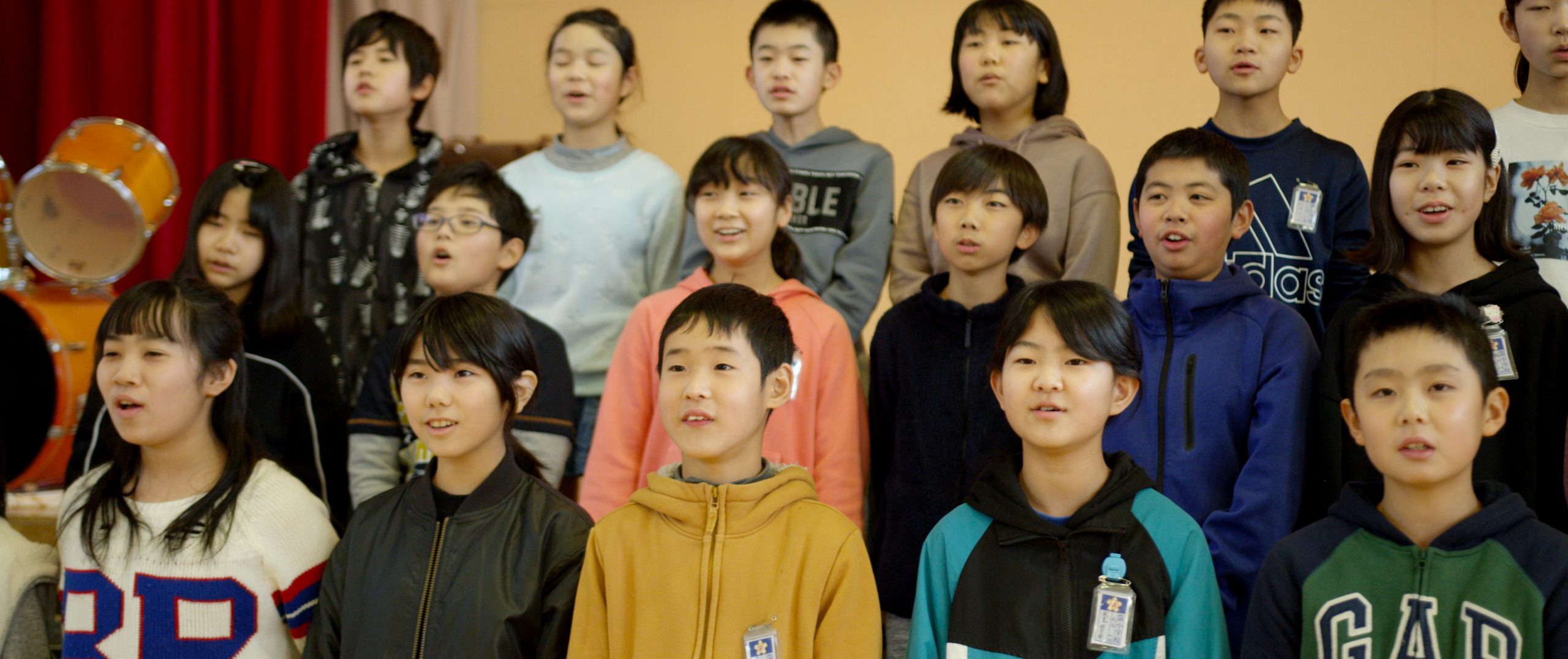
With everyone pulling their weight, the recording was successfully completed. Including the shooting of the music video, all was able to be completed. However, originally after this we were scheduled to arrange the song, engage in promotional activity with the media, think up of sales methods, create the graphics of the cover, etc., leading up to the release of the song. With the temporary close of the school, these were tasks we could not complete.
After recording, with all 70 students and teachers present, we expressed gratitude towards each other. Everyone conveyed how enjoyable the experience was with smiles all around, and even though we would be physically separated, we would undoubtedly complete this song. Until then, we promised we would keep in contact and proceed with the steps, and one day we would reunite. Waving a great goodbye, we said our farewells. Along with this, we asked for the guardians of the students if they would allow WORLD FESTIVAL to directly keep in touch with the children after their graduation, and though not all parents agreed, many gave their permission.
After that, we took home the audio recorded, and immediately took to the task of compositional arrangement process with the assistance of arrangers. Then we had he team swiftly proceed with the mixing and mastering for the completion of the audio. Prior to this, as results of discussions between the teachers, there were plans to gather the students for one last day at the school, as a form of a de facto graduation day. Until then we strived to complete the arrangements, to have them listen to the song on that very day. In the limited span until mid-March, by completing the arrange and interim mastering, we were able to successfully present the song.
Beyond that, with the now junior-high schoolers, by keeping in contact and voluntarily gathering online, we continued activity such as brainstorming the cover design. By amassing such efforts, we were finally able to meet the releasing date
“Sharing laughs with a far-away you, maybe by that alone, we connected.”
“All you feel and can think, is just beyond that door.”
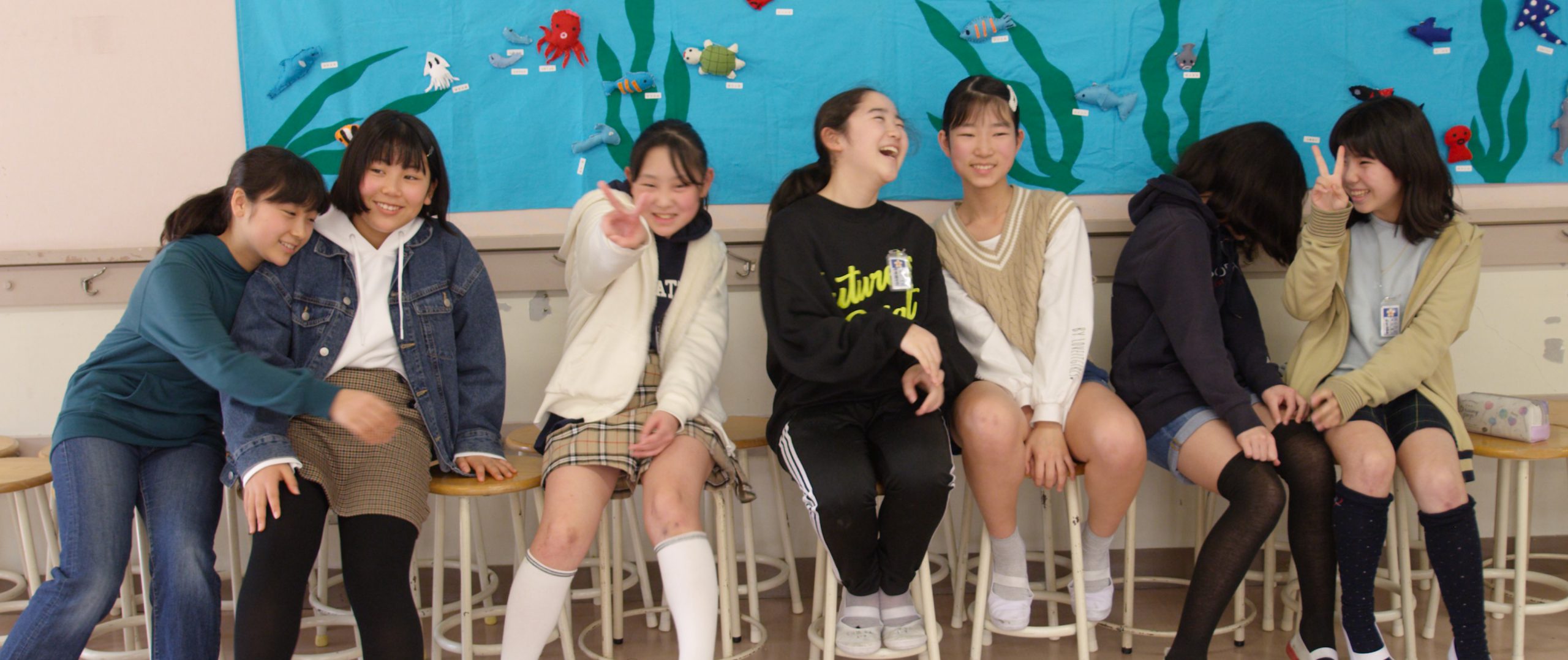
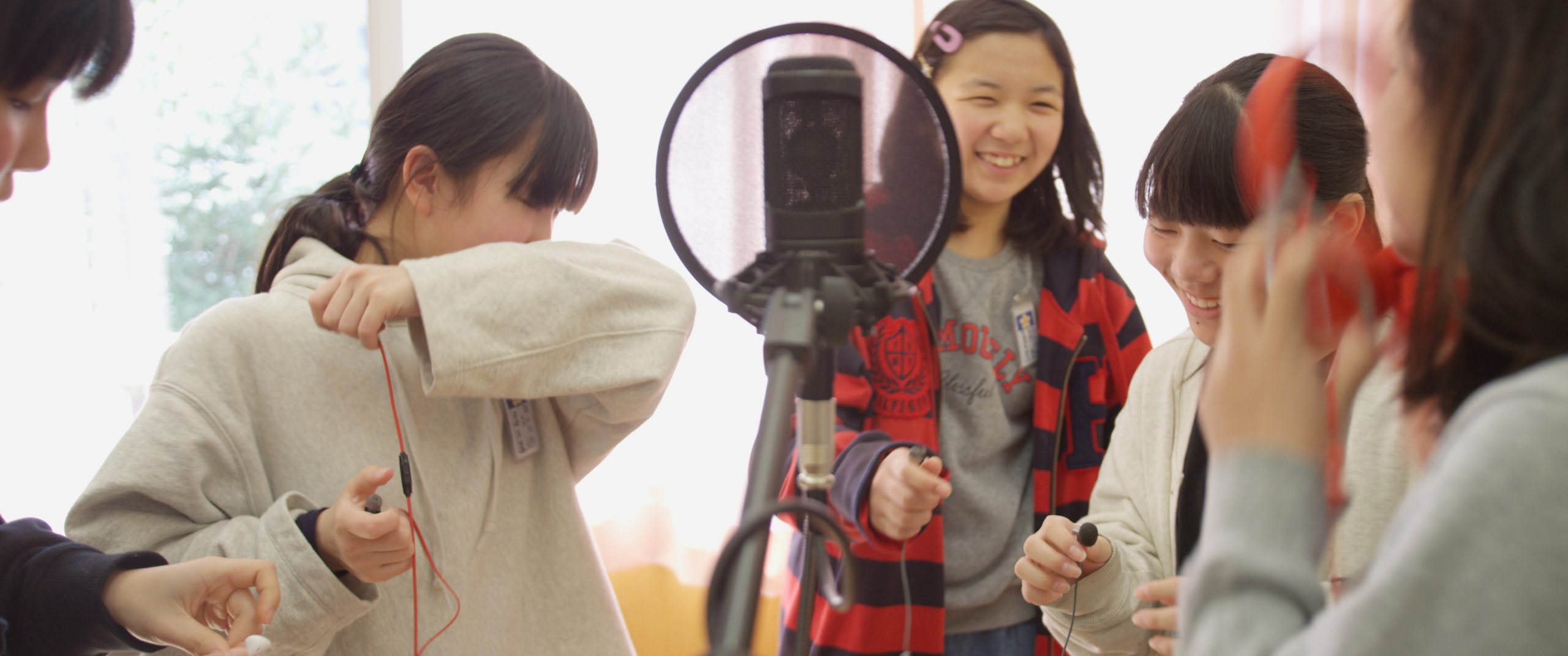
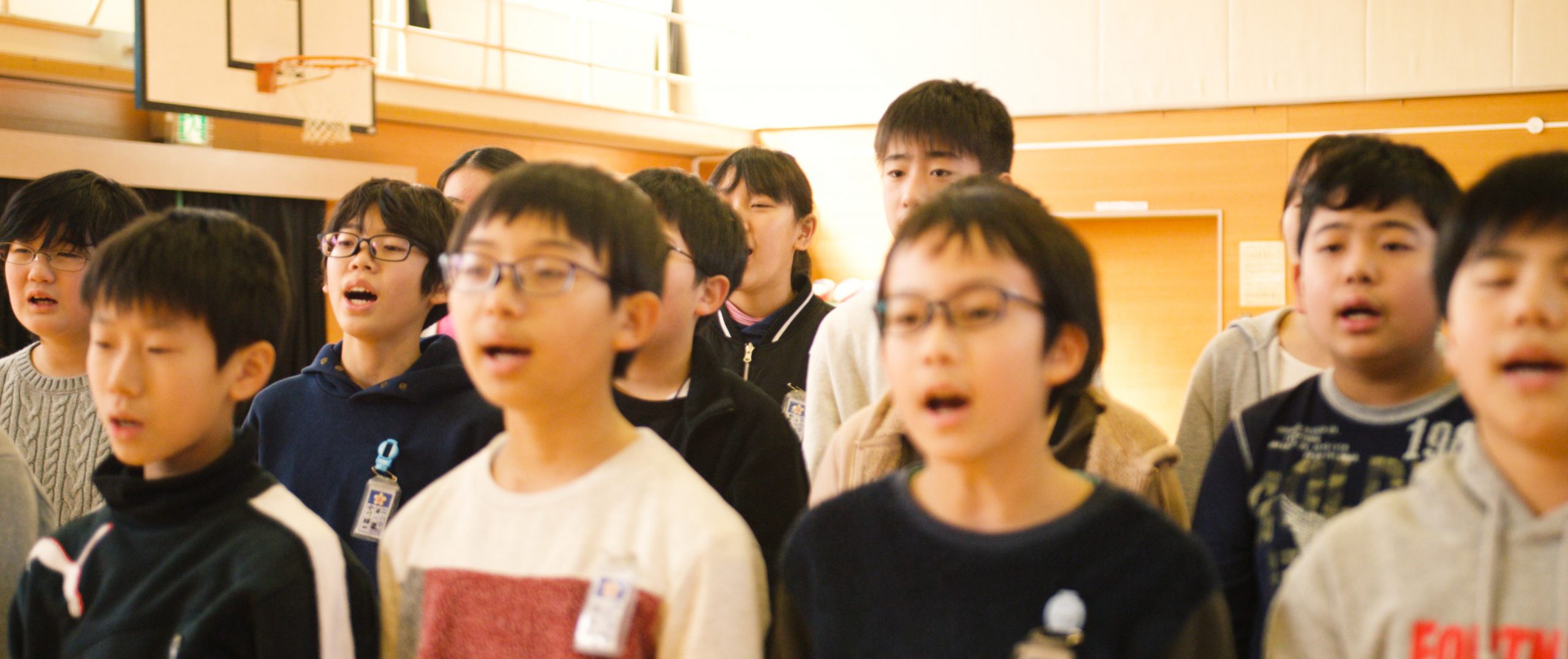
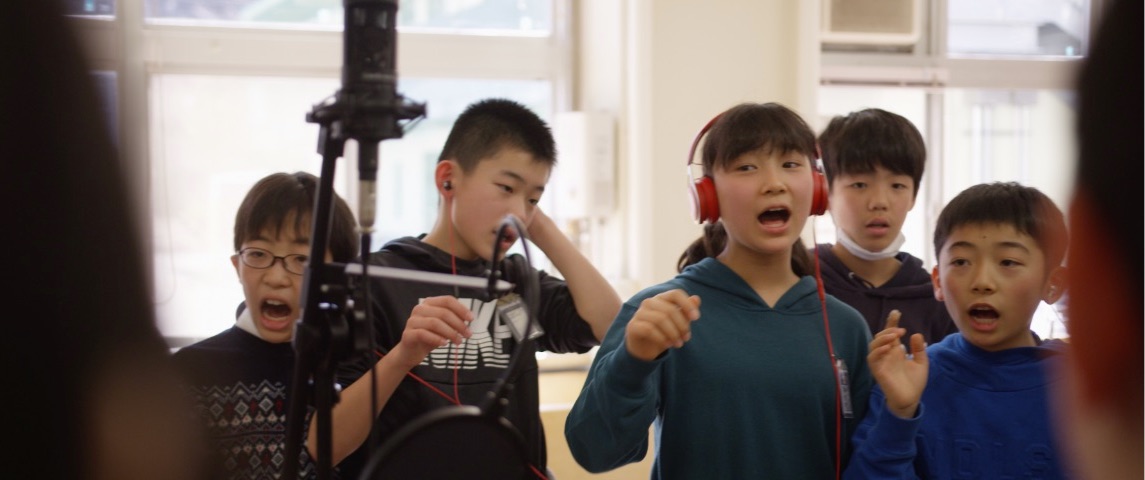
What indeed is “To eradicate “Indifference””?
At first displaying apprehensive faces, upon creating this song, we wonder how they feel now. If, by even the smallest amount, the countries of Nepal and Jordan and the locals who live there became a closer existence to them, would bring no greater joy to us.
From here on, with the help of the children who participate, we want to take on the activities of spreading this song to the world. In the hopes that this song will be delivered, and sung, throughout various parts of the world.
– Text & Photo by Yuki Kondo (Producer/Director)
– Layout & Edit by Shunsuke Noguchi
Art works by FUKUROSHO children
